Exceptional Needs TODAY
KATE SWENSON: THE LOVING TIES OF BROTHERHOOD THREE TIPS TO IMPROVE EXECUTIVE FUNCTION SKILLS



TOMORROW IS A NEW DAY
HOW CURRENT DISCIPLINARY APPROACHES FAIL KIDS IMPLEMENTING STUDENT-LED IEP MEETINGS
Employability Skill Building Disability Inclusion in The Arts Is Essential
Issue 13
SENSORYINTERIOR DESIGNS
can
1. Who is going to take care of your child after you are gone and where will they live?
2. How much will that care cost and how are you going to pay for that care?
3. Do you have a special needs trust and do you know how much money you will need in it? How are you going to fund it? How are the funding instruments taxed when you die?
4. What government benefits are available to your child and how do you apply for them?
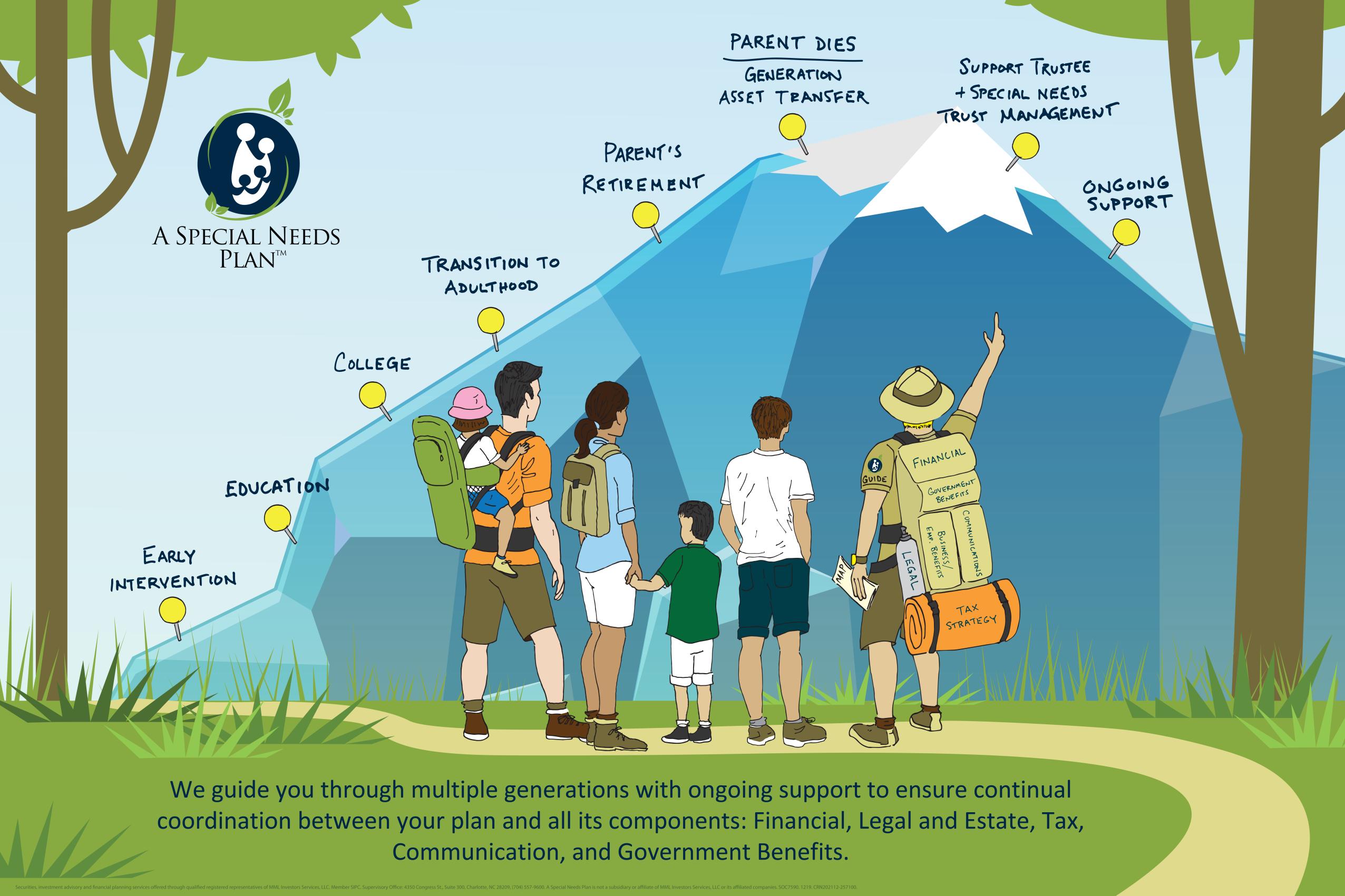
5. What is the Medicaid waiver and how do you apply for it?
6. How will you communicate your plan to family members?
Securities and investment advisory services offered through qualified registered representatives of MML Investors Services, L LC, Member SIPC. 4350 Congress Street, Suite 300, Charlotte, NC 28209. 704 -557-9600. A Special Needs Plan is not a subsidiary or affiliate of MML Investors Services, LLC or its affiliated companies.
A Special Needs Plan
help answer these questions:
www.ASpecialNeedsPlan.com
(704)
Phone
326-7910

BORN INTO AUTISM ADVOCACY: THE LOVING TIES OF BROTHERHOOD
Kate Swenson
The Founder of Finding Cooper’s Voice shines a light on the bond between her son Cooper, who has severe nonverbal autism, and his brother, Sawyer.

STORY TIME: A MULTI-PURPOSE GIFT FOR CHILDREN OF ALL ABILITIES
Dr. Ronald I. Malcolm, EdD Nurture your differently abled child’s intellectual, interpersonal, and practical development by using 10 guidelines for sharing the gift of communal reading.
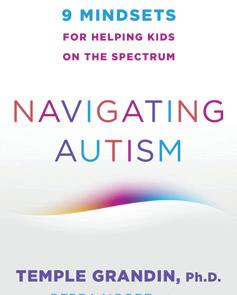
SHAPING OUR FUTURE
IT’S ABOUT TIME: DISCOVERING WHAT MATTERS TO CHILDREN THROUGH THEIR LENS
Rose Adams, OTD, OTR/L
Reflect on how you spend time with your children and uncover ways to make it more meaningful by discovering what they value most.
FIVE SENSORY SENSITIVE TIPS FOR TRAVELING WITH EXCEPTIONAL NEEDS
Ron Sandison, MDiv.
Read on for advice from a well-traveled autistic man on coping with sensory difficulties when taking a journey.
SENSORY INTERIOR DESIGN: A NECESSARY LUXURY WHEN THERE ARE EXCEPTIONAL NEEDS
Stephanie Lee Jackson
Learn how designing and managing your home environment reduces stress and sensory overload.
EXCEPTIONAL ADVICE FROM MESHELL HEALING FROM PRECONCEIVED STEREOTYPES AND INTRAFAMILY PREJUDICE

Meshell Baylor, MHS
Accept there is no shame in protecting an exceptional needs loved one from relatives who refuse to accept them as they are.
SAFETY GOALS WITH NICOLE
HOW CAN WE HELP CHILDREN WITH DISABILITIES, EMOTIONALLY?


Nicole Moehring
Learn ways to teach children how to identify and regulate emotions early in life, as well as approaches for preventing or alleviating meltdowns.

HOW TEACHERS CAN DEVELOP POSITIVE LEARNING ENVIRONMENTS FOR NEURODIVERSITY
Karen Kaplan, MS
Nurture student learning and engagement by getting to know individual classroom needs, supporting those needs, and providing both visual and auditory instructional content.

THE BENEFITS OF REMOTE MICROPHONE USE FOR AUTISTIC INDIVIDUALS
Dr. Dawn Aerts
Learn the potential uses of a remote microphone, including as assistive tech for audio processing difficulties caused by neurodivergence.
KATE MAKES IT GREAT!
ALL ABOUT STIMS: SELF-REGULATION FOR EXCEPTIONAL NEEDS INDIVIDUALS
Kate C. Wilde
Learn more about stimming and engaging when sensory input needs to be regulated.
43 NATURE NOTES
THE HEALING NATURE OF HUMOR AND WHIMSY IN CHILDREN’S OUTDOOR SPACES
Amy Wagenfeld, PhD, OTR/L, SCEM, EDAC, FAOTA
Implement fun and silliness in outdoor spaces to help your soul rejuvenate.
TAKE CARE WITH MENTAL HEALTH: SPECIAL NEEDS CARETAKERS NEED SUPPORT
Carol Tatom, BA.HSE, CHW Recognize the necessity of specialized mental health services for the vulnerable and underserved parents/ guardians of differently abled individuals.
Issue 13 07
Contents
32 29 26 20 12 15 35 38 46 23 4 | Exceptional Needs Today | Issue 13
OUR EXCEPTIONAL NEEDS JOURNEY: HOW MOVING TO ANOTHER COUNTRY CREATED A CALMER LIFE
Dr. Mary H. Jones, MD, FAAP
Discover how a family of seven benefitted from a drastic location change and consider what modifications you could make in your own life to create calm.
POSITIVE VOICES
KRYSTIAN SHAW AND GIVING BACK: PROMOTING COMMUNITY INCLUSION AND ALL ABILITIES
Amy KD Tobik, BA
Learn how Krystian Shaw gives back to society through his newsletter for all abilities, promoting awareness and success stories.
EMPLOYABILITY SKILL BUILDING WHEN THERE ARE LEARNING DISABILITIES
John Civita, MS Ed
Discover the most prominent barriers in the job market for individuals with learning disabilities and five key strengths to develop to improve employability.
EXCEPTIONAL BOOKS REGULATION AND CO-REGULATION: ACCESSIBLE NEUROSCIENCE AND CONNECTION STRATEGIES THAT BRING CALM INTO THE CLASSROOM
Learn the keys to bringing emotional stability to your home and classroom through balanced regulation and coregulation in this excellent new book by Ginger Healy, MSW, LCSW.
THE SCHOOL-TO-PRISON PIPELINE: HOW CURRENT DISCIPLINARY APPROACHES FAIL KIDS
Guy Stephens
Discover how some current methods for managing behavior in children can cause more harm than good.
FIVE REASONS DISABILITY INCLUSION IN THE ARTS IS ESSENTIAL
Dr. Rhoda Bernard, EdD
Acknowledge the unique communication, social, and creative benefits that make access to the arts a fundamental human right in the author’s eyes.
THE FRIENDSHIP & DATING DUO STOP BUILDING BARRIERS TO SOCIAL SUCCESS WHEN THERE IS AN AUTISM DIAGNOSIS
Jeremy Hamburgh and Ilana Frank
Find out ways to pursue multiple priorities at once and work towards
dismantling procrastination methods so you can stop putting off new social adventures.
A PRACTICAL GUIDE TO IMPLEMENTING STUDENT-LED IEP MEETINGS
Carli Haskovec, MA, Ed.S. Enjoy a teacher’s recount of how she implemented student-led IEP meetings saw students’ confidence blossom as a result.
KEY2ENABLE TECHNOLOGY EMPOWERS LEARNING WHILE ENCOURAGING INCLUSION
Richard Schreiber
Learn about a company aiming to bridge learning gaps between all neurotypes and exceptional needs individuals through innovative assistive technology.
ALL THINGS OT DECIPHERING HANDWRITING DIFFICULTIES IN EXCEPTIONAL NEEDS INDIVIDUALS
Laura A. Ryan, OT, OTR, OTD Learn how our various sensory systems work together and how problems with one system can affect the body’s interaction with the environment.
MANAGING YOUR CHILD’S ASTHMA IN SCHOOL
Dr. Ronald I. Malcolm, EdD Actively enhance your child’s school experience, independence, and general safety regarding asthma management by implementing advice from an experienced parent.
THREE TIPS TO IMPROVE EXECUTIVE FUNCTION SKILLS FOR TOMORROW’S TASKS
Dr. Chris Abildgaard, EdD, LPC, NCSP, NCC
Discover the importance of executive function abilities to follow daily care routines and self-management.
FINANCIAL FOCUS GUARDIANSHIP—IS IT RIGHT FOR YOUR EXCEPTIONAL NEEDS FAMILY?
Ryan F. Platt, MBA, ChFC, ChSNC, CFBS
Make an informed decision on whether legal Guardianship or an alternate form of decision-making support is appropriate for your young person with exceptional needs.
EXCEPTIONAL NEEDS TODAY
Exceptional Needs TODAY
Our mission is to educate, support, and energize families, caregivers, educators, and professionals while preparing all families for a healthy future.
exceptionalneedstoday.com
Founder/Publisher
Amy KD Tobik
Lone Heron Publishing, LLC
Magazine Staff
Editor in Chief: Amy KD Tobik, BA
Editorial Assistant: Margo Marie McManus, BS
Content Writer & Copyeditor: Emily Ansell Elfer, BA Hons, Dip
Social Media: Dione Sabella, MS

Graphic Designer: Patrick Gwayi, HND, MA
Professional Consultants
Chris Abildgaard, EdD, LPC, NCSP, NCC
Debra Moore, PhD
Brett J. Novick, MS, LMFT, CSSW
Annette Nuñez, PhD, LMFT Ron Sandison
Amy Wagenfeld, PhD, OTRL, SCEM, EDAC, FAOTA
Contact Us editor@exceptionalneedstoday.com advertising@exceptionalneedstoday.com
submissions@exceptionalneedstoday.com editorial@exceptionalneedstoday.com
Exceptional Needs Today is published four times a year and distributed digitally to readers for free by Lone Heron Publishing.
Disclaimer: Advertised businesses and products are not endorsed or guaranteed by Exceptional Needs Today, its writers, or employees. Always follow medical advice from your physician.
50 87 92 74 77 82 58 60 63 67 53 55 70 Exceptional Needs Today | Issue 13 | 5
From the Editor’s
Are there days when you feel like crawling back under the covers? There’s no doubt that life can feel overwhelming at times. Whether you’re a caregiver, professional, or self-advocate, we all have moments that seem almost impossible to overcome. While daily struggles can be frustrating and all consuming, we mustn’t forget to recognize the joyful moments, no matter how small. Beautiful moments are happening around us if we look closely enough. We must trust that tomorrow is a new day filled with possibilities!
When I think about savoring life’s moments—the joy—I immediately think of author, advocate, and mother of four Kate Swenson. I have spent time with Kate, the woman behind Finding Cooper’s Voice, at a few professional events and witnessed how wonderfully she connects with and guides families. Her positivity and enthusiasm are contagious. You don’t want to miss Kate’s thoughtful piece, Born Into Autism Advocacy: The Loving Ties of Brotherhood, as she shines a light on the sibling dynamic when there are different needs. In her piece, Kate shares the intense and beautiful bond between 12-year-old Cooper, who has severe nonverbal autism, and his 10-year-old brother, Sawyer. She describes their love for one another as fierce and loyal. Kate has a unique way of reminding us to look for and revel in the joy life can bring.
Another writer who brings light to the differently abled community is columnist Rose Adams, OTD, OTR/L. Be sure to read her piece, It’s About TIME: Discovering What Matters to Children Through Their Lens, as she reflects on the ways adults spend time with children and how to make the time more meaningful by discovering what they value most.
Finding ways to cope with life’s stressors is vital to mental well-being. Mental health (emotional, psychological, and social well-being) is crucial at every stage of life, according to the Centers for Disease and Control. Exceptional Needs Today columnist Nicole Moehring has written a fantastic piece called How Can We Help Children with Disabilities, Emotionally? where she provides advice on teaching children how to identify and regulate emotions early on, as well as approaches for alleviating meltdowns.
Caregivers won’t want to miss Take Care with Mental Health: Special Needs Caretakers Need Support. In this article, Carol Tatom, BA.HSE, CHW stresses the need for specialized mental health services for the vulnerable and underserved parents and guardians of differently abled individuals.

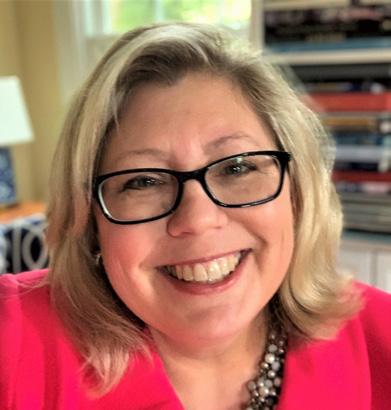
We all know prejudice and discrimination can be barriers to social inclusion. Not feeling loved, valued, and accepted by family when you or your child has different abilities can be
very isolating. Meshell Baylor, MHS, says there is no shame in protecting a loved one from relatives who refuse to accept them or will not relinquish harmful beliefs surrounding exceptional needs. Be sure to read her piece, Healing From Preconceived Stereotypes and Intrafamily
Prejudice, as this inspired mother of four children, two of whom are on the autism spectrum, provides straightforward advice on the value of finding people who see us and treasure us for who we are.
This issue is jam-packed with 25 articles, including content on employability skill building when there are learning disabilities, the value of communal reading with children of all abilities, ways to develop positive learning environments to accommodate neurodiversity, and tips to improve executive function skills. We also look at why stimming is important when sensory input needs to be regulated, designing and managing your home environment to reduce stress and sensory overload, plus so much more.
We want to thank our contributors, advertisers, and subscribers who continue to support and play an integral part in our award-winning magazine. Let’s continue to work together to bring awareness, acceptance, and inclusion.
Tomorrow IS full of possibilities!
Best,
Amy KD Tobik
Editor-in-Chief, Exceptional Needs Today Publisher, Lone Heron Publishing
PLEASE JOIN OUR EXCEPTIONAL COMMUNITY TOMORROW IS A NEW DAY 6 | Exceptional Needs Today | Issue 13
Desk
Born Into Advocacy:

Autism
The Loving Ties of Brotherhood
By Kate Swenson
Exceptional Needs Today | Issue 13 | 7 MY WORD
A letter to my younger brother, written by my mom:
Hey brother,
I’m hoping someday I can say this all to you. But there is a chance I might never be able to…I’m hoping that when you are older, you will read this and understand.
I know I confuse you. I’m so loud. I flap my arms. I don’t notice toys. Or play sports. Or like to leave our house.
I don’t play like you. I have never ridden a bike and I don’t care at all about hockey. And I know that really confuses you. But you don’t play like me either.
Sometimes I feel like you look right past me. But I guess I do the same thing to you, too. Mom says we seem to live on different planets and that we crash into each other every now and then.
You don’t make sense to me, Sawyer. I’ve overhead Mom saying she wishes more than anything that we could be closer.
You think I’m loud, Sawyer? And that my noises are weird? You should hear what you sound like to me. You make shooting noises and dance to weird music and argue with Mom and Dad about dinner time. I try to cover my ears. I try to ignore you. But sometimes I can’t.
Sometimes when I get so frustrated, I hit you. Never anyone else. And you hit me back. We wrestle a lot like brothers do. Mom says it sounds like an earthquake when we go at it.

You are my safe space though. You are my brother.
I know you tease me sometimes. I know your friends do, too. I’m like the annoying little brother…except I’m two years older. I wreck your forts. And smash your Legos. I’m always around when you and your friends are trying to play.
I eat your Nerf Gun Bullets. And follow you around. I like to sit near you and your friends, but then I get really nervous because I don’t know what I’m supposed to do. I don’t understand what you are playing so I just laugh and roll and run.
I know you think Mom loves me the most. Because I take up so much of her time. But she loves you just as much. I see the way she is so proud of everything you do. I can’t do most of the things you do. So, I’m glad she has you, brother.
When you look back on our relationship, I want you to know that you mean so much to me. Even though I don’t show it in the typical way. But I’m hoping that someday, you’ll take notice.
8 | Exceptional Needs Today | Issue 13 MY WORD
I’m hoping that someday, I can learn to go and do things with you. I hope that when you leave for college you will come back and visit me. I hope you know how hard I try to make sense of your confusing world.
I’ve been carrying a picture of us around for 11 days now.
I normally only carry pictures of trains and boats. And Mom and Grandma. I like baby pictures, too. But rarely anyone or anything else. And I only carry them for a few moments at a time before I shove them under a couch or behind a bed.
I never seem to get too attached to any one photo, which drives Mom and Dad crazy. You know that.


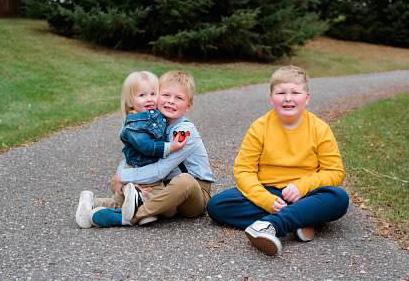

Mom is the only one who noticed that a picture of you and me is my favorite. I know it confuses her because I don’t really seem to care about spending time with you. Or acknowledge you. But this one makes me feel safe. I like that we are hugging. You are paying attention to me and I’m paying attention to you.
I’ve been sleeping with this photo for a week now. I wish you’d notice. I love how we look so happy together. It’s my favorite.
If in years to come, I’m still not able to tell you I love you, please know that this is it.
I’m showing you. I’ve been showing you all along.
You are my safe space, brother.
“Sawyer” was the second word I ever learned to say. I was nine years old, brother. I said “Mom” first.
And then…“SSS-AW-ER.”
I ask for you the most, brother.
Love, Cooper
MY WORD Exceptional Needs Today | Issue 13 | 9
One of the elements of our life I love to shine a light on the most is the sibling dynamic. My name is Kate, and I am a mom to four amazing kids and the voice behind Finding Cooper’s Voice. My oldest, Cooper, has a diagnosis of severe nonverbal autism. When he was diagnosed at age three, his younger brother Sawyer was just turning one.
They grew up together. Neither of them knows a life without autism.
In the beginning, like most younger siblings, Sawyer fell in love with his older brother. He crawled after him. Then walked, then ran.
I could see the confusion on Sawyer’s face from a very early age. Why didn’t his brother want to play like him? Why did he seem to ignore him?
And then, as time went on, the questions came from Sawyer:
“Why doesn’t he talk, Mama?
Why doesn’t he play with me, Mama?’
And the hardest one, “Can I have autism, Mama, so Cooper will like me?”
My heart shattered into a thousand pieces with that one. But I never gave up. I knew it would take time, but these two would eventually see the love in each other.
Our family had a lot of hard years, many of which I shared in my book, Forever Boy, a Mother’s Memoir of Autism and Finding Joy. And threaded throughout the entire book…siblings. The little humans born into advocacy.
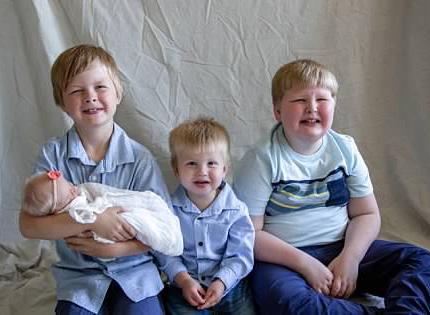
Today, my oldest two boys are 12 and 10. And their love for each other is fierce. It’s a loyalty, a devotion, a wrestling match, a hand held while crossing the street.
It looks different than most. But it’s not less, it’s more.
My younger children are four and two years old, and they adore Cooper, but to them, he is just Cooper. Autism, sign language, an AAC device (Augmentative and Alternative Communication), hands flapping in joy when a train drives by don’t seem odd or even stand out. Because he is Cooper. A super cool older brother. I know questions will come, someday. And once again, my husband and I will explain the beauty of an autistic mind.
Moms, Dads, if you worry about your own children, and what will come of their relationships, remember…
The best things take time. They need to grow.
So, plant the seeds of love, care, and advocacy. Model it in everything you do.
And watch it grow.
Kate Swenson, the Founder of Finding Cooper’s Voice and the nonprofit, The More Than Project, is a mother to four kids, a wife, and a proud Minnesotan. She writes and creates videos regularly about her life as a mother and an autism advocate for Facebook, Instagram, and her website, Finding Cooper’s Voice. Her book, Forever Boy, A Mother’s Memoir of Autism and Finding Joy, is available now and highlights the transformation that she went through after her son’s diagnosis. Her mission is simple. Help parents see the joy in the secret world of autism.
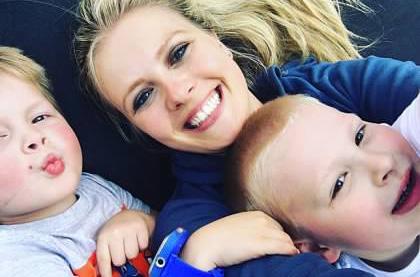

10 | Exceptional Needs Today | Issue 13 MY WORD

A Multi-Purpose Gift for Children of All Abilities Story Time:
 By Dr. Ronald I. Malcolm, EdD
By Dr. Ronald I. Malcolm, EdD
12 | Exceptional Needs Today | Issue 13 SKILLS FOR LIFE
PARENTS OF CHILDREN WITH DIFFERENT ABILITIES CAN BECOME OVERWHELMED WHEN TRYING TO MEET THEIR FAMILY’S DAILY BASIC NEEDS. THERE NEVER SEEM TO BE ENOUGH HOURS IN A DAY, ESPECIALLY WHEN YOU ADD IN THE TIME NEEDED TO TEACH SELF-HELP SKILLS, COORDINATE PHYSICAL, OCCUPATIONAL, AND SPEECH THERAPY, MONITOR MEDICATION, MANAGE SOCIALIZATION NEEDS, PROVIDE CONSTANT SUPERVISION, AND SO ON. THE LIST OF DUTIES CAN SEEM ENDLESS AT TIMES.
Turns out, one of the biggest gifts you can give your exceptional child is FREE. It simply involves grabbing a book and reading with or to them. Not all children with different abilities struggle with reading. Some excel at it. Regardless, every student, including nonspeakers, can benefit from practicing reading or being read to by someone else.
1. Become a model for reading

Children, both disabled and non-disabled, tend to model what they see. Watching you read a book for entertainment or pleasure allows them to witness the benefit of reading personally. When reading with or to a child, you are modeling so many book-handling skills. A child can learn ways to hold an e-reader, how to turn pages, how to properly care for a book, how bookmarks can be utilized, etc. These skills can be generalized from home to their classroom or community.
2. Make reading easy and fun
Find a time during the day for you and your child to simply relax and enjoy a book together. Lay a blanket on the floor, sit on the sofa together, or hang out in your child’s bedroom. Bring a snack or drink with you. Take a break if necessary. Use funny or animated voices for characters to hold interest. Point out things you notice about any illustrations and ask questions about what happens in the book. Invite your child to share their thoughts. This is a great way to bond and enjoy personal time.
3. Don’t constantly correct
If your child begins to read aloud and make errors, don’t feel the need to correct them constantly. When children are repeatedly corrected while reading, they quickly become frustrated or discouraged and will want to end the activity. Instead, simply model the correct pronunciation if it is your turn to read aloud. They will begin to pick up the proper way to pronounce a word without being interrupted.
4. Let your child select the book
Don’t force books or topics on your child that they don’t enjoy. Instead, involve them in the selection process. Consider their interests and allow them to center those interests on the books they want to read with you. You may be surprised at the topics they find compelling.
5. Enjoy the public library
Money can be tight for many families these days. However, books are available for free at libraries. Take your exceptional needs child on a trip to your local library. Show them how to sign up for their personal library card and carry it in their purse or wallet. Libraries also serve as a place to spend time within
Exceptional Needs Today | Issue 13 | 13 SKILLS FOR LIFE
your community. Many contain rentable technology and public computer labs. I have found employees at most local libraries are very open to having children with disabilities visit. They can help them find books of interest or research materials they may need for school projects.
6. Don’t use reading as a form of punishment
When disciplining for misbehavior, never use reading as a form of punishment. Telling a child they must sit in the corner until they have read 10 pages can send the “wrong” idea of what reading is all about. If they are taught to view reading as a negative consequence, they will be less likely to seek it out independently.
7. Plan your reading around your community outings
If you are planning an outing with a differently abled child, try to center your reading topics on the excursion. If your day involves going to the zoo, you may want to read about different animals. If you are planning a trip to the bakery, you could read about cookies and cupcakes. Maybe your child has a favorite superhero and you are planning a trip to the movie theater. Find a book about that hero to share before the trip!
8. Utilize recipe reading
Many parents forget recipe reading is an essential life skill. It can assist children with developing a level of independence as they mature. The greatest thing about recipe reading is that it includes practicing reading skills AND eating your creation!

9. Start a book club
Have your child consider starting a book club. It could involve their friends at school or in the neighborhood or be open to new faces, which can help widen their friendship circle and advance their social skills. Consider hosting a book club meeting at your home. Providing a few snacks and a fun environment could help your child to enjoy spending time with their peers.
10. Teach independence
Many parents who read to their children enjoy the bonding time. However, don’t be surprised if, after a while, your child no longer wants to read with you. You may notice they are reading on their own and not being prompted to do so. Upon seeing this, some parents will experience a sense of loss. Don’t be discouraged—pat yourself on the back for a job well done! Your child has found their own enjoyment in reading and developed a level of independence. Celebrate your success!
Dr. Ronald I. Malcolm, EdD works with students with disabilities in the Northwest Arctic. He recently retired as an Assistant Director of Special Education for a public school district. Dr. Malcolm is also an Associate Faculty Member with the University of Phoenix and a Special Graduate Faculty member at the University of Kansas. He has Bachelor level degrees in English and Special Education. He holds Master level degrees in Counseling, Special Education, and School Administration. His doctorate degree is from Northern Arizona University in Educational Leadership. His postgraduate degrees are in Positive Behavior Supports and Autism Spectrum Disorders. He has worked for the past 38 years with students between the ages of three and 21 with disabilities and various medical needs in both school and community-based settings.

14 | Exceptional Needs Today | Issue 13 SKILLS FOR LIFE
SHAPING OUR FUTURE

Discovering What Matters to Children Through Their Lens
By Rose Adams, OTD, OTR/L
WHAT DO CHILDREN NEED FROM US? LOVE, AFFECTION, TIME, PLAY? WE MIGHT AGREE THAT ALL THE ABOVE ARE TRUE. HOWEVER, I RECENTLY WAS REMINDED THAT WHAT CHILDREN MIGHT REALLY NEED FROM US IS TIME. IT’S WHAT WE CHOOSE TO DO WITH THAT TIME TOGETHER THAT MATTERS.

Exceptional Needs Today | Issue 13 | 15
David’s story
One evening after work, I decided to head to the local Panera Bread—one of my favorite places to dine and do productive work. But I digress. I texted my husband to let him know it would be a few hours before I would be home. Shortly after, I received a text from one of our sons, David, whom we call Dave. It read,
an over-and-under pattern. When the song begins, each player taps the hand of the player next to them according to the tune and continues this motion in a clockwise direction. The point of the game is to have the last player miss the hand tap by the time the song ends. This game teaches motor planning, timing, sequencing, waiting, counting, and so much more. Again, as kids, we just called it fun!
Since I taught the boys my childhood games, they were interested in playing them again. That was the context behind Dave’s message. When I received his text, accompanied by a Mickey Mouse GIF of stomping his foot with hands on hips, implying “I’m waiting,” I had to smile and wrap it up! Through his little seven-year-old world lens, Dave’s message reminded me that what he needs (and other children might need) is TIME.

Let’s look at four points to help us to reframe how we think about the time we spend with our children or other kids in our care: (1) Time matters, (2) Insight, (3) Meaningful moments, and (4) Explore together.
Time matters
In the hustle and bustle of daily life, it may seem like we’re always running out of time or have such little time to do the things we really want and need to do. Well, that’s occupational balance for you! Occupational balance is the art of creating time to do the things that matter to you—not only the obligatory things, but also the fun things, such as activities that restore you (Dhas et al., 2023).
Now, how often do you have time to engage in non-obligatory and enjoyable or restorative occupations (AOTA, 2020)? For parents and caregivers of children with disabilities, this balance between the need-to-do’s and want-to-do’s may be exceptionally challenging (Dhas et al., 2023). One way to help alleviate this challenge is to see things from your children’s point of view. Gain insight into what they may be seeking from you and try to incorporate it into your daily routines. Can you think of other ways?
Sharing time
Snake was a game we played in elementary school where one player would hold a rope on the ground and move their arms rapidly in side-to-side motions until the rope resembled a wave-like ripple effect (snakes). The other players would jump over the rope while trying not to get caught by the snakes. I can’t tell you who invented it, but it was a fun game that also worked on many skills, such as motor planning, coordination, timing, body awareness, and so much more. As kids, we just called it fun.
On the other hand, Quack-Diddly-O-So is a game where a group of players sit around in a circle and place their hands in
While writing this piece, I questioned how often we share time rather than spend time. When I think about spending time, I think about the amount of time and how much of it I may not have. But when I shift my thinking to “sharing,” it shapes my thoughts and feelings into what I can do or share during our time together. In Dave’s story, he was asking me to share time with him and his brother. Although he was very specific with his requests, I appreciated how well he was able to make his needs known. What will you do during your next time-sharing experience with a child? Start by seeing the world through their eyes.
Insight: Through their eyes
Some of us might agree that children view the world very dif-
16 | Exceptional Needs Today | Issue 13 PARENTAL SUPPORT
ferently from adults. Take a moment to get to know what matters most to children with whom you interact with regularly. For me, Dave’s insight helped me understand what he needed. Dave saw the world as fun for kids and boring for adults. In his words, “Adults just want to relax.” One day, he told me he didn’t want his babysitter (who is now a college student) to become an adult because he wanted to keep playing. For children, playing is their main job or meaningful occupation (AOTA, 2020). It’s what they do, want to do, and serves as an avenue through which they learn and develop important life skills (Barton et al., 2019; Bento & Dias, 2017; Blumenstein, 2023; Yogman et al., 2018).
is to play outdoors (Balci & Ahi, 2017; Bento & Dias, 2017; Dankiw et al., 2020). Our boys love playing outdoors. They are not big fans of insects, but they really get creative and love when they get to run wild in the backyard. Dr. Amy Wagenfeld, author of the Nature Notes column in this publication, provides fun tips for encouraging inclusive play through a scavenger hunt outdoors (Wagenfeld, 2021). I hope you are now feeling a bit more motivated to play outdoors with your child!
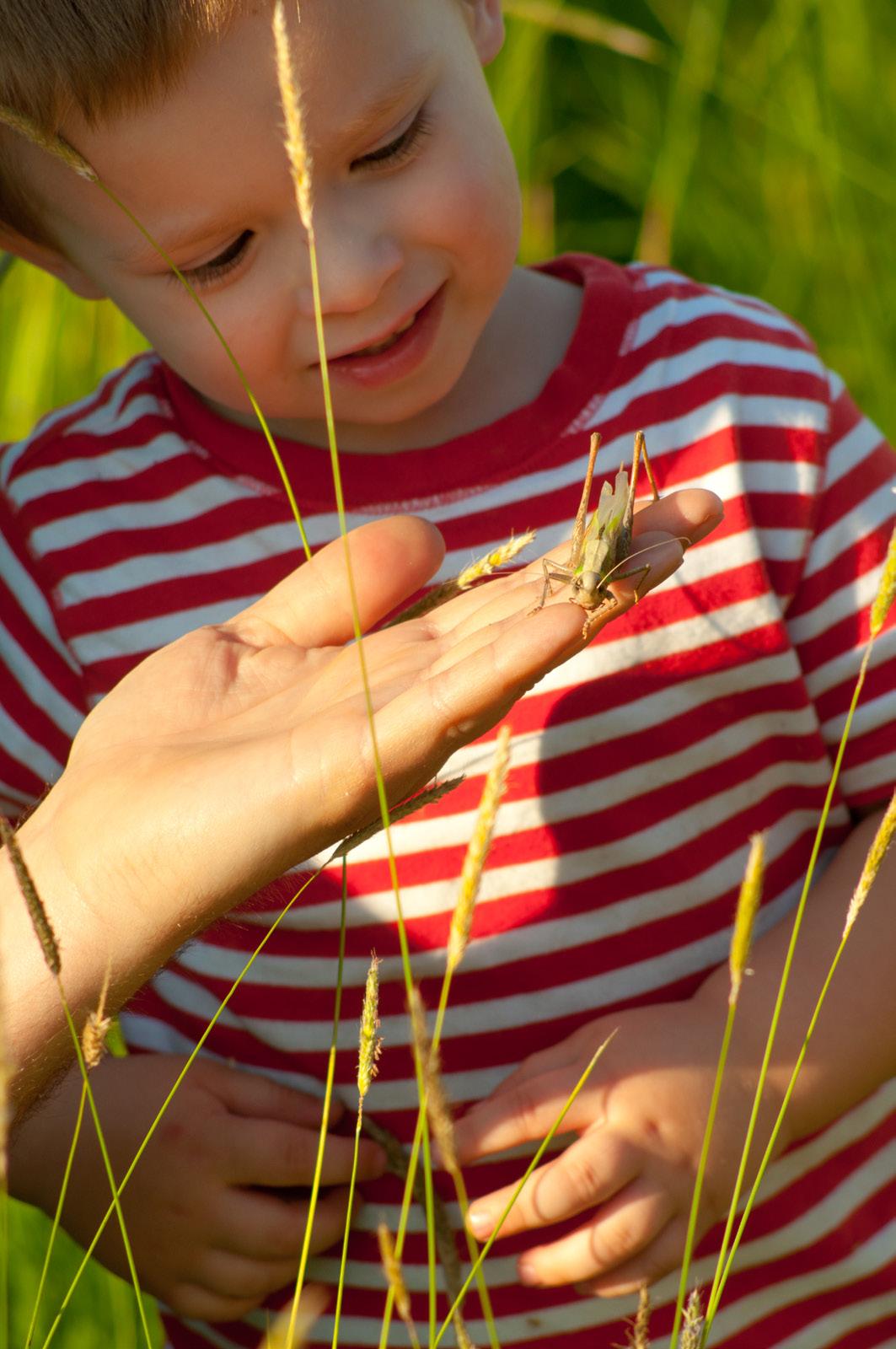
Meaningful moments
How can we create moments that are meaningful for children? Meaningful moments with children have more to do with what we are doing with them rather than how much time we are sharing while doing. Of course, the more time we share, the better it may be, but the meaning lies in what matters most to the child at that moment. For Dave, it was playing. For you and your child or children you work with, it might be baking, creating, experimenting, watching a show, reading a book, or lying together while “doing” nothing, among other things. The doing here refers to the “sharing of time.” So, whatever you do in your moments with children, be sure first to discover what matters to them to make the time shared more meaningful.
Explore together
One way to support and discover what children need is to explore together. Try new and different things. Be sure the trying is generated from the child’s interests. Help children build upon their ideas and create space for imagination to take over! Although, in my example, Dave wanted to play my childhood games, I wonder how else he might have wanted to share time. As parents, caregivers, teachers, educators, therapists, and others who work with children, we have a very important role in supporting their development through playful experiences (Yogman et al., 2018; Waldman-Levi, 2021). Let’s start seeing life from a child’s worldview and provide support while they take us on a journey to discovering what they really need.
It’s about TIME we:
• Share time with children
• Gain insight into what they need and want
• Make the moments shared meaningful
• Be brave enough to take the wild journey of exploring together!
Play works!
Why should we play? Play works to build confidence, promote socialization, creativity, and so much more. Play should also be motivating, child-driven, and freely chosen by the child whenever possible (AOTA, 2020). For children with learning differences, complex physical disabilities, or other neurodiverse needs, support may be needed to facilitate play. Even when play might seem challenging for some children, it doesn’t remove the desire or need to play! Can you think of some creative ways to support participation in play for all children? One way
References
American Occupational Therapy Association. (2020). Occupational therapy practice framework: Domain and process (4th ed.). American Journal of Occupational Therapy, 74(Suppl. 2), 7412410010. https:// doi.org/10.5014/ajot.2020.74S2001
Balci, S., & Ahi, B. (2017). Mind the gap! Differences between parents’ childhood games and their children’s game preferences. Contemporary Issues in Early Childhood, 18(4), 434–442. https://doi. org/10.1177/1463949117742788
Exceptional Needs Today | Issue 13 | 17 PARENTAL SUPPORT
Barton, E.E., Choi, G., & Mauldin, E. G. (2019). Teaching sequences of pretend play to children with disabilities. Journal of Early Intervention, 41(1), 13–29. https://doi.org/10.1177/1053815118799466
Bento, G., & Dias, G. (2017). The importance of outdoor play for young children’s healthy development. Porto Biomedical Journal, 2(5), 157–160. https://doi.org/10.1016/j.pbj.2017.03.003
Blumenstein, C. (2021, June). A life filled with play can support all kids with different abilities. Exceptional Needs Today, 4, 29-31. https:// www.exceptionalneedstoday.com/



Dankiw, K.A., Tsiros, M. D., Baldock, K. L., & Kumar, S. (2020). The impacts of unstructured nature play on health in early childhood development: A systematic review. PloS One, 15(2), e0229006–e0229006. https://doi.org/10.1371/journal.pone.0229006
Dhas, B. N., Carrasco, R., Reinoso, G. A., & Backman, C. (2023). Occupational balance among parents of typically developing children and parents of children with disabilities. American Journal of Occupational Therapy, 77(1). https://doi.org/10.5014/ajot.2023.050076
Wagenfeld, A. (2021, August). We’re going on a scavenger hunt! Exceptional Needs Today, 5, 74-76. https://www.exceptionalneedstoday. com/
Waldman-Levi, A. (2021). Parents’ support of their child’s playfulness: Differences in paternal and maternal behaviors during joint play experiences. American Journal of Occupational Therapy, 75 (Suppl. 2). 7512505217. https://doi.org/10.5014/ajot.2021.75S2-RP217
Yogman, M., Garner, A., Hutchinson, J., Hirsh-Pasek, K., & Golinkoff, R. M. (2018). The power of play: A pediatric role in enhancing development in young children. Pediatrics, 142(3), 1. https://doi.org/10.1542/ peds.2018-2058
Rose Adams, OTD, OTR/L is an occupational therapy practitioner with a clinical focus in pediatrics. She works with children and families of children on the autism spectrum, multiple disabilities, and other neurodiverse needs. Dr. Adams has worked in schools, private practice settings, and community-based programs. She is the Executive Director at Changing Lives Occupational Therapy, PC and currently works at a local school district in New York. Dr. Adams is a graduate of Boston University’s Post Professional Occupational Therapy Doctorate (PP-OTD) program. Her doctoral project focused on using song-based interventions to support young children with autism and related disabilities participate in school-based occupations. When she is not working, she enjoys writing, baking, singing, and sharing time exploring the outdoors with her school-aged twin boys.
Email: roseadamsot@gmail.com
LinkedIn: linkedin.com/in/rose-adams-otd-otr-l-5068b316



stressed? frustrat need advice? Send in your parenting woes, questions, concerns, and tricky situations with your beautiful exceptional children and Kate C. Wilde will respond in her column! ASK KATE! KATE MAKES IT GREAT! S U B M I T Y O U R Q U E S T I O N S T O S U B M I S S I O N S @ E X C E P T I O N A L N E E D S T O D A Y . C O M w w w . e x c e p t i o n a l n e e d s t o d a y . c o m Exceptional Needs Today WWW.EXCEPTIONALNEEDSTODAY.COM Working together to promote awareness, acceptance, and inclusiveness for all Tell a friend about us... 18 | Exceptional Needs Today | Issue 13 PARENTAL SUPPORT

EXCEPTIONAL ADVICE FROM MESHELL
Healing From Preconceived Stereotypes and Intrafamily Prejudice

 By Meshell Baylor, MHS
By Meshell Baylor, MHS
20 | Exceptional Needs Today | Issue 13
“If you judge people, you have no time to love them.”
—Mother Teresa
The definition of the word “family” is a group of two or more individuals related by birth, marriage, or adoption who live together. Family is your home away from home; when nothing else in the world seems right, you can count on your family to help you through it. According to statistics from the Federal Register, 20.9 million families have at least one member with a disability. When a family member is diagnosed, the family often experiences a huge transition to support their loved one as best as they are able.
After diagnosis, you likely hope all members of your family can support you and your exceptional individual openly. But what do you do when some relatives do not fully accept or have preconceived notions about your loved one with a disability? How do you handle the prejudice your own family may hold about your child or other household members with exceptional needs? The road to learning how to navigate the world of special needs is different from others, but at the end of the day, we all want our loved ones to be accepted and loved unconditionally—especially by those we cherish.
There are times when families face challenges and obstacles. Stress takes on a whole new level of intensity for a family, especially when you first start parenting or caregiving for a loved one with exceptional needs. Families rely on their immediate members to provide a safe and helpful space.

Families need support in the following:
• Building their foundation
• Retrieving resources
• Exploring the world of special education
• Learning about Individualized Education Program (IEP) meetings
• Creating a life plan
• Ensuring the correct aids that will support a child
• Securing Social Support Programs for the whole family
When a family looks to their immediate members, they look for the peace of a solid foundation of understanding—that once we go home and close the doors to the world, our true family will safeguard us with love. There will be times some family members will believe stereotypes about or discrim-
inate against your loved one with special needs. You may try to educate them, but their opinions might remain firmly biased.
For many years I wondered why my children were not invited to certain birthday parties, sleepovers, and events. A relative later disclosed that their spouse feared my son with exceptional needs would set the house on fire, wander off, or somehow endanger their children’s lives. It almost felt as if they thought autism was a contagious disease you could contract by being close to each other. As I listened closely, this candid conversation over pancakes and coffee continued with blatant prejudice. I gradually discovered this relative was not the only one—half of my family shared the same hurtful sentiments as the person sitting across the breakfast table from me.
Exceptional Needs Today | Issue 13 | 21 FAMILY SUPPORT
I remember thinking about a passage from The Everyday Advocate by Areva Martin. When she and her spouse realized how others viewed their child, they made the valorous decision to say farewell to those who held preconceived notions about their child and would not accept him. I remember the quote read, “They wouldn’t be seeing the Martins.” I realized that quote was a symbol of advocacy for their child and family. It signified finding internal and external solidarity. All parents desire their children to live a happy, healthy life with love and acceptance.
Acceptance is defined as the action or process of being received as adequate or suitable; it is a sense of inclusion. We are all united in togetherness. As painful as it is to say goodbye to relatives who do not accept your loved one with exceptional needs, it is necessary to do if you intend to advocate for their right to thrive, grow, and be themselves.
Bidding farewell to those who do not accept your exceptional family members can be difficult, but fate will bring you to meet those who will love and cherish them entirely. While navigating the world of special education, I found support and camaraderie from parents and families whose journeys resembled my own. We attended each other’s birthday parties, quinceañeras, IEP meetings, camping trips, and sports games. The second family I found became my tribe, making me truly realize the importance of the phrase, “Friends are the family we choose for ourselves.” In times of struggle, they were there. Together we weathered challenges, obstacles, milestones, and loss.
When encountering a family member who has already judged your exceptional loved one, try following some tips on approaching the situation.
1. Sit down and talk
Sometimes sitting down with relatives and addressing things requires you to explain what a disability is and how they can support you if they are willing to. People are often unknowledgeable about specific disabilities and might believe stereotypes as fact, but they may change their views if they are willing to listen and learn.
2. Establish a support circle
Meet individuals who are receptive to you and your family member with exceptional needs. Build a bridge that will allow positive people to enter your life to help support, nurture, and grow with your family.
3. Accept you might need to walk away
If having a serious discussion does not go well and your relatives stick to their harmful views and biases, it is time to accept them for who they are and say goodbye. There is nothing wrong with choosing to protect your loved one. There is no shame in closing the door on someone who does not love your family unconditionally.
4.
Take the time to heal
As devastating as it can be to know some members of your family do not cherish your exceptional individual, it is okay
to take some time to heal. Healing is the process of regaining your strength after a difficult encounter physically, emotionally, mentally, and spiritually. When you heal, you allow yourself to reflect on the experience, learn from it, and grow.
In closing, true family loves us unconditionally. They accept us inside and out. They are our peace, our foundation—the ones who see us for who we are. Accepting someone means accepting their bonds as well, and in doing so, we can all love each other.
You owe yourself and your loved ones a healthy exceptional needs journey:
• Learn more about finding services for your family
• Find parent support
• Attend workshops and group meetings
• Learn how to navigate the special education realm
• Plot your route on the road to advocacy
• Meet individuals who will encourage you, not discourage you!
Resources
The Everyday Advocate
https://www.amazon.com/Everyday-Advocate-Standing-AutismSpecial/
National Bureau of Transportation
https://www.bts.gov/newsroom/travel-patterns-american-adultsdisabilities
Meshell Baylor, MHS, is a mother of four children—two of whom are on the autism spectrum. She serves her community as a social worker and advocate within the Los Angeles area. She has a bachelor’s degree in human services from Springfield College and a Master of Science in Human and Social Services. Meshell continues to volunteer and give within her local area while serving the special needs community.

Website: meshellbaylor.wixsite.com/website
Instagram: instagram.com/imalittlebigb
22 | Exceptional Needs Today | Issue 13 FAMILY SUPPORT
As devastating as it can be to know some members of your family do not cherish your exceptional individual, it is okay to take some time to heal.
How Can We Help Children with Disabilities, Emotionally?

 By Nicole Moehring
By Nicole Moehring
NICOLE
REDUCING THE RISK OF ABUSE WITH CHILDREN WITH DISABILITY SAFETY GOALS WITH
Exceptional Needs Today | Issue 13 | 23
EMOTIONS ARE PART OF EVERY CHILD’S LIFE. BUT WHEN A CHILD WITH A DISABILITY ENCOUNTERS UNFAMILIAR SITUATIONS, THEY MIGHT NOT FULLY COMPREHEND THEM AS THEY MAY NOT KNOW HOW TO MANAGE THEIR EMOTIONS. AS A RESULT, THEY MAY BE OVERWHELMED BY A REACTION THEY DON’T UNDERSTAND AND BECOME HYPEREMOTIONAL (EXTREMELY OR OVERLY EMOTIONAL). THIS OVERFLOW OFTEN LEADS TO ANXIETY, SELF-INJURIOUS BEHAVIORS, MELTDOWNS, OR TANTRUMS, TO NAME A FEW OUTCOMES.
Why is it important to consistently use specific strategies and tools with your child?
Many parents or caregivers of children with disabilities are familiar with the common desire for routine and consistency. But unfortunately, children aren’t always able to communicate what they need or want, especially nonverbal ones. So, we must educate ourselves about what tools are available and the most beneficial for children.
We then need to learn to effectively use the tools we think work best for to decrease the chance of self-injurious behaviors, meltdowns, etc. Keep in mind there are many tools, and each child is different. Not every child responds in the same way. You may have to try other methods to find the best approach to helping them regulate and identify their emotions. Here are some ideas you can try at home:
Create a safe environment for your child
Children with exceptional needs require an environment where they feel safe, secure, and loved. Children need to know they have people in their lives they can trust to protect them, make them feel safe, and help with their emotions. As parents and caregivers, we need to provide this kind of environment.
Use daily routines to help avoid meltdowns
How can a daily routine help your child? A routine means your child knows what to expect; they grow familiar with the typical sequence of events for the day. Children with exceptional needs can become overwhelmed even during seemingly simple activities like getting dressed. Creating a daily schedule with pictures for a child to follow can reduce stress and provide a predictable routine.
When creating daily routines for your child, add activities they like to do after an activity they may not like so much. This can alleviate your child’s anxiety and give them something to look forward to as a distraction.
Use a positive reward system
A great way to regulate behavior is to use a positive reward system. I have used this methodology for years with my son, and it’s proven successful. The best approach, I have found, is to use small time frames because children often cannot

comprehend time well. The most important thing is never offering a negative “reward” or taking anything away.
For example, I ask my son each day what he is working toward. One day, it may be a special meal he gets to choose or extra screen time. Over time, I added that he could earn a bigger reward for multiple days. For instance, he loves going to Starbucks. So, after seven positive days in a row, he would earn the lemonade from Starbucks. A rewards system is meant to be tailored to your child and changed to meet their needs at any time.
Spend quality time with your child
One of the best things we can do as a parent is spend quality time with our children. Whether we realize it or not, children
24 | Exceptional Needs Today | Issue 13 EMOTIONAL HEALTH
see the stress parents are under while trying to juggle their everyday lives. It’s important to separate work from home life each night. We live in a digital world, but we must take time to disconnect. Make it a priority to turn off all electronic devices and have quality family time a few nights a week. Play games, watch your child’s favorite movie, go for a walk, or play a board game. Spending quality time together reminds your child how important they are to you.
Teach children how to express their emotions
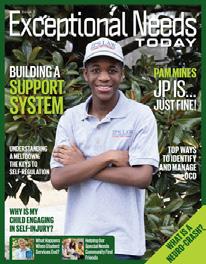
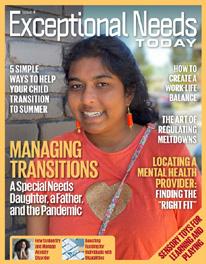
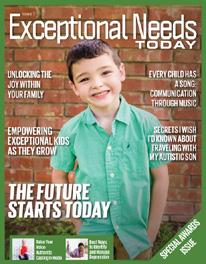

This is not an easy task, and it doesn’t happen overnight. It’s best to begin teaching your child how to express their emotions when they are young. Start by giving them words to express their feelings. Next, provide a face expressing a feeling
visually with the emotion’s name next to it on your practice identification board. Next, lead by example. Show how to find healthy ways to express your feelings through art, sports, music, a sensory room, talking with a safe person, or watching your favorite show.

Listen to your child
If your child asks to talk to you, stop what you are doing and make the time. Children with exceptional needs can have emotions that are big or small, and some we will never understand. Nonetheless, we need to let them know they matter and we care. Always validate their feelings. Children need to know they have someone they can trust, and this is not earned overnight.
Nicole Moehring’s daughter and son, who has Fragile X Syndrome and autism, were both victims of sexual abuse. As a mother suffering through this unbelievable nightmare, Nicole witnessed extreme differences in the justice system of how her daughter was believed and treated well when her son was not. She also quickly recognized the distinct differences in recovery, trying to find support, and resources. Nicole and her daughter Maci founded Voices of Change 2018 (VOC18), a nonprofit organization, to begin making much needed change for children with disabilities and their families.
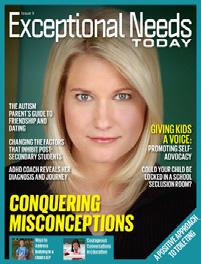

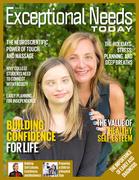
VOC18 is a national organization piloting groundbreaking programs in Ohio. VOC18 is in the process of developing preventative education programs for children with disabilities while empowering parents and guardians. By sharing their lived experiences and through collaborations with other individuals, mental health professionals, law enforcement, and organizations, they are building a foundation of advocacy, abuse awareness, resources, and support for children with disabilities.

Website: www.voicesofchange2018.org
Facebook: https://www.facebook.com/voicesofchange2018/
LinkedIn: https://www.linkedin.com/company/voices-of-change-2018/



Pinterest: https://www.pinterest.com/voicesofchange2018/_created/
Email: info@voicesofchange2018.com
L E T ' S W O R K T O G E T H E R A D V E R T I S I N G @ E X C E P T I O N A L N E E D S T O D A Y . C O M W W W . E X C E P T I O N A L N E E D S T O D A Y . C O M EXCEPTIONAL NEEDS TODAY Exceptional Needs Today | Issue 13 | 25 EMOTIONAL HEALTH
Neurodiversity How Teachers Can Develop Positive Learning Environments for
 By Karen Kaplan, MS
By Karen Kaplan, MS
RECENTLY, I HAD AN OPPORTUNITY TO SIT IN A CLASSROOM OF THIRD GRADERS. I OBSERVED THE ENVIRONMENT AND TEACHER-STUDENT ENGAGEMENT. WHILE THE CLASSROOM WAS BRIGHT, OPEN, AND SOMEWHAT INVITING, I WAS CONCERNED BY THE INSISTENCE OF DEMANDS AND THE OVER-CRITICALNESS OF THE TEACHER. I NOW UNDERSTOOD WHY THE STUDENT I WAS OBSERVING REMAINED QUIET TO AVOID OFFERING HER INPUT.
26 | Exceptional Needs Today | Issue 13
EDUCATION
EXCEPTIONAL
Iwondered how teachers are being prepared to create positive learning environments, not only for neurotypical students but for the neurodiverse as well. I wondered why the administrators of this school were not supporting and helping this young, passionate teacher create an environment in which all students felt safe to raise their hand and offer an answer which, while maybe not correct, was their best guess.
Fred Rogers is quoted to have said, “There’s a world of difference between insisting on someone’s doing something and establishing an atmosphere in which that person can grow into wanting to do it.”
Here are some suggestions I would give a teacher to optimize student engagement and thus, learning.
• Make sure the environment feels safe and welcoming.
• Understand your students’ sensory sensitivities (light, sound volume, noise, visual distractions, smell, physical proximity to others, etc.) and try to preemptively accommodate them.
• Provide structure, not just auditory but visually. Is there a visual schedule that has words and pictures, so students know what is going to happen during their day? Are you referring to the schedule as you move through and transition from one activity to another?
• Provide processing time when asking questions. Not all students process quickly. Some may need time to hear, process, and develop a response.
• When an answer is not correct, be careful not to embarrass the student in front of their peers. Perhaps acknowledge them by commenting, “Good try.”
• Praise and celebrate questions students ask. Be careful not to suggest the question is stupid, out of context, or interruptive. Carefully redirect when needed. Perhaps say, “Thanks for your question. I will get back to you on that in a few minutes.”
• When presenting a lesson, use a variety of examples. Try to not to only verbalize it—you should show it as well. Then check for understanding before having your students move on. Some students may be strong auditory, while others understand best visually.
• Make sure the students’ work areas are supportive. Is the desk the right height? Is the chair the right height? Students who have their heads down might be in desks or chairs too short for their bodies. Perhaps a ball chair is needed to keep them alert, or maybe a seat cushion. Some students may benefit from a Thera-band tied around a chair or desk legs for nervous foot tapping.
• Use priming. Go over new words and their meaning before a reading assignment. Prime for any unexpected change in the day’s schedule. Provide not only an
auditory reminder that time is almost up, but a visual warning (Countdown Visual Timer) of a change about to take place. Some students need time to prepare for a transition. Some students do not feel 10- or 15-minutes passing. They may not be great estimators of time.
• Some students take longer than others to complete the number of written problems you are assigning. Assess the repetition of those questions. How many are the same type? Perhaps reduce them to odd or even only. This can prevent students not finishing, feeling badly, or being stuck and refusing to stop until all are completed.
• Instead of having students just place a finished paper somewhere on a table or desk, place a bin of some sorts labeled: Finished Work. This reduces confusion. Provide a labeled homework bin as well.
• If you require students to line up before going to an assembly, recess, or lunch, make the line visual in some manner (numbers, squares, shapes). Allow someone sensitive to touch or closeness to be in the front or last spot.
• If you require hanging up coats, backpacks, or lunch sacks, provide a visual sign for students so they know where to put those items. Routine helps many of those with neurodiversity.
• Find out which of your students are shy. Are they too shy to raise their hands, ask questions, or read out loud? Develop some strategies to support anxiety. Practice with shy students prior to calling on them. Let them know you might be calling on them. Encourage them to feel positive about asking questions. Find ways to build their self-esteem and courage to engage.
• Get to know the student’s family culture, situation, and expectations. Work with the family to ensure success.
• Are you aware of any fears a student might have? (Bathrooms, eating in front of others or in a noisy place, climbing, etc.) Think about how to accommodate this.
• Prepare students for school breaks. Change can be hard for some. Have a calendar showing when breaks occur and when they will return from a break. Refer to the calendar often before the break is about to happen.
• Do you know how your students respond to recess? Have you taught recess skills? Not rules, but actual skills (ball skills, play skills, social skills). Some students do not know what to do in unstructured environments. Some students do not know how to engage with peers at recess.
• If your student has challenges with reading, suggest an assessment, or find another way to approach teaching reading. Is reading a sight problem? A sound to letter problem? A comprehension problem?
• If your student is not successful with math word problems, think about word comprehension and provide
Exceptional Needs Today | Issue 13 | 27 EXCEPTIONAL EDUCATION
more priming on what key words mean. Could the individual have memory challenges and be unable to hold all the facts in mind to solve the problem? Perhaps a referral to a speech therapist is needed. Or they require extra scratch paper to write their own notes on the problem.
Teachers who realize each student is unique and comes to the learning environment with different strengths will find a way
to create a positive learning environment. Teachers who are flexible and calm will have better success. Teachers who remember they are there to coach, mentor, and inspire a sense of enjoyment in learning will be appreciated and remembered for a long time. These types of teachers create a positive learning environment for ALL.

Karen Kaplan, MS, is a native San Franciscan. She completed her bachelor’s and master’s degrees at Arizona State University, Tempe, Arizona, in speech pathology and audiology. She minored in special education and obtained her speech therapist and special education credentials in California. Karen worked as a speech therapist for schools for 20 years before opening her own residential and education program for students with autism. She worked in credential programs at Sacramento State University as well as UC Davis and spent 20 years directing private schools for those with autism and similar learning challenges.
Karen founded a non-profit, Offerings, which helps cultures globally to understand those with developmental challenges. For seven years, she founded and facilitated an autism lecture series and resource fair in Northern California. Karen still facilitates an annual Autism Awesomeness event. She is currently consulting, helping families, schools, and centers for children, teens, and adults. Karen has authored three books: Reach Me Teach Me: A Public School Program for the Autistic Child; A Handbook for Teachers and Administrators, On the Yellow Brick Road: My Search for Home and Hope for the Child with Autism, and Typewriting to Heaven… and Back: Conversations with My Dad on Death, Afterlife and Living (which is not about autism but about having important conversations with those we love).

28 | Exceptional Needs Today | Issue 13 EXCEPTIONAL EDUCATION
The Benefits of Remote Microphone Use For Autistic Individuals
By Dr. Dawn Aerts, AuD
THE JOURNEY TO FIND SUPPORT AND UNDERSTANDING WHEN PARENTS ARE CONCERNED THEIR CHILD MAY NOT BE RESPONDING APPROPRIATELY TO SPEECH AND SOUND CAN BE DAUNTING. THEY MAY REPORT THEIR CHILD IS NOT RESPONDING TO THEIR NAME, HAS TROUBLE FOLLOWING SPOKEN DIRECTIONS, IS HIGHLY DISTRACTABLE OR HAS TROUBLE FOCUSING IN NOISY ENVIRONMENTS, MISINTERPRETS WHAT THEY HEARD, OR SEEMS LIKE THEY DO NOT HEAR AT ALL.

Exceptional Needs Today | Issue 13 | 29 COMMUNICATION STRATEGIES
ypically, the first step is for the parents to consult their pediatrician if they suspect their child is not consistently responding to auditory input or delayed speech. Commonly, the pediatrician will refer the child to see an audiologist. The audiologist will perform a full diagnostic hearing evaluation that can consist of an audiogram to determine what the child’s hearing sensitivity is to pure tone stimuli. It might include speech testing to determine how they are responding to speech by repeating back the words or pointing to pictures. Often, this testing will result in normal hearing. While this result may be reassuring to some parents, the underlying concern about the child’s listening behavior and lack of response was not addressed.
In some cases, while the individual’s hearing sensitivity is functioning well, the difference may be a result of how the child’s brain is processing auditory information. These listening challenges can occur secondary to autism, auditory processing disorder (APD), or attention deficit hyperactivity disorder (ADHD), among others.
For autism specifically, there are research studies that show most autistic individuals have some degree of difficulty processing auditory information.1 There are parts of the brain that could be neurologically immature, such as the hippocampus (Bauman & Kemper, 1994)2.
Supporting improved listening
A specific intervention that has extensive evidence-based
research for over 10 years is the use of remote microphone (RM) technology to support improved listening, attention, social interaction, and less physiological stress for autistic individuals3,4
A remote microphone system consists of a microphone and a receiver. The microphone is worn by a parent, caregiver, teacher, therapist, coach, or friend.
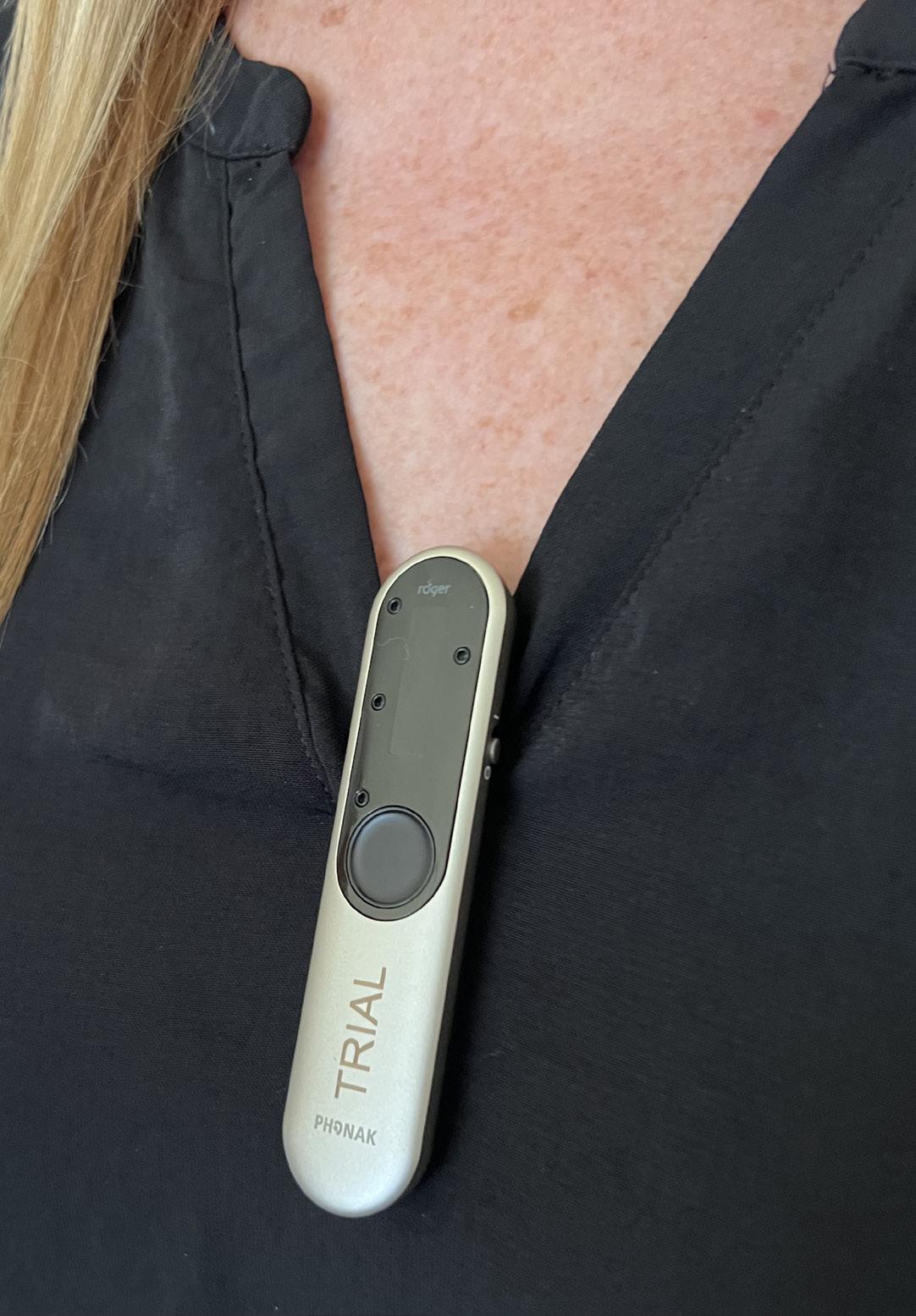
The receiver is a small earpiece that is worn in the ear(s) or headphones.
The goal of a remote microphone system is to overcome distance and background noise by delivering the speech or sound directly into the person’s ear. A RM system previously was referred to as an FM system and has been most commonly used for children with hearing loss in the classroom.
Individuals using the RM system have easier access to speech, especially in a noisy environment (e.g., playing outside, a busy amusement park, or in a noisy airport/hospital). For example, a parent can warn their child from across the yard that a car is coming or to stop when they get close to the road, or a parent can remind their child to stay close while in a crowd. Having access to the parent’s/speaker’s voice in these scenarios can

30 | Exceptional Needs Today | Issue 13 COMMUNICATION STRATEGIES
increase overall safety and reduce anxiety in challenging listening environments.
The RM system can be useful in many situations, such as therapy, classroom activities, sports, and family outings.

Alicia, a mother of a 12-year-old boy with autism, reported while her son uses the remote microphone system, “He has been able to exhibit increased independence and obtain goals he has not previously been able to achieve. The system allows him increased ability to retain what he is learning by providing a clear auditory signal allowing his brain the ability to process what he is hearing. Using the remote microphone system has been a game changer in every aspect of his daily living.”
Trial periods are available to determine if this intervention may be appropriate, as it may not be effective for every child, depending on their specific needs. Consult an audiologist that is familiar with technology and its use. While most of the research has been conducted on children, further research is underway with autistic adults and gathering their unique experiences and feedback.
Conclusion
When there are concerns about a child’s lack of response to auditory information, it may not have anything to do with hearing, but instead how the brain is able to process what it hears. Ask to learn more about auditory processing and what strategies can be used, like remote microphone technology, to support a child’s opportunity to be successful, especially in challenging listening environments. Resource Helpful Hearing
www.helpful-hearing.com


References
1. Ocak E, et al. Central Auditory Processing Disorders in Individuals with Autism Spectrum Disorders. Balkan Med J. 2018 Sep 21;35(5):367372.
2. Bauman, M.L., & Kemper, T.L. (1994). Neuroanatomic observations of the brain in autism. In M.L. Bauman & T.L. Kemper (Eds.), The Neurobiology of Autism. Baltimore: Johns Hopkins UP.
3. Schafer, E., Dunn, A., Lavi, A., DeConde Johnson, C. (2021-2022). Listening Issues in Autistic Students: Are We Doing Enough? Journal of Educational, Pediatric & (Re)Habilitative Audiology Vol. 25, 2021-2022


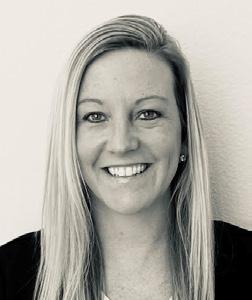
4. Rance, G., Saunders, K., Carew, P., Johansson, M., & Tan, J. (2014). The use of listening devices to ameliorate auditory deficit in children with autism. Journal of Pediatrics, 164(2), 352–357.
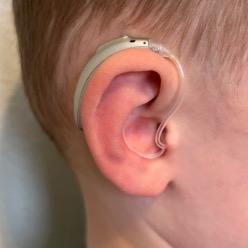
Dr. Dawn Aerts, AuD, is an audiologist and Founder of Helpful Hearing. She is an expert in pediatric hearing technology and recognized the need to increase awareness and access to remote microphone technology outside the populations of individuals with hearing loss. Dr. Aerts received her Doctorate of Audiology in 2007 from Salus University and draws on almost 20 years of clinical and hearing aid industry experience as a pediatric audiologist. She cultivated a passion for educating parents and professionals on the benefits of remote microphone technology, and her goal is to educate and support these families to help their children succeed.

MEDIA KIT advertising@exceptionalneedstoday com EXCEPTIONAL NEEDS TODAY R E A C H Y O U R B U S I N E S S G O A L S ADVERTISE WITH US Exceptional Needs Today | Issue 13 | 31 COMMUNICATION STRATEGIES
Kate Makes it Great!
PARENTAL SUPPORT
All About Stims:
Self-Regulation For Exceptional Needs Individuals

 By Kate C. Wilde
By Kate C. Wilde
HAPPY JULY, EVERYONE! MAY THERE BE BLUE SKIES ABOVE, FIGURATIVELY AND LITERALLY! LOTS OF INTERESTING QUESTIONS TO ANSWER THIS MONTH, SO LET’S GET DOWN TO IT. THE THEME THIS MONTH IS “STIMS.” I HAVE A UNIQUE APPROACH TO STIMS, SO YOU MAY FIND THE ANSWERS INTRIGUING.
32 | Exceptional Needs Today | Issue 13
Take a read. Let me know your thoughts about what I have to say; I will reply to anyone who sends an email to the magazine. Your opinion matters! Now, for our first inquiry.
Jenny in Scotland writes:
My Liam is two years and five months and has just been diagnosed with autism spectrum disorder (ASD). I can’t get him to do anything. He will spend long periods of time lying on the floor and staring at a blue plastic ball. Other times he may be sitting up and just staring at the wall. Is he tired? Sick? Bored? I do offer him things he just ignores them. Please help.
Hi Jenny, I can totally understand why you cannot, as you say, “get him to do anything” when he is in this neuro-state. His lying down and staring at the wall or the ball is a stim. It means his brain is overloaded. The action of lying down and staring is his method of regulating himself and getting out of overload mode. He is in what I call a “regulating neuro-state.” It is not the time to ask anything of him because his brain is not able (at this moment) to register your questions or take in anything new.
Instead, try doing this:
• Think: “My son is regulating himself right now—this is a good thing. I am going to let him do that. It is nothing I must stop or change. When he is fully regulated, he will let me know and be ready to engage with me or something I offer.”
• Do: Express your acceptance of him by getting your own ball to stare at and lie down just like him. You are “synchronizing” to his regulation stim by doing what he is doing, which will help him feel supported and not alone.
• Wait: For a signal that he has come out of a regulated neuro-state. He will show you by:
o Looking at you
o Physically touching you
o Verbally communicating
One of the great things about doing his stim with him is that you will be able to see more clearly when he switches back into a regulated neuro-state. When he does that, you can introduce your activity to him, and he will be more able to respond.
Mohammad from New Jersey, USA, asks:
My son is 10 years old and has a stim of clapping his hands. Sometimes this seems to upset him. He does it faster and gets upset and agitated, and starts to cry. What is this about? How can I help him?
Hello Mohammad, thank you for sending in your question! Yes, your son’s clapping is a stim. He is using clapping to help regulate his sensory system. The faster clapping is what I call an SOS (sign of stress). Signs like this often happen just before
a meltdown. This means he needs to do more to regulate himself; his regular clapping alone is not working. You can do a lot to help him regulate and not have a meltdown. When you see him start to clap faster, do the following:
• Think: My son is trying to help himself regulate. He is nearing a meltdown. What could I do to help him regulate himself further?
• Do: Offer to squeeze his hands for him. Take each hand and give them a strong deep squeeze. Or clap his hands between your hands in a strong, rhythmic way. By doing this, you are giving him more of the sensory stimulation he is seeking on his hands. This extra stimulation may be enough to keep him regulated.
• Stop: Asking him to do or say anything. Look to his immediate environment and reduce as much sensory stimulation as possible. For example, take him to a quiet room. Turn off any machine that is making a noise. Reducing demands and sensory stimuli will help him stay regulated.
You will find lots more ideas on how to help him from a sensory perspective in my books, Autism Abracadabra and Autistic Logistics.
Segundo from Ecuador asks:
My son, Juan, is 17. He talks easily and fluently. However, most of the time, he only talks about frogs. It seems he knows everything about frogs. How do I get him to talk about other things?
Great to hear from you, Segundo! You must know a lot about frogs from your amazing son. I looked up the different frogs you have in Ecuador. There are many beautiful ones; no wonder your son likes talking about them! This is what we call a “special subject” or “special interest.” Often our highly verbal teenagers on the spectrum have a particular subject that is uniquely important to them. Your son likes frogs. It is a stim. A stim that needs an audience to be more effective. That audience is you. The doorway into helping your son communicate about different topics is through your acceptance and embrace of the subject of frogs. Try this:
• Think: My son is regulating himself by talking about frogs. This is good for him, and I do not need to stop him or get him to change the subject.
• Do: Listen to him attentively. Find something to enjoy about the topics of frogs. Celebrate him for communicating with you in this way. Answer any questions he wants to ask about frogs, even if he has asked you those questions many times before. By doing so, you will be “synchronizing” with his need to regulate, thus helping him get regulated faster.
• Wait for signs: Wait for an indication he may have switched to a “regulated neuro-state.” You will know this by the following signs:
Exceptional Needs Today | Issue 13 | 33 PARENTAL SUPPORT
o He leaves pauses so there is space for you to add to the conversation.
o His facial expressions become more relaxed and expressive.
When you see the above signs, first share something about frogs. If your son listens and allows you to add something, that means he is in more of a regulated neuro-state, and you can consider adding something a little different into the conversation. It is important you do this within the context of frogs. It will be easier for your son to discuss a new subject if frogs remain the central theme. For example, you could say something like: “Did you know that the French eat frogs’ legs? They call them, “cuisses de grenouille.” A lot of people like them, but I don’t think I would.” Then just pause. You are not asking him anything. You are just telling him something interesting about frogs. Pause to see if he can take that in and respond to it. If he does, you are then very subtly talking about cooking and France as well as frogs.
Or, you could try: “Frogs are so cool because they can jump much higher than themselves. That would be so amazing to be able to jump like that. If I was a superhero, I might decide to have a superpower of supercharged frog legs so that I could jump up to the top of buildings. AND maybe even jump into space and save planets and rockets from exploding.” Then, pause and see if he takes that in and wants to respond to it.
The important things to do are:
• Embrace the topic of frogs.
• Keep frogs as the central theme.
• Weave the new topic within statements, not questions.
Most of all, have fun talking about frogs!
Send in your questions. I look forward to reading and answering them in the next issue.
Kate C. Wilde has spent the past 30 years working with children and adults on the autism spectrum and their families, as well as with therapists, educators, and schools. She is the author of the acclaimed books, Autistic Logistics: A Parent’s Guide to Tackling Bedtime, Toilet Training, Tantrums, Hitting, and Other Everyday Challenges and The Autism Language Launcher: A Parent’s Guide to Helping Your Child Turn Sounds and Words into Simple Conversations, and is renowned for the well-attended courses she teaches throughout the U.S., Europe, and Asia. Her YouTube autism quick tip videos, delivered with her trademark infectious enthusiasm, have garnered a following worldwide.
Websites: https://www.katecwilde.com/, https://www.autismcrisisturnaround.com/

IN SEARCH OF PERSONALIZED EXPERT GUIDANCE?
Send us your parenting questions, woes, concerns, and tricky situations with your beautiful, exceptional children. This includes all of you amazing professionals out there. Kate will answer up to five questions in every issue in her Kate Makes it Great! column. Kate has worked with children and adults on the spectrum for the past 30 years. She has clocked more than 20,000 therapy hours and has worked with well over 1,500 different children. Whatever you are facing today, Kate has most likely experienced it in some form. Her answers will be practical, doable, inspiring, optimistic, down to earth, and real. Together, there is nothing we cannot face with a little joy and love.
Submit your questions to submissions@exceptionalneedstoday.com
34 | Exceptional Needs Today | Issue 13 PARENTAL SUPPORT
Five Sensory Sensitive Tips For Traveling with Exceptional Needs
 By Ron Sandison, MDiv
By Ron Sandison, MDiv
IN MARCH, MY FAMILY WAS INTERVIEWED BY NETFLIX FOR A NEW REALITY SHOW CALLED TRAVEL ON THE SPECTRUM. THE SHOW WILL FEATURE THREE FAMILIES WHO HAVE A FAMILY MEMBER WITH AUTISM AS THEY TRAVEL TO MYRTLE BEACH FOR A WEEK’S VACATION. NETFLIX DECIDED TO PRODUCE THIS SHOW WHEN THEY LEARNED 80% OF FAMILIES WITH A CHILD WITH AUTISM DON’T TRAVEL OR GO ON FAMILY VACATIONS.
The producers informed me, “You’re the only person with autism we’ve interviewed with a ton of traveling experience.” I’ve traveled to 12 countries and almost every state in the U.S. I like to say, “I have traveled everywhere from Madagascar to Is-
rael. I have swum in the Mediterranean Sea and climbed trees with lemurs.”
I began traveling the world while in college at Oral Roberts University. Every summer, I went to a different country for one
Exceptional Needs Today | Issue 13 | 35 MY WORD
to two months on a mission trip. In Cameroon and Madagascar, I lived in the jungles for two weeks and was able to see amazing wildlife like monkeys and apes. I got to taste exotic foods like spicy toucan and baboon gumbo.

For our second honeymoon, my wife, Kristen, and I traveled to Israel for two weeks. I was able to swim in the Jordan River, ride a fishing boat on the Sea of Galilee, and see the birthplace of Jesus.
As a child with autism, traveling was not easy for my family because I experienced meltdowns due to a change in my routine and sensory issues. By traveling the world, I have learned seven tips for travel.

1. Prepare for the trip by making a book of the locations you will visit
When my family traveled out West for a month, my mom, who is a professional artist, created a picture book of the places we would travel. My special interest was animals; in the travel book, she drew pictures of the animals we would see in their natural habitat and interesting facts. She also had a second book with a map and the miles for each travel destination, so I would not keep asking, “How much longer till we get there?” I prepare mentally for travel by reading a travel guide and checking out DVDs from the library on the locations I will be visiting. Two weeks before my trip, I begin to daydream about what it would be like to travel to that country or state.
2. When traveling by airplane, always preboard
The only thing I don’t like about traveling is airports. For me, an airport is noisy and confusing, and boarding an airplane gives me extreme anxiety. I hate being surrounded by strange people while battling for an overhead compartment to place my luggage in. I avoid this scenario by pre-boarding. I tell the check-in flight attendant, “I have autism, and due to anxiety and sensory issues, I need to pre-board.” If a flight attendant exclaims, “You don’t look like you have autism or act like it.” I put on my funny beach hat with palm trees. Then the flight attendant states, “Oh, I see! We will pre-board you immediately.”
3. Be prepared for sensory issues with smells and sounds
Some of my favorite travel smells include Belgium—the chocolate shops—and Cameroon with its fresh bananas and mangos. In France and Bulgaria, the smell of freshly brewed coffee persists, and in Madagascar, the seafood and fruit in the market smell amazing! Just thinking about these smells fills me with joy and makes me want to travel there again. I have learned ways to deal with less pleasant smells. Some travel scents I detest include the bad breath of some of the people— strong enough to “kill a horse.” In Cameroon and Madagascar, the odor of buses filled with locals who don’t use deodorant, possibly haven’t bathed, and are dripping with sweat from the heat was awful.
My coping skill to handle offensive odors is placing candies near my nose when the scent becomes too much for me to bear. One of the best candies is Cracker Barrel’s old fashion candy sticks. I also try to sit next to an open window when riding a bus or taxicab. A sound I hate while traveling is drivers honking their horns in a traffic jam. I prevent sensory overload to sound by wearing headphones and listening to music.
4. Bring something comfortable to lessen anxiety
Halley Moss, a lawyer and author with autism, shares, “Travel naturally is a disruption in routine, so bring a little piece of
36 | Exceptional Needs Today | Issue 13 MY WORD
home to minimize homesickness or anxiety about the routine change. This can be an activity, a stuffed animal, or stim toys— anything that helps reduce anxiety and brings comfort.”1

My comfort item for travel is my stuffed prairie dog, “Prairie Pup,” and stuffed Honey Badger. I take pictures of these plush animals and post them on Facebook.
5. Don’t cut corners to save a little money on travel expenses
My family traveled to South Bend, Indiana, where I was a featured speaker for the University of Notre Dame’s “Play like a Champion Today” conference. To save a little money, we decided to use Expedia and stay at a cheap hotel for only $70 a night. Little did we know what a mistake it would be! As we entered the room, we noticed a horrible stench—I can only describe it as rotting fish mixed with feet fungus—seeping from the restroom. Peering into the tub, I saw a towel with brown streak marks. I also noticed the cleaning staff left no shampoo or soap.
The Honey Badger was about to make a guest appearance in South Bend. Furious, I rode the elevator back down to the service desk and blurted out, “My room has a strange fish-feet odor, and there is no shampoo!”
“Oh, I see,” the receptionist responded. “We had a busy night with many people coming and going, so we weren’t able to clean all the rooms. Also, we don’t supply shampoo for our guests anymore, but you can purchase a small container from the vending machine for only $2.99.”
different cultures. I have eaten many different foods overseas; the only food I don’t like is cassava—a root vegetable in Africa. I believe people with autism should travel to better understand the world and to experience life. As more people with autism travel, they will learn new social skills and develop better coping skills for handling sensory issues and anxiety. Exposure to different environments in travel has helped tame my sensory issues and enabled me to adapt to a change in my routines.
Reference
1 Moss, Halley. “Autistic While Traveling: Haley Moss’ Top Tips for a Successful Trip.” Life Skills Halley Moss Blog. 11 November 2019.

Ron Sandison works full time in the medical field and is a professor of theology at Destiny School of Ministry. He is an advisory board member of the Autism Society Faith Initiative of Autism Society of America, the Art of Autism, and the Els Center of Excellence. Ron has a Master of Divinity from Oral Roberts University and is the author of A Parent’s Guide to Autism: Practical Advice Biblical Wisdom published by Siloam, and Thought, Choice, Action. He has memorized over 15,000 Scriptures, including 22 complete books of the New Testament. Ron speaks at over 70 events a year, including 20-plus education conferences. Ron and his wife, Kristen, reside in Rochester Hills, MI, with their daughter, Makayla.

Website: http://www.spectruminclusion.com
Facebook: https://www.facebook.com/SpectrumRonSandison
Email: sandison456@hotmail.com
To top everything off, the toilet made a squeaky rodent noise all night. As we checked out, the receptionist asked, “How was your stay?” Holding my tongue to avoid blurting out a comment I would later regret, I smiled and simply replied, “I wouldn’t keep the lights on!”
Travel is a big part of my life. I speak and travel to seventyplus events each year. I firmly believe travel has contributed to my life by enabling me to see amazing sights and experience
Exceptional Needs Today | Issue 13 | 37 MY WORD
Sensory Interior Design: A Necessary

Luxury When There Are Exceptional Needs
By Stephanie Lee Jackson
38 | Exceptional Needs Today | Issue 13 SENSORY STRATEGIES
Dedicated yoga zone in a small space.
“I should be doing yoga every day, but that’s not possible,” said Zeke, at the start of the pandemic. “There’s not enough space in my apartment. I could move the furniture aside and put it back, but realistically I’m never going to do that.”
“Send me photos of your place and measurements of everything,” I told him.
A week later he had a dedicated yoga zone in his home office, along with a library, a reading corner, and a much more comfortable desk setup. Cost of new furniture, fixtures, and supplies? Nothing.


Like many of my clients, Zeke is wrangling a cluster of diagnoses which make executive functioning difficult. He is often in physical pain and hasn’t got money to spare. He’s not the kind of person who hires interior designers—ever.
Because design is a luxury, right?
Just. So. Tired.
When you’re struggling with health issues, special needs, or caregiving, taking the time and money to attend to your space feels impossible. It lives at the bottom of the “nice to have someday” list. You’re putting out an endless series of fires—doctor’s appointments, Individualized Education Program (IEP) meetings, occupational therapy, your job. You’re lucky if you have clean laundry and everyone gets fed; forget about living in an Architectural Digest editorial!
But your quality of life is at stake. Your environment has a huge impact on your state of mind, your health, your relationships, your energy levels, and your ability to focus. When you and your family have special needs, the state of your home can make the difference between surviving and thriving.
The constant drain of chaos
Your nervous system can only handle so much sensory input before it’s overwhelmed. When your resources are limited, it makes sense to consider what environmental factors drain you, and what energizes and supports you.
• Clutter: According to researchers at Princeton, visual chaos blocks your ability to focus and process information. The more obstacles around you, the more your attention is diverted, and the more energy your brain expends on trying to block it out.
• Noise: Human beings evolved to respond to sounds at mid-range frequencies—i.e., tigers in the bushes— as threats. When your surroundings have uncontrollable noise, like children playing, coworkers chatting, loud music, traffic and construction, your nervous system is continually on alert.
• Lighting: Nobody likes fluorescent lights, but for some people on the autism spectrum, fluorescent
Exceptional Needs Today | Issue 13 | 39 SENSORY STRATEGIES
Home physical therapy studio. Healing space. Photo by Amaris Hames.
lighting prevents them from forming an image in their visual cortex3. Harsh, bright spot lighting can be distracting and uncomfortable for many people, and too much or too little natural light can produce discomfort and depression.
• Texture: Many children with special needs cannot tolerate scratchy clothing with labels, and this sensitivity extends to furniture, as well. Softer places to sit and lie down make kids happier.

• Layout: When a person’s balance and proprioception (sense of body location) are compromised, falls and collisions can be a concern. Clear pathways and padded corners make spaces safer and easier to navigate.
• Systems: Many neurodivergent people have issues with remembering and prioritizing essential tasks. Designing systems with visual cues that remind you of behaviors you want to maintain—such as exercise, nutrition, meditation, and social connection—provides support for your executive function.
When you and your family are battling factors in your space which trigger sensory sensitivities and overwhelm your nervous system, everything gets harder. Emotional regulation becomes a bigger challenge.
For example, one of our clients reported that her son, a brilliantly creative child on the autism spectrum, would have multiple meltdowns if he didn’t get space and time to calm down after school. After consulting with an occupational therapist, we designed a sensory soothing zone in a corner of his bedroom. Now he has a place to retreat before his overwhelm becomes unmanageable.
Often, a simple design tweak like this can add some desperately needed breathing room to your daily routine.
Sensory, not expensive
Another client approached us because her husband’s hyperacusis (hypersensitivity to sound) was making dinnertime unbearably painful because of the acoustic chaos generated by three children in their seventeen-foot-high dining room. We created a sound buffering solution that was simple to install, integrated into their existing style, and was cheaper than expected. They were then able to work from home with a nanny and two more kids, without auditory misery.

Sanctuary equals joy
Sometimes, clients come looking for ways to support their special needs children and find the biggest transformation
Dining room with acoustic buffering.
40 | Exceptional Needs Today | Issue 13 SENSORY STRATEGIES
All designs by Practical Sanctuary.
happens in themselves. One mother found that implementing the right colors, layouts, and lighting changed her relationship with her home; it became a sanctuary, not a battleground. Clutter still accumulates, but she feels joy when she opens her front door and is embraced by colors and textures which tell her who she is: a creative, resilient person surrounded by life and love.
For more information, sign up for our Sympathetic Magic tribe at practicalsanctuary.com.
References

1. https://pubmed.ncbi.nlm.nih.gov/21228167/, Interactions of Top-Down and Bottom-Up Mechanisms in Human
2. Visual Cortex, by Stephanie McMains and Sabine Kastner, Journal of Neuroscience, January 2011.Allahverdy, A., & Jafari, A. H. (2016). Non-auditory Effect of Noise Pollution and Its Risk on Human Brain Activity in Different Audio Frequency Using Electroencephalogram Complexity. Iranian journal of public health, 45(10), 1332–1339. https://www.ncbi.nlm.nih. gov/pmc/articles/PMC5149497/.
3. Temple Grandin, Thinking in Pictures, 2006.
Stephanie Lee Jackson founded Practical Sanctuary, Sensory Interior Design when her art and healing practices converged. She holds degrees from the San Francisco Art Institute and the University of Texas at Austin and founded art spaces in San Francisco and New York City. She has been a licensed massage therapist specializing in pain relief for 23 years as the owner of Practical Bodywork in Philadelphia. She is currently working on a book, The Eccentric Genius Habitat Intervention: Interior Design for Highly Sensitive People. To book a design consultation, please visit practicalsanctuary.com

Exceptional Needs Today | Issue 13 | 41 SENSORY STRATEGIES
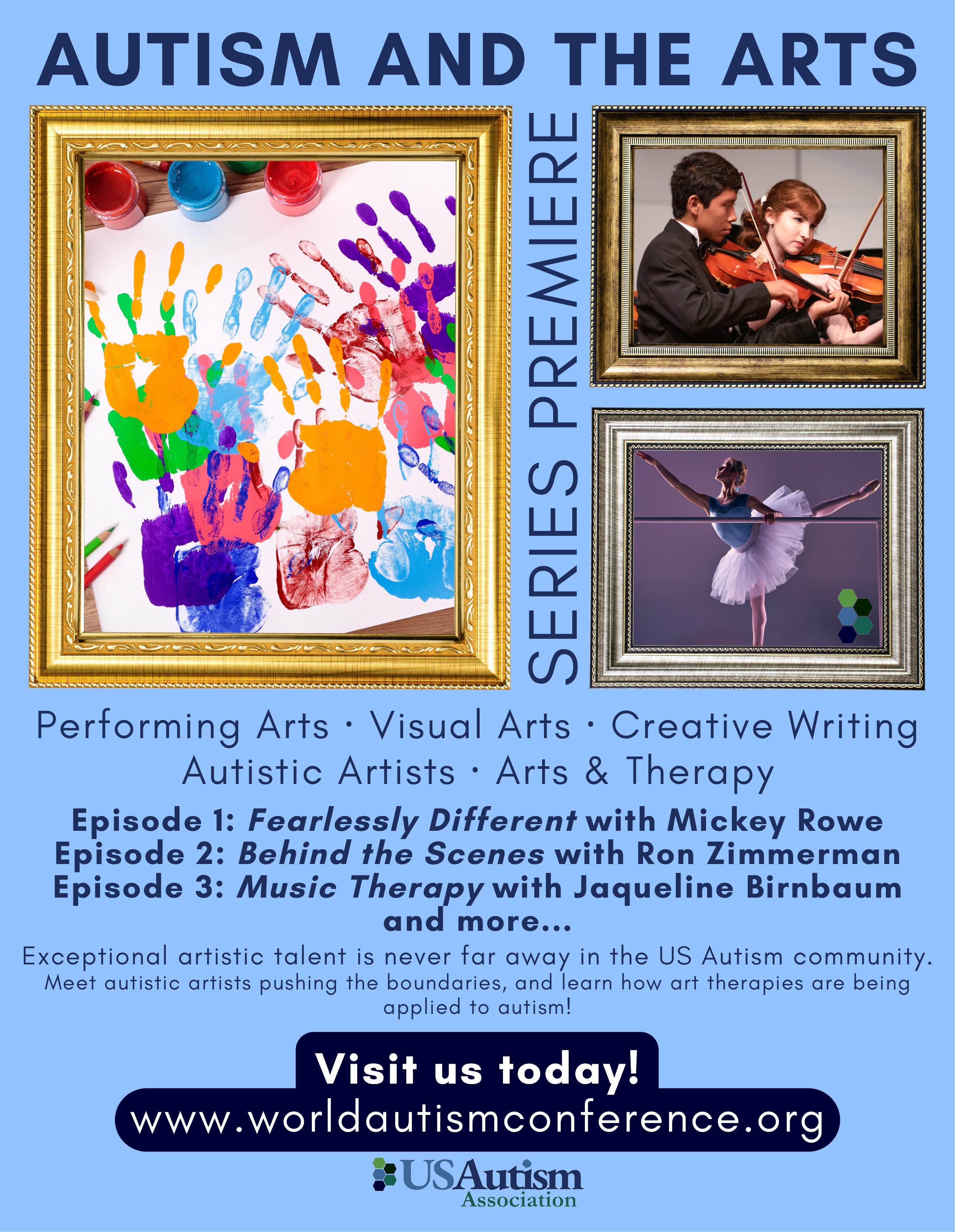
Nature Notes
The Healing Nature of Humor and Whimsy in Children’s Outdoor Spaces

 By Amy Wagenfeld, PhD, OTR/L, SCEM, EDAC, FAOTA
By Amy Wagenfeld, PhD, OTR/L, SCEM, EDAC, FAOTA

Exceptional Needs Today | Issue 13 | 43
I am excited to spend this column sharing a wonderful diversion and ‘Aha!’ moment I recently enjoyed at the northwest flower festival in Seattle. Attending the festival gave me the opportunity to reinforce my unremitting belief in how important it is for everyone to experience the therapeutic value of nature, inside or outside.


It also provided me, as I wear my occupational therapy and therapeutic design hat, the inspiration to consider how refreshing it can be for people of all abilities to infuse whimsy and humor into nature. A moment of levity can be an incredibly powerful tool to enable us to refocus our thoughts, smile, and giggle. As you will see in the sweet flower packets ‘planted’ throughout this column, nature dances happier when there is something to laugh and talk about. So, I invite you to sit back and please ‘armchair’ attend the festival with me, and hopefully have a laugh or two!
It was a day that felt like sunshine and spring, and I literally experienced the restorative nature of the abundance of lush greenery as it permeated my body. It was yummy! I spent this glorious, what I am calling “Mini Garden Getaway Day,”
attending seminars and looking at the garden exhibits. I even bought some seeds for my tabletop hydroponic garden, which germinated in just three short days!
I look forward to a “bumper crop” of lettuces and maybe some basil in the not-too-distant future.
The seminars I attended were lovely. One was called Nature as Nurture: Can Gardens Heal the World? It was facilitated by garden designer Arit Anderson, whose name some of you may recognize from her appearances on the BBC show Gardeners’ World and the BBC One show Garden Rescue. As you all know, I am a firm believer that, yes, gardens CAN heal the world.
After attending Arit’s inspiring talk, I ventured into the great hall to absorb the garden exhibits. It was so much to take in through my five basic senses but try I did. As I was wandering through the gardens, I came up with an idea related to gardens healing the world. My thought was that whimsy and humor might also have a place in healing.
True to form, after returning home, I went straight to my
44 | Exceptional Needs Today | Issue 13 STAYING FIT AND HEALTHY
university library website to do a little literature search and learned there is a positive relationship between a well-developed sense of humor and coping ability.
Whimsical elements add a sense of personal touch to any outdoor space, and the concept of cuteness enhances healing through the mechanism of fascination (Chou et al., 2022; Johnson & Uwex, 2019; Saper, 1990). This is a long-winded way of saying I decided to look at the garden exhibits not just with nature in mind but also through a humorous, cute, and whimsical lens to see what I could uncover.

Wow, this was a fun approach! It was enjoyable and gave me some ideas of how my design work could dive even deeper into including humor and whimsy in the most unexpected ways in therapeutic and children’s gardens. With that said, I leave the written word and invite you to come on my little humorous photo journey through the 2023 Northwest Flower Festival. I hope some of these sweet ideas pictured throughout this article may inspire you and find their way into your children’s outdoor spaces so that everyone can laugh a bit and feel that much happier!
References
Chou, H. Y., Chu, X. Y., & Chen, T. C. (2022). The healing effect of cute elements. Journal of Consumer Affairs, 56(2), 565-596. https://doi. org/10.1111/joca.12414
Johnson, L., & Uwex, D. C. (2019). Container Gardening. Oklahoma Cooperative Extension Service. https://www.researchgate.net/profile/Bruce-Dunn-4/publication/339211029_Container_Gardening/links/5e44284ba6fdccd9659f8ff2/Container-Gardening.pdf
Saper, B. (1990). The therapeutic use of humor for psychiatric disturbances of adolescents and adults. Psychiatric Quarterly, 61, 261-272. https://doi.org/10.1007/BF01064866

Amy Wagenfeld, PhD, OTR/L, SCEM, EDAC, FAOTA, is Principal of Amy Wagenfeld | Design and Lecturer in the Post-Professional Occupational Therapy Doctoral Program at Boston University. She is a Fellow of the American Occupational Therapy Association and the Center for Health Systems and Design at Texas A&M University and holds evidencebased design accreditation and certification (EDAC) through the Center for Health Design, specialty certification in environmental modifications (SCEM) through the American Occupational Therapy Association, and certification in healthcare garden design through the Chicago Botanical Garden. Amy presents and publishes widely on topics relating to access to nature and is co-author of the award-winning book Therapeutic Gardens: Design for Healing Spaces published by Timber Press. When not designing gardens, researching, or developing garden and nature programs, Amy can be found happily digging in the dirt.
Website: www.amywagenfelddesign.com Blog: http://workjournal.org/nurture-through-nature
Exceptional Needs Today | Issue 13 | 45 STAYING FIT AND HEALTHY
As I was wandering through the gardens, I came up with an idea related to gardens healing the world. My thought was that whimsy and humor might also have a place in healing.
Take Care with Mental Health: Special Needs Caretakers Need Support
By Carol Tatom, BA.HSE, CHW
DEPRESSION RATES AMONG PARENTS AND CARETAKERS OF AUTISTIC CHILDREN CONTINUE TO RISE EACH YEAR IN THE UNITED STATES, IMPACTING THE PHYSICAL AND EMOTIONAL HEALTH OF FAMILIES ACROSS THE COUNTRY. RECENTLY, THE AMERICAN GOVERNMENT PASSED LAWS REQUIRING MEDICAID TO COVER AUTISM-SPECIFIC THERAPY SERVICES SUCH AS APPLIED BEHAVIOR ANALYSIS (ABA), BUT NO LEGISLATION HAS BEEN PASSED TO SUPPORT THE PARENTS OR CAREGIVERS OF AUTISTIC INDIVIDUALS.

46 | Exceptional Needs Today | Issue 13 MENTAL HEALTH SUPPORT
Increased cost, stress, and demands
On average, autism costs an estimated $60,000 a year through childhood, with the bulk of the costs in special services and lost wages related to increased demands on one or both parents (Autism Speaks, 2023).
In addition to the costs associated with autism-specific therapies, extra stress is placed upon family dynamics to accommodate the needs of a differently abled child. Unique parental-related stressors such as children’s behavior problems, changes in family routines to accommodate children’s needs, struggling to navigate the service system, and constraints on parent’s time, affect caregivers’ mental health and their relationships (Iadarola & et al., 2019). Caregiver support is needed to lessen the risks of depression and mental illness in families impacted by autism.
Depression among parents and caregivers can affect the quality of care their children receive. It can also impact the mental health of children. Depression is significantly associated with more hostile, negative parenting, and with more disengaged (withdrawn) parenting, both with a moderate effect size (National Research Council, 2009). Additional stressors that come from raising an exceptional needs child can be a contributing factor to caregiver depression.

Support is vital
Support should be made available to parents and families of children with disabilities. It’s as vital to provide support for parents’ mental health as it is for children’s mental health (Berthold, 2022). While there are many supports for children with exceptional needs, there are not many resources tailored towards their families. Those who support a differently abled individual deserve resources to take care of their own mental health. Such services would aid in lowering their risk of depression and help families learn healthy coping skills for battling the daily stressors of raising a child with a disability.
There has been a notable gap in services for the parents of special needs children. There are specific trends in autism communities that are linked to higher rates of depression among parents. The divorce rates are significantly higher due to the extra stressors placed on relationships. Parents of children with autism spectrum disorder (ASD) had a higher rate of divorce than the comparison group (23.5% vs. 13.8%) (Hartley & et al., 2010).
Autism parents were reported to Child Protective Services (CPS) more often than parents of neurotypical children— often because traits or behaviors associated with autism were perceived as troubling. “Significantly more children with ASD (17.3%) than without (7.4%) were referred to the Child Abuse Hotline” (Fisher & et al., 2019).
Parents struggle to find or maintain work that allows them the flexibility to be at their child’s school if they have a severe
meltdown or to attend numerous therapy appointments. The time required for care of children with ASD combined with the limited availability and high cost of specialized childcare may reduce parents’ ability to sustain paid employment, resulting in substantial productivity losses for the family (Ciday, Marcus, & Mandell, 2012).
Social isolation due to ASD-related behavior is also common for caregivers of exceptional individuals and compounded by the recent pandemic. The parents of children with ASD, who had felt isolated before the COVID-19 pandemic, may feel lonelier and more stressed during the pandemic with compulsory social distancing (Yilmaz, Azak, & Sahin, 2021). A lack of economic stability and feeling alone in one’s struggles can both have devastating effects on mental health.
Final thoughts
There has been very little support or therapy options to treat depression in parents of children with autism due to the specificity of the challenges associated with autism spectrum disorders. Cognitive behavioral therapy (CBT) is the gold standard in treating depression, yet families that have children with more severe autism are unable to utilize those services due to lack of community support. Connecting with local nonprofits and service providers that may offer parent support groups can help lessen some of the strain within the autism community for parents and caretakers of individuals impacted by autism.
Exceptional Needs Today | Issue 13 | 47 MENTAL HEALTH SUPPORT
References
Autism Speaks. (2023). Autism Statistics and Facts. https://www. autismspeaks.org/autism-statistics-asd
Berthold, J. (2022). Half of Moms of Kids with Autism Have High Depressive Symptoms. UCSF. https://www.ucsf.edu/ news/2022/08/423546/half-moms-kids-autism-have-highdepressive-symptoms

Cidav, Z., Marcus, S. C., & Mandell, D. S. (2012). Implications of childhood autism for parental employment and earnings. Pediatrics, 129(4), 617–623. https://doi.org/10.1542/peds.2011-2700
Fisher, M. H., & et al. (2019). A population-based examination of maltreatment referrals and substantiation for children with autism spectrum disorder. Autism: the international journal of research and practice, 23(5), 1335–1340. https://doi. org/10.1177/1362361318813998
Hartley, S. L., & et al. (2010). The relative risk and timing of divorce
in families of children with an autism spectrum disorder. Journal of family psychology: JFP: Journal of the Division of Family Psychology of the American Psychological Association. 24(4), 449–457. https:// doi.org/10.1037/a0019847
Iadarola, S., & et al. (2019). Understanding stress in parents of children with autism spectrum disorder: a focus on under-represented families. International Journal of Developmental Disabilities, 65(1), 20–30. https://doi.org/10.1080/20473869.2017.1347228
National Research Council (US). (2009). Associations Between Depression in Parents and Parenting, Child Health, and Child Psychological Functioning. https://www.ncbi.nlm.nih.gov/books/ NBK215128/
Yılmaz, B., Azak, M., & Şahin, N. (2021). Mental health of parents of children with autism spectrum disorder during COVID-19 pandemic: A systematic review. World journal of psychiatry, 11(7), 388–402. https://doi.org/10.5498/wjp.v11.i7.388
Carol Tatom, BA.HSE, CHW has a bachelor’s degree in Human Services and is a licensed community health worker in Texas. She is also an autism parent, advocate, and professional. Carol currently works at Life Skills Autism Academy and has served on the executive board for the Texas Society of Public Health Education. She has also volunteered for the Dallas Chapter of Autism Speaks. Carol enjoys working with other autism families to connect them to services, support, and resources in their region and to help bridge the gap many families struggle with after receiving an initial autism diagnosis.

LinkedIn: www.linkedin.com/in/carol-t-baa07a152
Don't you wish there was a "magic" form for activities and games that...
Your loved one on the autism spectru
actually wants to participate in?
Develops their interactive attention span
and socialization?
There is! Designed around common special interests enjoyed by autistic people, this book includes over 180 activities for families to do together to help strengthen relationships and develop social skills.
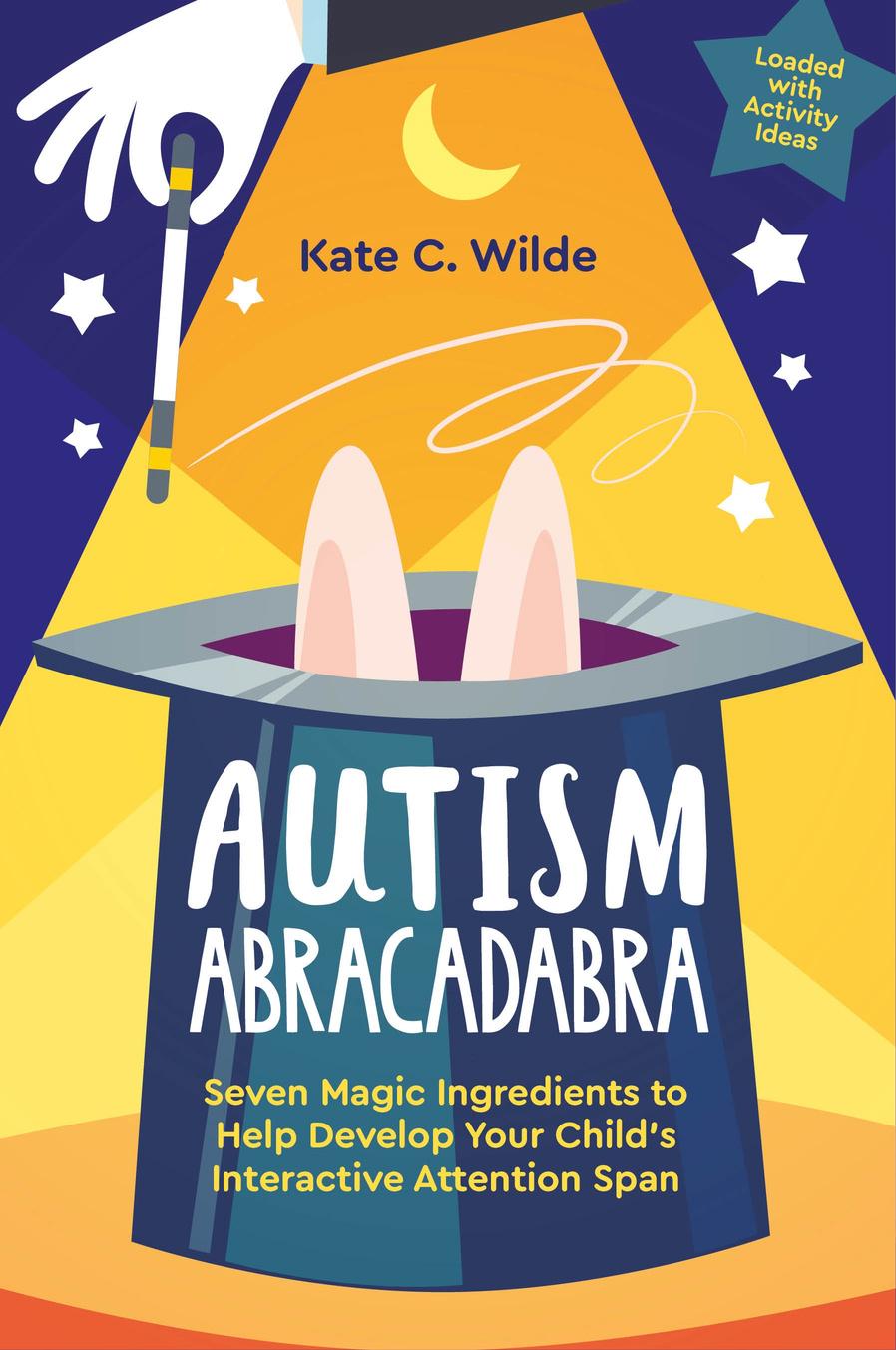
Kate shows how seven magic ingredients for optimal game-playing can be applied to a range of themes, from trains and planes to household appliances, the human body to animals and insects, TV and film characters, and what's more, how you can introduce your loved one's favorite topics.
She shares "Presto Chango" beliefs - the five mindsets you need to power activities - as well as how to understand the magic of timing and knowing when to start and stop an activity based on your loved one's cues.
T O P U R C H A S E O N A M A Z O N h t t p s : / / a m z n . t o / 3 j C 8 6 h u 48 | Exceptional Needs Today | Issue 13 MENTAL HEALTH SUPPORT

Our NeedsExceptional Journey:
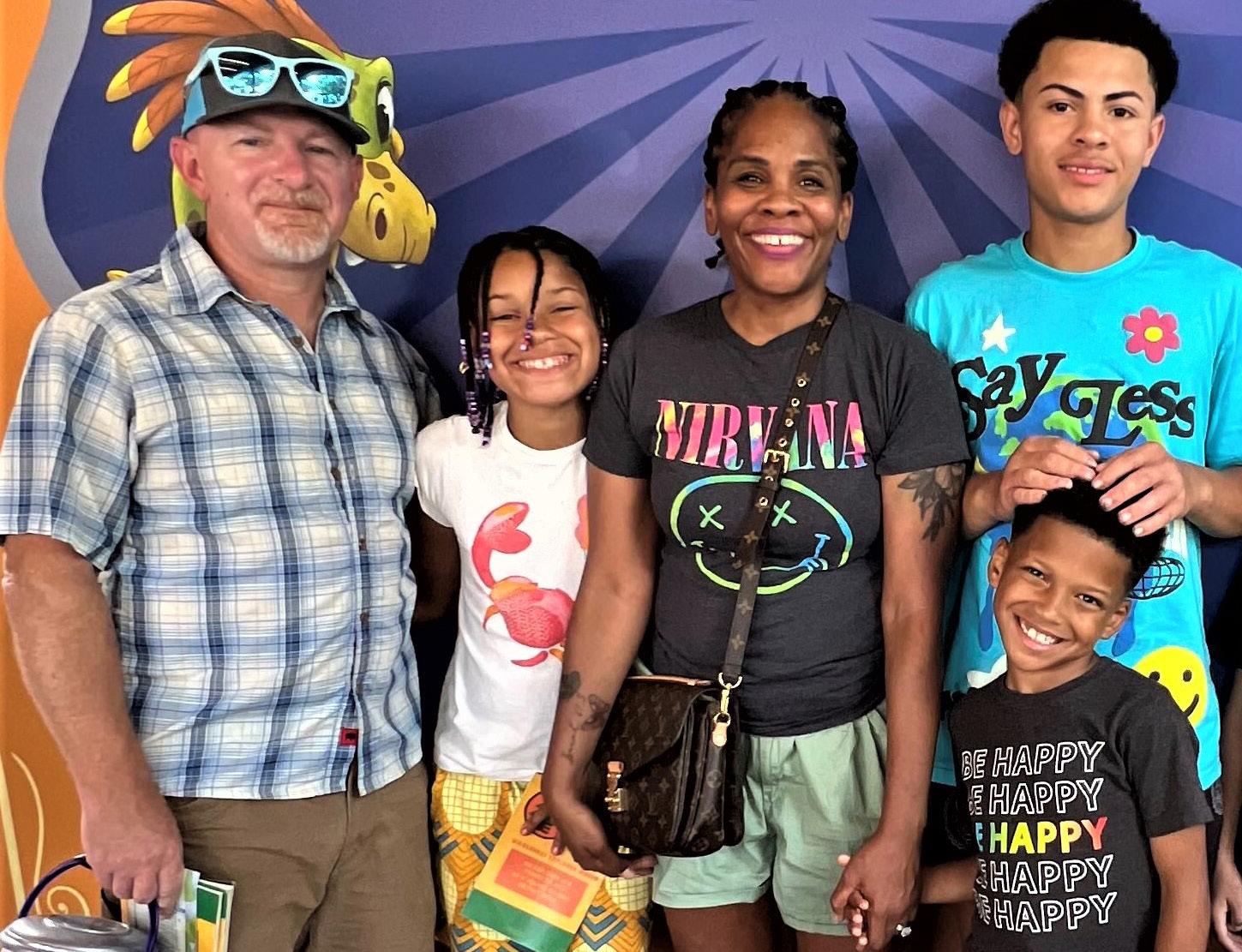 By Dr. Mary H. Jones, MD, FAAP
By Dr. Mary H. Jones, MD, FAAP
50 | Exceptional Needs Today | Issue 13 MY WORD
How Moving to Another Country Created a Calmer Life
AUGUST 13TH, 2020, IS A DAY THAT WILL BE EMBLAZONED IN MY MEMORY FOREVER. THIS WAS THE DAY MY FAMILY OF SEVEN MADE A MOVE THAT CHANGED OUR LIVES—LITERALLY. THIS WAS THE DAY WE EMBARKED ON A JOURNEY THAT WOULD TAKE US FROM OUR FAMILIAR HOME IN BIRMINGHAM, ALABAMA, TO OUR NEW AND VERY DIFFERENT ONE IN LAS TERRENAS, DOMINICAN REPUBLIC.
it seemed like a crazy experiment headed for doom. We didn’t plan it this way, but…COVID-19! I am pretty sure a lot of us could have said this about August 2020. We were all forced to rearrange our lives, either putting them on hold or speeding up pre-pandemic plans.
I know it sounds insane. But this move was everything my family needed. Even before the pandemic, we had become burnt out. Too much work and too many activities that necessitated too many hours in the car had us exhausted. Most nights, we ate dinner in the car or at a fast-food restaurant. In 2019, after visiting Las Terrenas and falling in love with the pace and tranquility, my husband and I decided to buy a vacation home there. By December of that year, we had not only purchased this home but decided to make a radical move and live there permanently with our growing family. The pace is slower, and the vibe is relaxed. We felt it would be a great place to raise our kids and reconnect as a family.
Don’t get me wrong. The kids HATED the idea at first! There was weeping and gnashing of teeth to Biblical proportions, especially by our oldest child. But, even with all the teenage angst, my husband and I decided to forge ahead with the plan.

The logistics, as you might imagine, were crazy with a capital C. Especially with both countries being shut down for most of 2020. Even without all of that, it was a huge undertaking to move a family the size of ours (plus two dogs) to another country.
An additional complication of our move is that one of our children has autism spectrum disorder (ASD), and three others are diagnosed with attention-deficit hyperactivity disorder (ADHD). I am a pediatrician, and my husband is also a physician. So, piece of cake, right? Not so much. I began to research before our move on how to make the transition between the great schools and services available in Birmingham to new ones in the Dominican Republic as seamless as possible. This was no easy task since we were only basic Spanish speakers at the time, and very little English was spoken in our town. We needed to find a school, a doctor, and a way to get medication for the kids who needed it in another language!
The learning curve was steep, but it was completely worth every second. We have become so much closer as a family. My children are each thriving in their own ways. They have been able to make their own friends, grow roots here, and maintain ties to the US. My husband and I have been so blessed to be able to provide this opportunity for them.
This move may have seemed crazy and reckless to some, like a disaster waiting to happen especially because it was in the middle of the COVID-19 pandemic! Add in the fact that our children had never been to the island until the day we landed;
The pace is the most important difference between our lives here and in the US. We have been able to slow down enough to notice what each child needs, likes, and gravitates towards. We have been able to nurture their natural abilities and talents so much more, as well as work to smooth any rough edges that come about. One big thing that has come to light is the differ-
Exceptional Needs Today | Issue 13 | 51 MY WORD
ence in each child’s learning styles. Because the schools here are smaller, we have been able to tailor their education to suit
them. We are doing both virtual and in-person options depending on the child. This would have been difficult to pull off in the US.
Right now, after almost three years here, we are very happy we embarked on this amazing adventure with our family. We would not hesitate to do it again. This type of radical move isn’t for every family; every situation is different. But I hope our story will inspire others to think differently about what is possible.

Want to learn more about our family and how we are adjusting? Please stay tuned for part two of this article coming soon!


Dr. Mary H. Jones, MD, FAAP, is a physician and PCCI-trained life and leadership coach. She believes there is greatness in each of us and is passionate about equipping and empowering women to reach their fullest potential. Throughout her life and career, she has had the privilege of working to empower and equip women and girls to be their best selves. Each day, Dr. Jones has had the privilege of spending time coaching amazing women who are reaching their goals and fulfilling a compelling vision for their lives. Her vision is to see women living out their purpose and effecting change in their own spheres of influence.

52 | Exceptional Needs Today | Issue 13 MY WORD
Krystian Shaw and Giving Back:
Promoting Community Inclusion and All Abilities
By Amy KD Tobik, BA
Krystian Shaw: Publisher/Owner of the Kamloops Self Advocate Newsletter, Self-Advocate
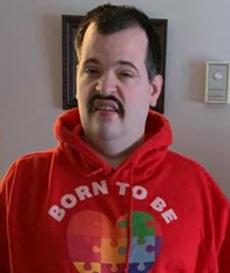
Krystian Shaw was born with an intellectual disability and was never expected to read or write. His determination is an inspiration as he is the passionate publisher of a 12-page newsletter he distributes in Kamloops, B.C. and online. The newsletter is his gift back to the community for all the support he has in his life. Krystian shared the motivation behind his work and mission with Exceptional Needs Today Editor-in-Chief Amy KD Tobik.
What inspired the launch of Kamloops’s Self Advocate Newsletter?

Krystian: Different support services supported me, and I wanted to support people too in my own way.
What is your mission?
Krystian: We promote community inclusion, including ideas like social justice, social inclusion, kindness and compassion, anti-bullying, mental health issues, and all disabilities. We promote success stories about the challenges that many face. Instead of focusing on a label, we like to refer to the idea of diverse abilities. We promote entertainment, lifestyle issues, and community events. We also promote the idea of reducing
Exceptional Needs Today | Issue 13 | 53
stigma and discrimination, preferring to stomp it out completely.
Our goal is to spread awareness about what people with different abilities can do, not what we can’t do. We highlight different themes in the newsletter and include ideas about different topics every month. Recreation and leisure are important to us, as well as social issues that affect our diverse communities, including Indigenous people as well as the LGBTQ+ community. We also promote different causes and things happening in the disability field.
Your newsletter contains a variety of articles, from interviews and success stories to entertainment and community events. What are your favorite topics?
Krystian: My favorite topics are interviewing singers and songwriters. I have interviewed reality TV stars with Down syndrome from a show called Born This Way. I have even interviewed autism comics and mental health comics, and many more.
What’s the kindest thing a stranger has said about your work?
Krystian: They love my newsletter.
The name of this column is Positive Voices. How are you a positive voice in the community?
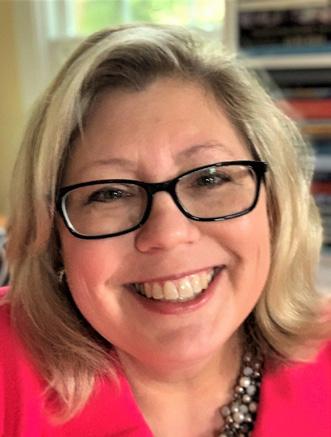
Krystian: I promote all different kinds of social issues, including disability awareness topics.
What would you say are the major challenges affecting people with diverse abilities today?
Krystian: Stigma, discrimination, stereotypes, and myths about living with diverse abilities.
What’s something you wish more people talked about regarding different abilities?
Krystian: Mental health awareness and different social issues, including LGBTQ+ and disability topics.
Is there a person who has made a big impact on your life? How?
Krystian: Justine Richmond from the Community Companion program helped me start the newsletter and taught me how to run my own newsletter so I could be independent. She went above and beyond her program and taught me how to do it; now she only edits with me for free. I am thankful for her help and guidance. The Community Companion program is a peer support program for those with developmental disabilities in Kamloops. I get support from here. Their website is www. nhclss.ca/community-companion-program/.
Please tell us a little about yourself. What makes you Krystian?
Krystian: I love country and most kinds of music. I love helping people out like myself. I have mild intellectual disabilities as well as an anxiety disorder. I wanted to support people with diverse abilities in any way I could; that’s the main reason I started the newsletter. I couldn’t go to university to get a college degree in the disability field because I need minimal support myself. I got lots of different supports in my life as a kid, and now as an adult, I wanted to return the favor and support people too. I wanted to give back to society for all the support I got in my life.
Do you have any outside hobbies or activities?
Krystian: Listening to YouTube music videos, Disney Plus, watching Home Alone, and other movies. I am a big fan of Christmas movies, musicals, and documentaries.
How can people access your free publication and resources?
Krystian: They can visit issuu.com/thekamloopsselfadvocate
Website: ksanews.ca
Facebook: www.facebook.com/TheKamloopsSelfAdvocateisgoingglobal
Resources: Shaw Spotlight www.youtube.com/watch?v=YEaObbdhi5c
BC Disability
https://www.bcdisability.com/post/krystian-shaw
AccessibleEmployers.ca
https://accessibleemployers.ca/member/the-kamloops-self-advocate-newsletter/
Amy KD Tobik, BA, is the Editor-in-Chief of Exceptional Needs Today magazine. She coordinates and directs an impressive group of doctors, therapists, and writers to provide expert guidance and support for special needs families. A graduate of Sweet Briar College in VA, Amy’s experience includes more than 30 years of writing/editing monthly magazines, newspapers, technical documents/ manuals, books, and websites. Her special interests include advocating for children, special needs families, and education. She is the CEO of Lone Heron Publishing, LLC.
Website: exceptionalneedstoday.com
LinkedIn: linkedin.com/in/amy-kd-tobik-a8b05bb
54 | Exceptional Needs Today | Issue 13 EXCEPTIONAL ADVOCATE
Employability Skill Building When There Are Learning Disabilities
 By John Civita, MS Ed
By John Civita, MS Ed
FOR MANY EMERGING YOUNG ADULTS WITH LEARNING DISABILITIES, FINDING AND KEEPING A JOB CAN BE A DAUNTING TASK. THE NEUROTYPICAL WORLD OF EMPLOYMENT IS OFTEN NOT DESIGNED WITH NEURODIVERSE PEOPLE IN MIND. MANY TRADITIONAL WORKPLACES OPERATE UNDER THE ASSUMPTION ALL EMPLOYEES HAVE THE SAME COGNITIVE AND BEHAVIORAL ABILITIES, WHICH CAN BE A DISADVANTAGE FOR THOSE WHO HAVE NEURODIVERGENT TRAITS OR DIAGNOSES SUCH AS AUTISM SPECTRUM DISORDER (ASD), NONVERBAL LEARNING DIFFICULTIES, ATTENTION-DEFICIT HYPERACTIVITY DISORDER (ADHD), EXECUTIVE FUNCTIONING CHALLENGES, DYSLEXIA, OR ANXIETY.
Exceptional Needs Today | Issue 13 | 55 SKILLS FOR LIFE
Additionally, neurodiverse individuals may face barriers in the job search process. Biases may exist during the hiring process. Challenges in communicating strengths and skills in traditional job interviews hinder chances in a competitive environment. Furthermore, navigating social dynamics and “office” politics, following directions, complex and inflexible work routines, or managing sensory sensitivities in open workspaces can be incredibly difficult, too.
It is important to note the employment rate for adults with learning disabilities varies widely depending on the specific type of disability and the severity of the impairment. However, according to a report by the National Bureau of Economic Research, in the United States, the employment rate for adults with any type of disability, including learning disabilities, was approximately 21% in 2022.
It is also important to note there are variables that exist. Individuals with learning differences may be underemployed, and others may not be diagnosed or recognize they have a disability.

Disclosure is another defining factor and for individuals with mild intellectual impairments or “invisible disabilities,” choosing to disclose or not is complicated. Individuals with exceptional needs may wonder, “Will it be held against me during the interview process? If I do not disclose this at work, will they find out sooner or later? If I don’t disclose, am I running the risk of not getting the support I need to be successful and find sustainability?” However, disclosure can lead to more access to support, similar to disclosure in a college environment leading to greater success. Employers, by law, cannot discriminate against any disability, so learning how to articulate an individual’s needs will, in turn, demonstrate awareness, and that is a strength.
Developing key employability skills for young adults with learning disabilities is paramount to increase opportunities and growth in this crucial next step in life.
1. Practical communication skills are essential in any job, especially for young adults with learning disabilities. Struggles with language processing, social cues, and body language, affecting communication with colleagues, managers, and customers, may exist for many. Listening and speaking in different settings, such as family and friends, social settings, or with online resources, helps develop vital communication skills. However, most importantly, having real-world experiences in a job setting through internship opportunities with structure, support, guidance, and feedback is imperative to the individual’s ultimate growth in this area.
2. Time management and organizational skills are critical for success in any job. For many individuals with learning
challenges, there are often overlapping executive functioning difficulties or delays, which impact decision-making, following directions, planning and organizing, prioritizing, and task initiation and completion. To improve time management and organization, young adults with learning disabilities can start by setting goals, breaking them down into smaller, manageable tasks, and creating a schedule or to-do list. Calendars, alarms, and reminders to stay on track and minimize distractions are also helpful tools. Taking notes or asking for directions in written form supports comprehension and greater success with task completion.
3. Critical thinking and problem-solving skills are valued by employers. To improve problem-solving and necessary thinking skills, young adults with learning disabilities can practice analyzing information, brainstorming ideas, and evaluating solutions to problems. They can also seek opportunities to learn from others through mentorship programs or job shadowing. Developing problem-solving and critical thinking skills can help tackle challenges in the workplace and demonstrate value to employers.
1. Adaptability and flexibility are essential skills in today’s competitive, fast-paced job market. For young adults with learning disabilities, adapting to new situations and
56 | Exceptional Needs Today | Issue 13 SKILLS FOR LIFE
learning new skills can lead to success in various job settings. Engaging in diverse experiences and challenges, such as volunteering, internships, or part-time jobs can improve adaptability and flexibility. More exposure can lead to more comfort and confidence. Practicing being open-minded, flexible, and willing to learn from mistakes, by “failing up,” is another step in the right direction.
2. Self-advocacy and self-awareness are crucial skills for young adults with learning disabilities to succeed in the workplace. Articulating strengths, needs, and accommodations to employers and self-advocating when necessary is imperative. To improve self-advocacy and self-awareness, seek out support and resources from disability services organizations, self-advocacy groups, and mentors. Practice with identifying strengths and areas of growth, developing self-care routines, and setting realistic goals supports this as well.
Closing thoughts
Although there may not always seem to be a level playing field, there is growing awareness and advocacy for accommodating neurodiversity in the workplace. Some companies are implementing neurodiversity initiatives, adapting work environments and practices to support individuals with diverse cognitive profiles. These include changes in communication styles, flexible work arrangements, and the provision of sensory accommodations.
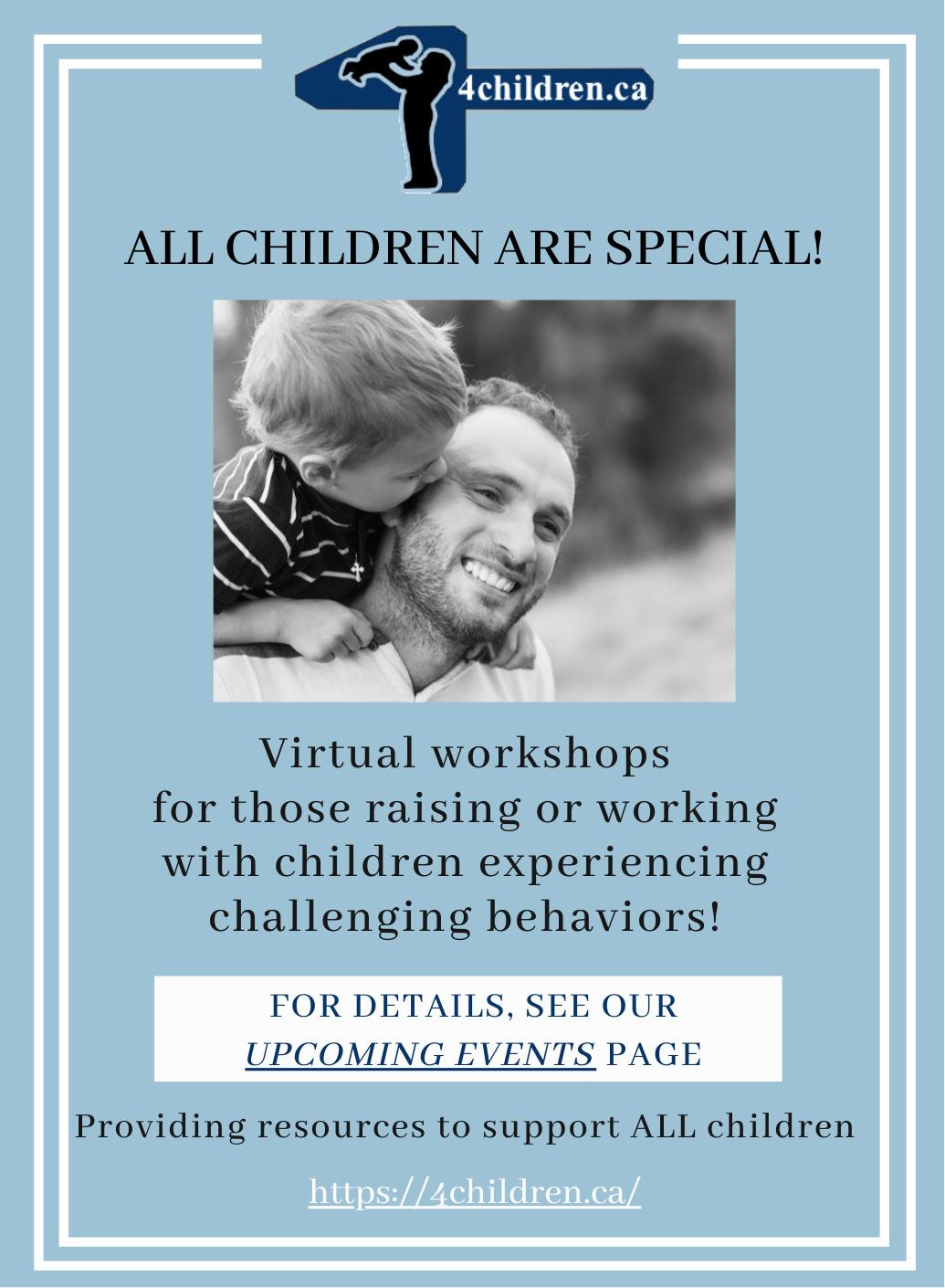

Nonetheless, greater efforts are needed to create inclusive work environments that celebrate and value neurodivergent employees’ contributions and unique talents. There is still room to increase the chances of success in the job market with the right employability skills, awareness of a disability, and the ability to self-reflect, self-advocate, manage, organize, and communicate effectively. Developing these skills through practice, education, and support can increase their chances of finding and keeping meaningful employment. With determination, perseverance, proper skill development, and learning opportunities, young adults with learning disabilities can overcome their challenges and achieve their career goals.
References
(n.d.). Persons with a Disability: Labor Force Characteristics Summary. U. S. Bureau of Labor Statistics. https://www.bls.gov/news.release/disabl.nr0.htm
(n.d.). Factors Affecting Disability Disclosure in Employment Setting for Individuals with Intellectual Disability. National Library of Medicine. https://www.ncbi.nlm.nih.gov/pmc/articles/PMC9959408/
Qualities of a sustainable and independent learner (QSIL). Winston Preparatory School. (n.d.). Retrieved December 30, 2022, from https://www.winstonprep.edu/list-detail?pk=106884
John Civita, MS Ed, is the Director of Transitions Programming for the Winston Preparatory School. Winston Transitions is an extension of the Winston Preparatory School educational experience with NYC and San Francisco campuses. He is the founding director of Winston Transitions, a program for young adults aged 17-21+ with learning differences, focused on building academic skills while developing life and work readiness. His experience includes 20 years of working in education, emphasizing language processing, nonverbal processing, and executive functioning difficulties. He is also experienced in supporting adults with learning differences and their families with a particular interest in sustainability, employment, goal setting, and problem-solving.
LinkedIn: www.linkedin.com/in/john-civita-25b61248 Websites: Winston Transitions New York City, Winston Transitions San Francisco
Exceptional Needs Today | Issue 13 | 57 SKILLS FOR LIFE
Regulation and Co-Regulation: Accessible Neuroscience and Connection Strategies that Bring Calm into the Classroom
 By Ginger Healy, MSW, LCSW
By Ginger Healy, MSW, LCSW
What are the keys to bringing emotional stability to your home and classroom through balanced regulation and co-regulation?
We’ve all seen or experienced them: chaotic moments when emotional equilibrium gives way to outbursts of anger, arguments, tears, and turmoil. The results of such dysregulation are rarely positive, and days can be lost in the fallout.
Packed with clear definitions, facts and statistics, heartfelt stories, and applicable discussion points, Regulation and Co-Regulation is rooted in the principle that relationships come first - it only takes one safe, committed adult to help a child heal and build resilience through co-regulation.
In this book, you’ll discover:
• an emphasis on diversity and inclusion of neurodivergent students
• the vital link between child stress and academic performance
• how to recognize the often-subtle signs of dysregulation
• the danger of mistaking calm and quiet for healthy regulation
• sound ways to adapt regulation principles to each child’s unique makeup
• the importance of engaging parents, families, and communities
• ...and more!
Tackling this critical aspect of learning head-on, Regulation and Co-Regulation holds out unapologetic hope for healing. As you absorb and apply the wisdom within these pages, get ready: a domino effect will begin when you embrace a new lens of thinking and responding. Everyone in your life - including you - will benefit from the tools you employ to make co-regulation a consistent reality for children.
“The pocket-guide to Co-Regulation!”
—Dr. Mona Delahooke, author of Beyond Behaviors and Brain-Body Parenting

TO PURCHASE: www.amazon.com/Regulation-Co-Regulation-Accessible-Neuroscience-Connection/dp/1953945791
Ginger Healy, MSW, LCSW, is a clinical social worker with almost 30 years of experience in the field. Ginger has worked as a child abuse investigator, hospital social worker, and school therapist. She spent 15 years as the social service supervisor at an international adoption agency and was able to travel to provide support for orphanages all over the world. This job continues to inform her work on attachment and trauma needs in children. She is currently the director of programs for the Attachment & Trauma Network where she co-anchors the podcast “Regulated and Relational” and speaks across the nation on trauma-informed schools, therapeutic parenting, and community engagement. Ginger is married and has four children who have been her greatest teachers about developmental trauma and special needs. She loves to travel and read.
EXCEPTIONAL BOOKS
ADVERTISEMENT
• Who will care for my child when I’m gone?
• How do we access and keep public benefits?
• How much money will it take to support our child?

ValiantFutures.com off ice@valiantfutures.com 760-854-4003
WE STRIVE TO MAKE SMART FINANCIAL PLANNING ACCESSIBLE TO ALL FAMILIES.
The School-toPrison Pipeline:
How Current Disciplinary Approaches Fail Kids
 By Guy Stephens
By Guy Stephens
60 | Exceptional Needs Today | Issue 13 EXCEPTIONAL ADVOCATE
It’s time we discuss the discipline problem in our schools and how many children are chronically misunderstood and punished in the name of behavior. Children are restrained, secluded, suspended, expelled, and subjected to corporal punishment due to their behavior. At the root of the discipline problem is that many traditional views and approaches around behavior are not working for children who most need our help. In fact, many of the standard methods are ineffective, and some of the approaches are harmful.
Today, many of the traditional techniques used in classrooms are based on rewards and consequences. The reward and consequence model centers on a belief that many people have around behavior, the idea that all behavior is a matter of choice. How often have we heard comments such as, “You need to make better choices?” Or, “You know, you’re making bad choices.” In a lot of classrooms, the focus is on compliance. So often, the guiding ideology is, “How do we get people to comply with what we want them to do?” Children who cannot meet expectations are far more likely to be subjected to discipline. We need to look beyond the idea that all behaviors are a choice. What we can learn from modern neuroscience is that behaviors are often not volitional but rather an autonomic response of our brain and nervous system, which is wired to keep us safe.
Some children are far more likely to be misunderstood than others, as demonstrated by the discipline data from the United States Department of Education Office for Civil Rights. In the data, we find that children with disabilities, Black and brown children, and children with a trauma history are far more likely to be misunderstood and more likely to be disciplined in very punitive ways. Who else is at an increased risk? Children who are adopted, kids in the foster care system, kids with generational trauma, households with mental illness, and households with substance abuse.
About 20 years ago, the Center for Disease Control (CDC) and Kaiser Permanente conducted the adverse childhood experiences (ACE) study. This study found that childhood abuse and neglect led to challenges and later-life health and well-being. Children that have experienced childhood trauma and adverse childhood experiences are more likely to be misunderstood.

If we look at the kids prone to big behaviors, these kids need support and help. However, often big behaviors in school lead to harsh discipline. These punitive consequences can even lead kids down the school-to-prison pipeline and into the criminal justice system. Chronically disciplined kids become disengaged. School is not a safe place, nor a place they want to be. When a child disengages, they are more likely to drop out and end up in the juvenile justice system. Let’s look at data on our state and federal prisons. A tremendous number of prisoners are people with disabilities. Data shows that 60% of those incarcerated in state or federal prisons have some form of disability; this isn’t a positive outcome for kids, families, or society. We can do better, we can do better, by changing the way we work with and support kids.
So, the question becomes, why are some kids being chronically misunderstood? Again, many of the approaches used in our schools are not working. Often, these approaches
“The reason reward and punishment strategies haven’t helped is because they won’t teach your child the skills he’s lacking or solve the problems that are contributing to challenging episodes.” ― Dr. Ross Greene
“Do the best you can until you know better. Then when you know better, do better.”
Exceptional Needs Today | Issue 13 | 61 EXCEPTIONAL ADVOCATE
― Maya Angelou
are heavily influenced by operant conditioning and reward and consequence models. When providing rewards and consequences to a child for either meeting or failing to meet behavioral expectations, we assume that all behavior is a matter of choice. There is an underlying belief that a child will be motivated to meet the demands placed upon them with the right incentives or consequences. This approach not only assumes that a child can meet the demands placed on them but that it is a matter of choice when they do not. Behavior is far more complex than just willpower. Many things contribute to behavior. A neuroscience-informed view of behavior is that behavior is biology. We are hardwired for survival, and many behaviors are not, in fact, intentional but rather stress responses that originate from the autonomic nervous system.
Behavior is biology, and behavior is not always intentional. Kids with aggressive episodes are often having a difficult time and are not intending to do harm. We see this by just looking at the definition of the word behave. The word “behave” is defined as “acting in a particular way or doing things in a particular way, or managing the actions of oneself in a particular way.” The problem with this definition is that it assumes intent. The word discipline is not much better. One definition of discipline is “the practice of training people to obey rules or a code of behavior, using punishment to correct disobedience.” This definition clearly demonstrates a compliance mindset. However, if you look at the origin of the word discipline, it comes from a word that means to teach. If you look at the word discipline through this lens, we should be moving from doing things to people (compliance-based approaches) to teaching them or doing things with people. When people make mistakes or have behaviors, shouldn’t we be supporting them and helping them to do better in the future?
What else contributes to children being misunderstood? The very language we use has a lot to do with how we see the world and how we see kids that are having a difficult time. Our children are often described as challenging, violent, dangerous, manipulative, maladaptive, attention-seeking, and defiant. If we look at kids through this lens, we’re making judgments that may not be true.
It’s time to shift our mindset and approach around children’s behavior. It’s time to move past approaches that only aim to manipulate behavior to approaches that are traumainformed, relationship-driven, collaborative, and founded in neuroscience. Today we know better and can do better for our children. In the next part of this series, I will address the foundational neuroscience that can help us shift our approach and lead to better outcomes for our children. This article is Part One of Two.
Guy Stephens lives in Southern Maryland with his wife and two amazing children. He is the Founder and Executive Director of The Alliance Against Seclusion and Restraint (AASR), a nonprofit he started in 2019. AASR is a community of over 25,000 parents, self-advocates, teachers, school administrators, paraprofessionals, attorneys, related service providers, and others working together to influence change in supporting children whose behaviors are often misunderstood. He has presented at conferences and events across North America and guest lectures for undergraduate and graduate courses as a national expert on the issue of restraint and seclusion.

Website: endseclusion.org
Facebook: www.facebook.com/endseclusion
Twitter: twitter.com/endseclusion
LinkedIn: www.linkedin.com/company/alliance-againstseclusion-and-restraint
YouTube: www.youtube.com/c/ AllianceAgainstSeclusionandRestraint
Instagram: www.instagram.com/endseclusionorg
“Rewards and punishments are both ways of manipulating behavior. They are two forms of doing things to students. And to that extent, all of the research that says it’s counterproductive to say to students, ‘Do this, or here is what I’m going to do to you,’ also applies to saying, ‘Do this, and you’ll get that.’”
― Alfie Kohn
“Traditional discipline works best with the children who need it the least”
― Lori Desautels, Ph.D.
62 | Exceptional Needs Today | Issue 13 EXCEPTIONAL ADVOCATE
When providing rewards and consequences to a child for either meeting or failing to meet behavioral expectations, we assume all behavior is a matter of choice.
Five Reasons Disability Inclusion in The Arts Is Essential
 By Dr. Rhoda Bernard, EdD
By Dr. Rhoda Bernard, EdD
THE ARTS PROVIDE US WITH SO MANY WAYS TO LOOK AT THE WORLD, TO EXPERIENCE SOMETHING TOGETHER AS A COMMUNITY, TO ESCAPE THE DAY-TO-DAY ACTIVITIES OF OUR LIVES, AND TO GROW AS INDIVIDUALS AND AS A SOCIETY. UNFORTUNATELY, IT IS OFTEN THE CASE THAT DISABLED PEOPLE ARE NOT INCLUDED IN THE ARTS AND DO NOT HAVE ACCESS TO SUCH EXPERIENCES.
Exceptional Needs Today | Issue 13 | 63 MY WORD
There are many reasons for this situation. It might be because an arts venue is not accessible or because accessibility supports, like audio description, sign language interpretation, and CART captioning, are not provided. Or it might be that people with disabilities are not represented in the arts. They might not be considered in casting decisions, or their work might not be eligible for exhibitions.
At the Berklee Institute for Accessible Arts Education (BIAAE), we believe the arts better the lives of everyone. We are a catalyst for the inclusion of people with disabilities in all aspects of visual and performing arts and arts education. In this article, I would like to share five reasons why inclusion in the arts matters.
1. Engaging in the arts is a basic human right
Human beings are the only living creatures that create and share art. The arts are one of the activities that make us uniquely human. The opportunity to engage in the arts, be it through art making, as a viewer of art, or as an audience member, is a basic human right for every person on our planet. It is critical all human beings can exercise this right by taking part in the arts and related experiences.
2. The arts provide unique avenues for self-expression
Through the arts, people can express themselves in unique ways. They can use pictures, gestures, symbols, sounds, movement, and more to communicate what they would like to say. The arts give people a unique voice—one that can often say more than words alone. Many people feel more comfortable expressing themselves through the arts than through words. It is essential all people have the opportunity to engage in self-expression through the arts.
3. The arts provide unique opportunities to experience emotions
Humans are emotional beings, and emotions are a significant part of our lives. The arts often provide new contexts for experiencing emotions. Emotional experiences through the arts often take place without words and sometimes occur without conversations or direct interactions. Sometimes it can be safer for people to experience emotions through the arts than in other contexts. Denying people artistic experiences limits the ways they can experience emotions.
4. The arts are powerful ways of knowing

There are certain ways of knowing that the arts provide that cannot be found elsewhere. The process of creating a painting or collage opens aspects of knowing through visual creation.
Knowing through shared musical creation takes place when people make music together. Through these and other artistic ways of knowing, people learn about themselves, each other, their world, and their culture. The ways of knowing people experience through the arts are important sources of unique knowledge that must be a part of all people’s lives.
5. The arts are unique venues to learn, grow, and succeed
The arts provide people with opportunities to succeed. For many individuals, the arts are the context where they are able to be their best and learn the most. Many experience their greatest joy in making and engaging with art of various kinds.
64 | Exceptional Needs Today | Issue 13 MY WORD
Some people who find other areas of their lives challenging truly shine in the arts. It is essential all people have every opportunity to learn, grow, and succeed, and the arts are a key way of doing so.
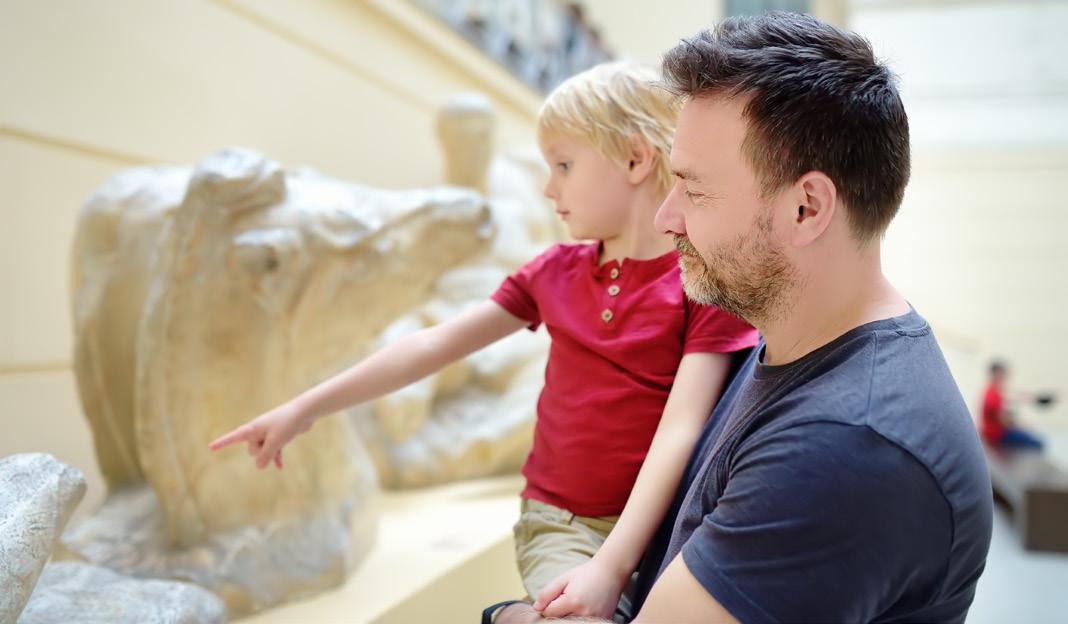
At BIAAE, we provide Arts Education Programs to individuals with disabilities, ages three to 93. We have programs that meet in person in Boston as well as programs that meet online. If you want to learn more about the Arts Education Programs at the Berklee Institute for Accessible Arts Education, please visit college.berklee.edu and then go to Arts Education Programs.
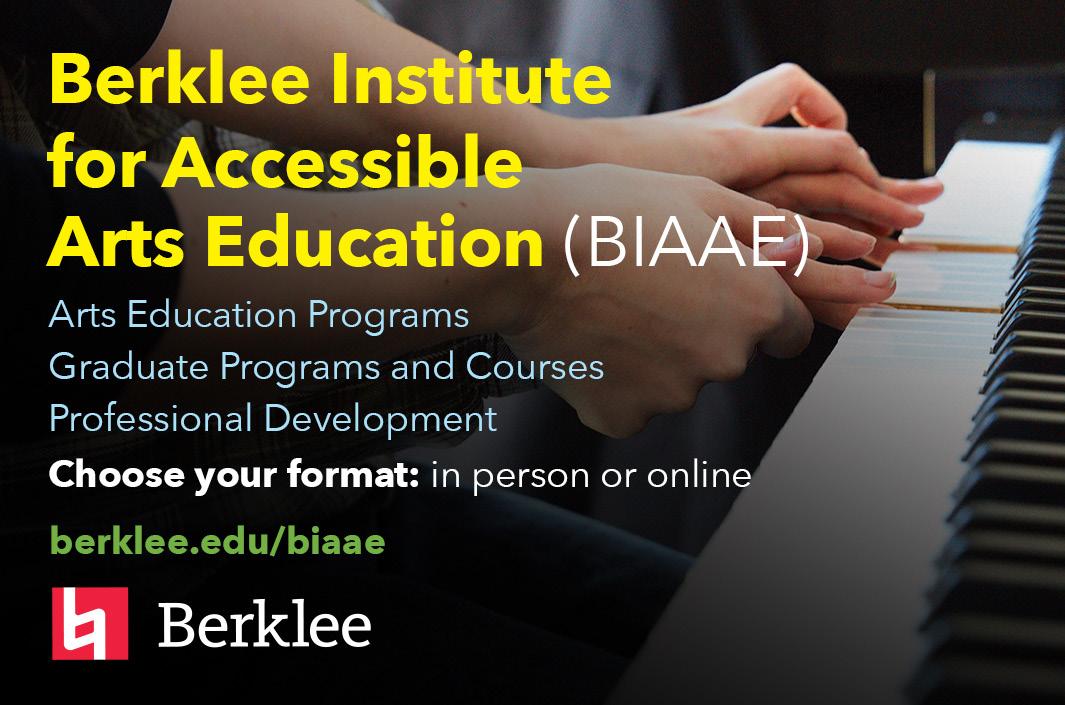
Dr. Rhoda Bernard, EdD, is the Founding Managing Director of the Berklee Institute for Accessible Arts Education and the Assistant Chair of Music Education at Berklee College of Music. She holds a Bachelor of Arts cum laude in Government from Harvard University and a Bachelor of Music with academic honors in Jazz Voice from New England Conservatory. She earned both her Master of Education and Doctor of Education degrees from the Harvard Graduate School of Education. Dr. Bernard regularly presents keynote presentations and research at conferences throughout the United States and abroad, and she provides professional development workshops for educators in local, national, and international forums. Her work has been published in several book chapters and in numerous peer-reviewed journals, and she serves on several editorial boards. Dr. Bernard received the Berklee Urban Service Award (2017), the Boston Conservatory Community Service Award (2011), the Boston Conservatory Faculty/Staff Spirit Award (2007), and the Outstanding Dissertation Award, Honorable Mention (Second Place) from the Arts and Learning Special Interest Group of the American Educational Research Association. An active arts education advocate, she is the immediate past chair of the Arts Education Advisory Council of Americans for the Arts, and she serves on their speakers’ bureau.

Exceptional Needs Today | Issue 13 | 65 MY WORD






66 | Exceptional Needs Today | Issue 13 MEDIA KIT advertising@exceptionalneedstoday.com EXCEPTIONAL NEEDS TODAY R E A C H Y O U R B U S I N E S S G O A L S ADVERTISE WITH US
THE FRIENDSHIP & DATING DUO
Stop Building Barriers to Social Success When There Is an Autism Diagnosis
By Jeremy Hamburgh and Ilana Frank
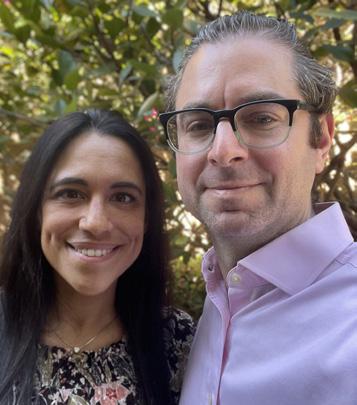
THERE ALWAYS SEEMS TO BE SOMETHING THAT NEEDS TO GET DONE AND STANDS IN YOUR WAY OF GETTING STARTED ON THE SOCIAL LIFE AND RELATIONSHIPS YOU’VE ALWAYS WANTED. SOME OF THEM ARE BIG THINGS: FIND A SCHOOL. START SCHOOL. FINISH SCHOOL. SEARCH FOR JOBS. LAND A JOB. LAND A BETTER JOB. MOVE OUT. MOVE IN.

Exceptional Needs Today | Issue 13 | 67
Some of them are smaller things: Go food shopping. Cook dinner. Clean up. Take out the garbage. Play some video games. Watch the newest videos on TikTok. Oh, and buy sneakers to replace the ones that are falling apart.
Tasks, tasks, tasks. It can feel exasperating! And what’s worse, no matter how many items you cross off your to-do list, there always seem to be more tasks that need tackling and accomplishments that need accomplishing. Sometimes it feels like you cannot get ahead, no matter how hard you try. And since you feel like you’ve fallen behind, the idea of taking on “one more thing” feels unwise, especially when it’s a big thing, like being more social. After all, if you’re barely getting things done now, what’s going to happen when you elect to take on something that’s life changing?
The truth is that making friends, dating, and building a social life requires skill and strategy, and building both of those things requires effort. If you aren’t willing to put in that effort, you’re not going to settle on your strategy and sharpen your skills, and life will continue along the same trajectory it’s on now.

But here’s the good news…You are absolutely capable of finding the time and putting in the effort so you can have the skills and strategy you need to spark a connection with people who’ll make your life feel fulfilling.
How do you start? Simple: By not putting up barriers to your social success. You can go food shopping, cook dinner, clean up, take out the garbage, and buy new sneakers…and still have time to pursue the social life you want. You can find a school, start your classes, finish your exams, search for jobs, go on interviews, move out of the house, and live more independently…and still have time to pursue the social life you deserve.
The items on your to-do list may feel like barriers because they require fairly immediate attention, but they’re not barriers at all. They’re simply tasks, some bigger and some smaller. And what’s important is this: They can be accomplished alongside other priorities, like building the strategy and skills for connecting with new people, making new friends, and finding a romantic partner.
The idea that you need to complete one priority in its entirety before starting on another is simply false. It may even be your defense mechanism that allows you to put off the hard things until some future date that never comes. In other words, “How can I focus on making friends and dating when I still have to look for a job?” sounds like a perfectly reasonable rationalization for procrastination.
But it isn’t reasonable at all. Rather, it’s a self-imposed barrier that keeps you stuck. My mentor calls it “getting ready to get ready,” and it’s a classic delay tactic that allows you to put off
68 | Exceptional Needs Today | Issue 13 SKILLS FOR LIFE
the effort it takes to accomplish what you truly want under the guise of needing to accomplish something else first.
Here’s the truth: You are absolutely capable of having deep friendships and relationships, and you are absolutely capable of getting started now.
More than that, you should get started right now. And we say that because the world feels really topsy-turvy right now, and there are many people out there who can really use your light and love. It’s true: There are countless people all around your community who feel lonely, isolated, unseen, unheard, and just plain scared. They want connection every bit as much as you do, but many of them don’t know how to make it happen or they’re just too stuck to try. So, if they can’t make it happen on their own, who will help them?
You will! Because you have light and love to give. Because time can always be found to build the strategy and skills that allow you to spread that light and love. And because, when you bring your light and love to others, not only do you change your life, but you change their lives, too.
Will there be days when you’re too tired to work on your social strategy? Yes. Will there be days when you don’t have enough time to have lunch, let alone work on your social skills? Yes. Will there be days when you just need to focus on getting something accomplished, and that item takes priority over socializing? Yes. But there are 168 hours in a week, and only about 60 of them are spent sleeping, so let’s stop putting up barriers that don’t actually exist! Instead, let’s talk about how to accomplish everything on your to do list and make the world a friendlier place (and enjoy a vibrant social life in the process).
Jeremy Hamburgh and Ilana Frank run the Social Life 360 program (www.MyBestSocialLife.com), which is a groundbreaking program that empowers autistic adults to meet new people, make new friends, start dating, and build relationships using a combination of science-based social strategy, wrap-around coaching and mentoring, and a warm, loving, and inclusive community all working towards the same goals. Parents can schedule a no-cost 90-minute Strategy Session for their family at MyBestSocialLife.com/Apply or by emailing them at Jeremy@ MyBestSocialLife.com or Ilana@MyBestSocialLife.com
Website: www.MyBestSocialLife.com
MindScent® Smell. Discover. Connect.
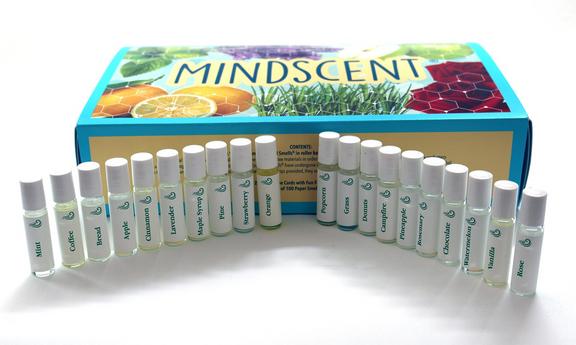
AN INNOVATIVE MULTI-SENSORY TOOL FOR SLPS, EDUCATORS & FAMILIES
The possibilities for language use are endless! It allows us to use the sense of smell, which is something I've never been able to use in speech therapy prior. We can target things such as using a communication device or generating higher level writing activities which has been an exciting way to meet goals!
Heather Palazzo, Speech Pathologist, MS CCC SLP, New Orleans, LA
Essential Smells© include: Apple, Bread, Campfire, Chocolate, Cinnamon, Coffee, Donuts, Grass, Lavender, Maple Syrup, Mint, Orange, Pine, Pineapple, Popcorn, Rose, Rosemary, Strawberry, Vanilla and Watermelon. Each 0.5ml. roller ball will last approximately 1000 swipes MADE IN USA
The Scent Guru Group, LLC www thescentgurugroup com
Exceptional Needs Today | Issue 13 | 69 SKILLS FOR LIFE
A Practical Guide
to Implementing Student-Led IEP Meetings
 By Carli Haskovec, MA, Ed.S.
By Carli Haskovec, MA, Ed.S.
70 | Exceptional Needs Today | Issue 13 MY WORD
I WAS TIRED AND EXTREMELY OVERWHELMED. IT WAS MY SECOND DAY AT THE AUBURN TRANSITION CONFERENCE IN AUBURN, ALABAMA. MY HEAD WAS PRACTICALLY SPINNING AS I PROCESSED THE AVALANCHE OF INFORMATION PRESENTED. EVEN SO, I KNEW MY TIME THERE WAS BRIEF, AND THERE WAS MORE I COULD LEARN. I TOOK A DEEP BREATH AND HEADED TO A BREAKOUT SESSION TITLED “STUDENT-LED IEPS.” I TOOK MY SEAT IN AN EMPTY CHAIR. MY GUT FEELING WAS THAT I HAD CHOSEN A SESSION FOR A NEW PRACTICE TO ADD TO MY NEVER-ENDING TO-DO LIST. HOWEVER, THE SESSION’S TITLE SPARKED MY INTEREST, SO I STAYED.
Ready to take notes and write reminders of things I needed to do, I heard the presenter say something I had always dreamed of hearing. They had a way of making Individualized Education Program (IEP) meetings smoother, easier, and more efficient. It was at this point they had my undivided attention.
They explained how they incorporated student-led IEPs into their “IEP Season.” I bounced between excited and doubtful as I could not wrap my brain around how this could possibly be easier. My students didn’t know how to lead an IEP meeting! On top of that, it was almost time to begin my spring IEP meetings, so I didn’t have time to implement something new. Regardless, I WANTED and NEEDED a way to help the IEP season be more streamlined. Once the session ended, I had questions—lots of questions. Luckily the presenter was available, willing to explain things while encouraging me to give it a try.
I drove home ready and eager to give student-led IEPs a chance. I made a mental plan to implement this new process with my students and introduce the newly implemented IEP meeting procedures to my high school special education students. When I made it home, I was genuinely excited to figure out how to make this work. I called my co-worker and told her all about it. She was just as enthusiastic about the challenge ahead as I was.
Creating a new, student-led meeting style
I began by creating a template in Microsoft Word that was a straightforward, fill-in-the-blank format that followed the IEP template my state uses. As each student’s IEP meeting approached, I would develop a draft IEP and sit down with each of my students individually to help them fill out their student-led IEP form. We did several practice runs of their student-led meetings, which led to the troubling realization that many of my students needed more awareness of their own IEPs. Based on this discovery, I experienced my first success. My students learned what was in their IEPs, making me an incredibly proud teacher! My co-worker implemented the student-led IEP meetings along with me, and she experienced equal success with it.

The next challenge came when my students realized what a “student-led” IEP meeting meant. As more and more students realized that THEY would be doing the talking, I heard comments such as “I can’t talk in front of a group of people” or “I get so nervous talking to adults.” I quickly responded with something along the lines of “I don’t like speaking in front of people, either!” I have a horrible fear of public speaking, and having to lead discussions during IEP meetings always makes me nervous. I’m still unsure how someone with a fear of public speaking becomes a teacher, but I did. I promised my students that I would be with them during the whole meeting, and in no time, I found myself telling my first student that they were free to begin their student-led IEP meeting.
Time after time, my co-worker and I had parents, teachers, and administrators tell us how impressed they were with the student-led IEP meetings. It had nothing to do with us and everything to do with the students. We heard comments such as, “That’s the most I’ve ever heard that student talk,” and, “I had no idea this student was such a good reader.” Students could show their true personalities while summarizing their IEP during their meetings. Some read straight from the template we used, and some felt the need to present their IEP goals in a somewhat theatrical manner…which was fine with me. To my surprise, having the students lead their IEP meetings made the meetings fun! You could also see a sense of pride in both the students and the parents, which was another huge bonus.
Exceptional Needs Today | Issue 13 | 71 MY WORD
Over time, I discovered that the best part of student-led IEP meetings is that the student IS the “star of the show”... the meeting is all about them. Who better to lead the IEP meeting than the person the meeting is about? Our special education students in middle school, and especially in high school, need to know what is in their IEP. They need to know what accommodation they should be receiving. They need to understand how to advocate for themselves.
When students conduct IEP meetings, it’s hard for anyone to disagree with what they say. If Susie sits in her IEP meeting telling all participants she needs extra time on tests, it’s hard for anyone to disagree…She knows what she needs. Likewise, if Johnny tells his IEP team he does not require copies of notes, but his parents have been insisting throughout the year that he does, how can anyone argue with this? Johnny knows what he does NOT need.
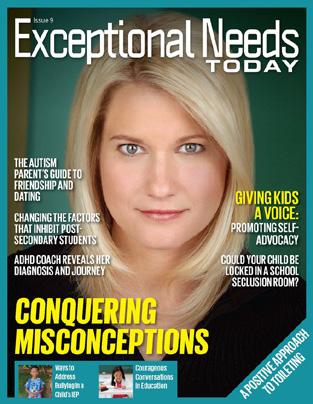
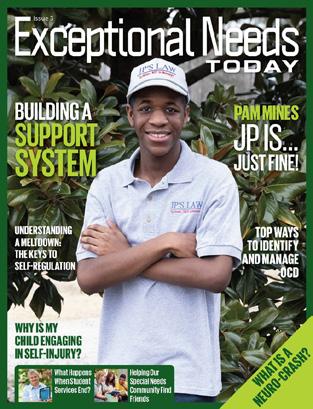

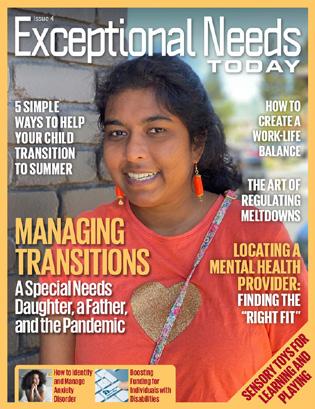


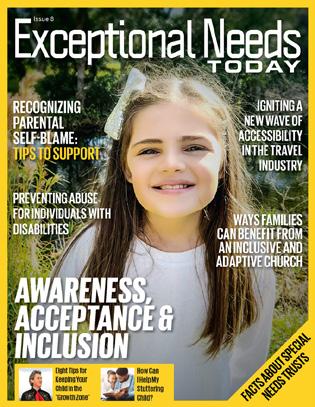


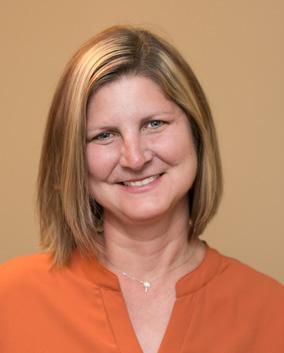
A momentous breakthrough
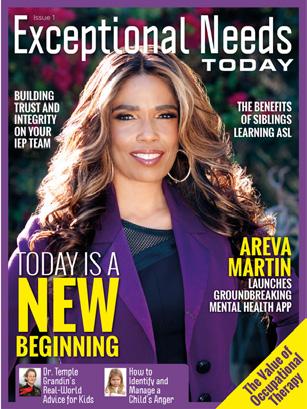
In closing, I developed a passion for this student-led style of IEP meeting that eventually helped me face one of my biggest fears. Two years after I doubted that anyone would ever have time to implement this into practice, I had a breakthrough within myself. With the support of my sidekick (an incredibly beloved co-worker), we stood at that same conference…in a room full of people…and shared the benefits of implementing student-led IEP meetings. It was a day I will never forget. As students with disabilities approach young adulthood, we must prepare them so they can accurately and appropriately relay their needs to those around them. Giving our students with disabilities a valid role in the decision-making process during IEP development shows them how to be their own advocates and reinforces to them that their voices do matter.
Carli Haskovec, MA, Ed.S., began her career as a high school special education teacher. She now serves her local Board of Education as a Countywide Behavior Specialist. She works as a special education adjunct professor at several universities and teaches GED classes at her local community college. Carli is also pursuing her Doctor of Education in Special Education. She lives in Florence, Alabama with her husband of 23 years. She has two sons, a Sophomore at Mississippi State University and a Junior in high school.
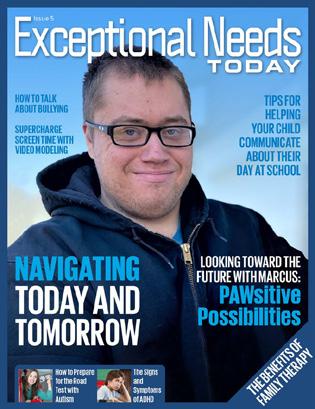
EXCEPTIONAL NEEDS TODAY Magazine subscriptions are funded entirely by advertisers and sponsors. To help us keep our resources FREE for everyone -- please visit our website SUPPORT page. WAYS YOU CAN SUPPORT A FREE RESOURCE https://exceptionalneedstoday.com/support/ 72 | Exceptional Needs Today | Issue 13 MY WORD



MEDIA KIT EXCEPTIONAL NEEDS TODAY Exceptional Needs Today is committed to remaining a FREE publication to provide guidance to ALL individuals. Please consider advertising with us to support the exceptional needs community. Let's ensure no one is left behind... exceptionalneedstoday.com advertising@exceptionalneedstoday.com
Key2Enable Technology
Empowers Learning While Encouraging Inclusion
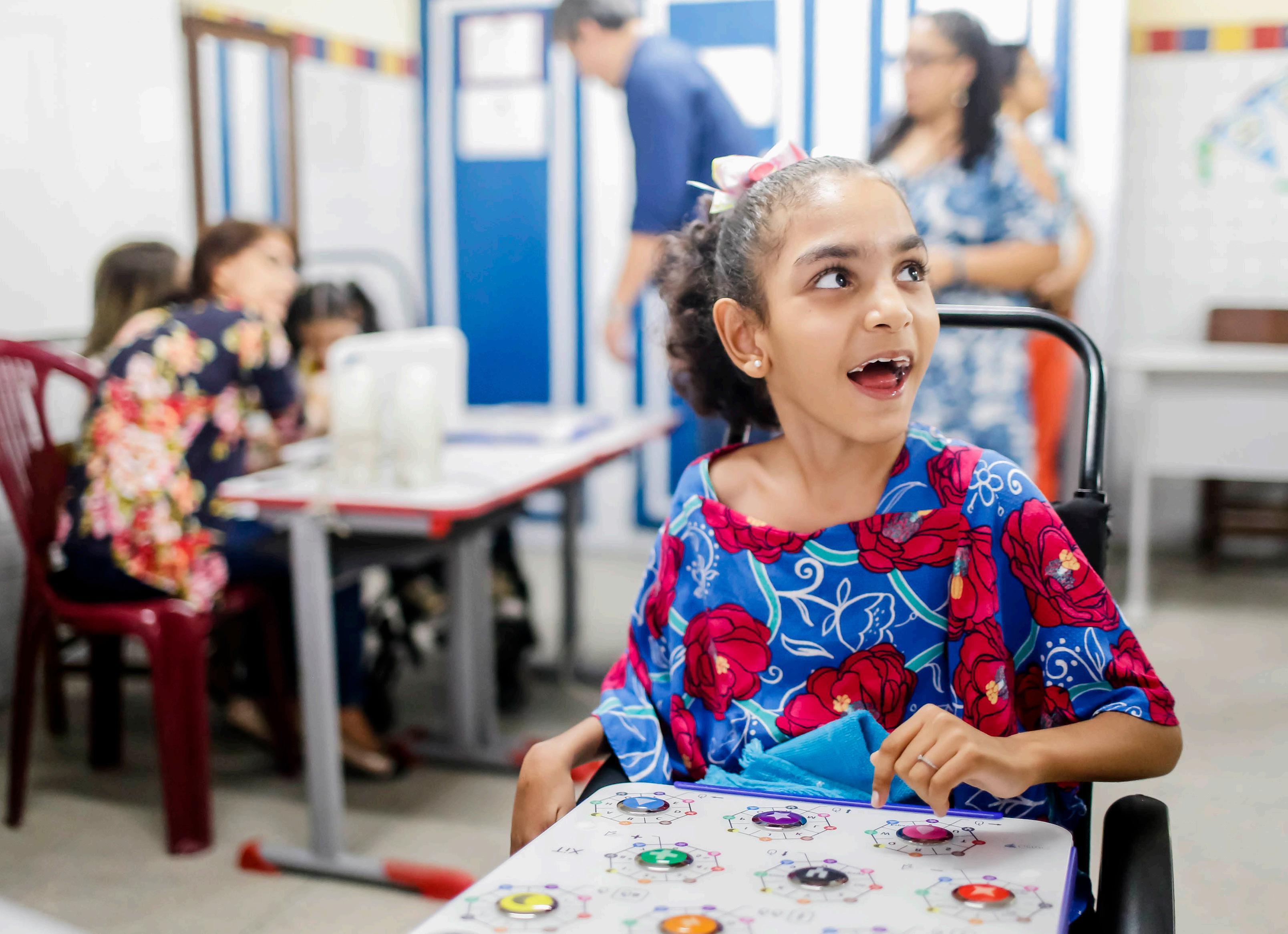 By Richard Schreiber
By Richard Schreiber
74 | Exceptional Needs Today | Issue 13 EXCEPTIONAL BUSINESS PROFILE
Key2Enable is an American assistive EdTech startup conceptualized in Brazil, with a market presence in the United Kingdom, Chile, Portugal, Armenia, and the United Arab Emirates (UAE). Their technology empowers children with disabilities, parents, healthcare professionals, special education teachers, schools, and rehabilitation centers by providing innovative Assistive Technology (AT) and an educational platform to develop skills and individualities. Key2Enable enables people to use computers and mobile devices to communicate efficiently, learn, play games, work, and ultimately live with greater autonomy and be economically self-sustained in the future.
Based on assistive projects first developed in Brazil back in 2015, Key2Enable was founded with the goal of using exponential technologies to give autonomy and plenty of possibilities to people with motor and intellectual disabilities all around the world.

The company states that children with disabilities are one of the most marginalized groups in society, facing daily discrimination that bars them from enjoying their rights and participating on an equal basis with the rest of society. Lack of literacy, numeracy, and cognitive development combined with a lack of motor skills impact the future of exceptional needs children. They face multiple forms of discrimination that develop into exclusion from society, education, and present and future opportunities.
Key2Enable caters to people of determination who cannot use computers and mobile devices due to motion limitations or lack of fine motor coordination or who are nonverbal by providing innovative tools like the Key-X keyboard for accessing computers, learning, and communicating.
It has been observed that AT is not generally designed for classrooms and inclusive education; rather, it tends to be developed from an individual level to solve accessibility issues at a micro-angle. Sadly, most schools are not truly integrated according to Key2Enable’s inclusion standards. Special needs children are typically isolated in a classroom setting.
Furthermore, AT can be exceedingly expensive, within tens of thousands of dollars per child, making it difficult for the majority of schools—let alone families—to afford it. As a result, most of the 240 million children worldwide with exceptional needs are not receiving cost-effective support. Key2Enable is about to disrupt that reality with affordable, inclusive, and multi-user products designed to assist neurodivergent and neurotypical students using the products side by side and collaboratively.
The company has been active since 2009 and founded a subsidiary in the US last year. Its flagship is a Key-X keyboard with 11 big, colorful buttons. These buttons are placed a set distance apart and are sensitive to the touch. The sequence in which these buttons are pressed is equivalent to pressing a key on a regular keyboard, which enables people with disabilities to communicate more efficiently without accidentally touching unintended keys. For those who can only move their eyes, communication is made possible by a connection between the keyboard and a blink detector, Colibiri, which can be attached to any pair of glasses.
Key2Enable also offers its special education capabilities as a service via a subscription with a companion eLearning platform called Expressia, which gamifies and customizes learning. “Our revenue comes from direct sales plus monthly subscription plans after we first understand the user’s needs,” said Jose Rubinger Filho, the company’s founder. Key2Enable’s model is an affordable, proven product that has been tried and tested in hundreds of schools worldwide.
Expressia came from a need to close a huge gap in special needs learning. Key2Enable knew it had to close this gap to effectively teach special needs children. “We created Expressia when we saw the difficulties special educators were having trying to engage special needs kids with the current curriculum. Expressia can create its own sound, video, and tasks using characters kids could relate to,” says Rubinger. Key2Enable’s impact is especially felt with younger differently abled kids, who often start Kindergarten with little or no hours of literacy due to their unique challenges. For example, the typical neurotypical kid has 300 hours of literacy by age five. Key2Enable can neutralize that gap in a year with just two hours per day using its solutions, which is game-changing.
“There is no other product in the marketplace today that can offer this,” says Rubinger.
Exceptional Needs Today | Issue 13 | 75 EXCEPTIONAL BUSINESS PROFILE
Key2Enable solutions offer autonomy, learning, and motion:
• The Key-X Smart Keyboard provides the ability to write and navigate any computer.
• Simplix software offers audiovisual activities for students and patients of any cognitive level.

• TelepatiX app for Android helps paralyzed individuals write and vocalize sentences.
• A-BlinX switch lets you do it all with the blink of an eye.
Key2Enable has won numerous startup awards and grants in the past decade, including most recently in 2023 as the Zero Project award winner for its Key X keyboard. In addition, they are recognized by the United Nations for their products and won the Haiku Prize in Beijing, China. In 2019, Key2Enable won the Best Innovation prize at the StartOut Brasil festival in Toronto, Canada. At the Entrepreneurship World Cup in 2020 in Riyadh, Key2Enable was awarded a place in the Best Growth category. The company continues to pile up awards as it seeks grants, funding, and opportunities to make its products available worldwide.
Beginning its operations in the USA with the Key-X Multi-purpose Smart Keyboard, the startup has already accomplished a remarkable achievement: in 2018, Key2Enable became a portfolio company of Singularity University, the world’s leading school of innovation and entrepreneurship. It is estimated Key2Enable is capable of reaching one billion people in the next ten years with its suite of accessibility solutions and applications designed for people with different abilities.
Key2Enable is now gearing up with strategic partners to deploy its solutions at schools worldwide, integrating its award-winning technology and devices with engaging learning content for special needs kids of all ages. They aim to equalize the skill, reading, and comprehension gaps in special needs children so they are on par with neurotypical children. Plans to incorporate virtual reality and other media are also in the mix.
The company seeks partners through school organizations or districts to implement its products on a trial run, knowing the results will undoubtedly exceed expectations and become a staple in the education process.

Richard Schreiber, co-founder of the NYC Autism Community Group and Autism Innovation Community Foundation, started as a technologist and software maven. He ended up deploying software solutions to some of the largest players in the world. He leveraged his technology background to create the recent NYC Autism Tech, Innovation, and Careers Expo in the Fall of 2022 to feature holistic, alternative, tech, and innovative autism solutions and speakers.
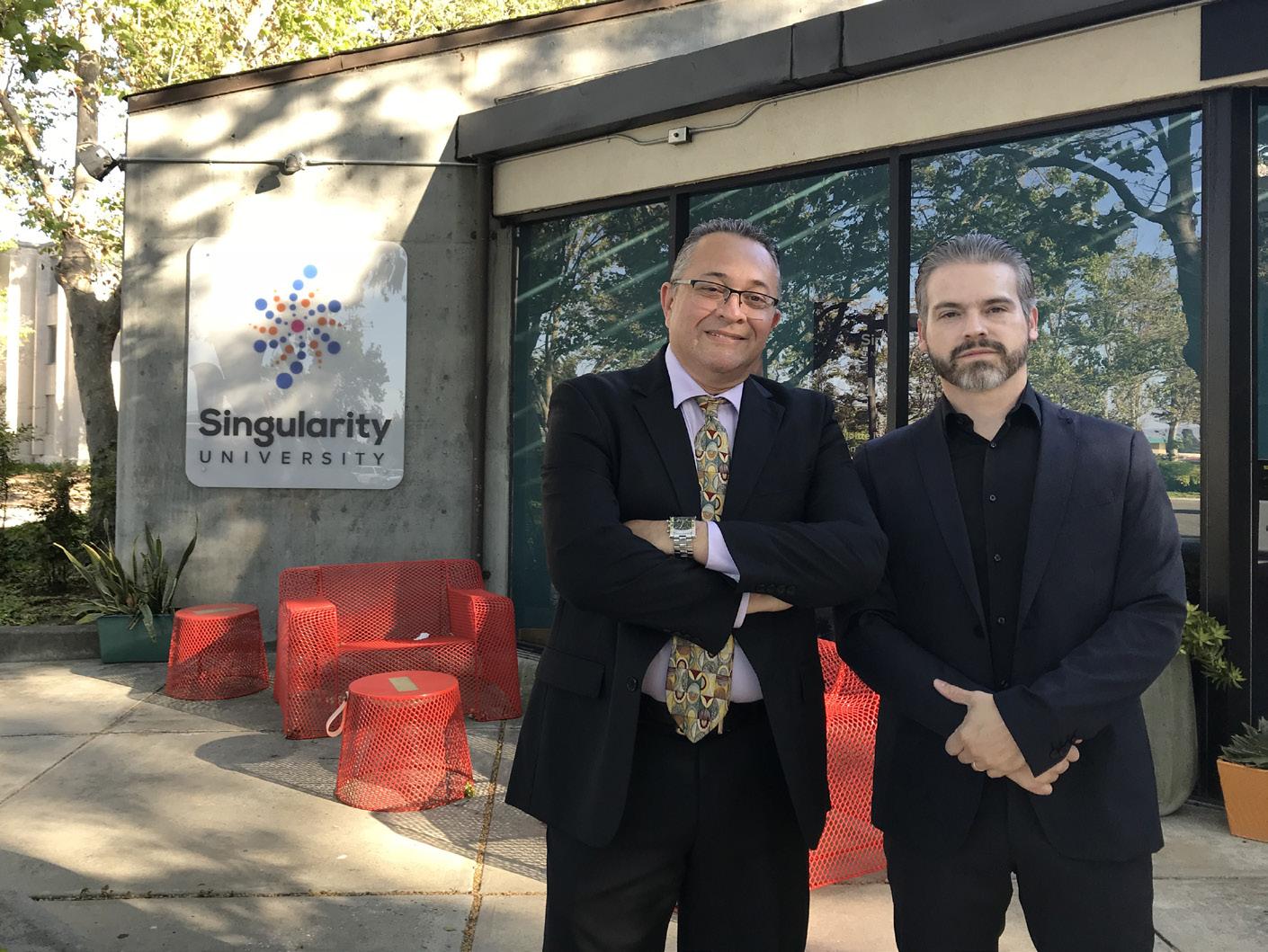
76 | Exceptional Needs Today | Issue 13 EXCEPTIONAL BUSINESS PROFILE
Lack of literacy, numeracy, and cognitive development combined with a lack of motor skills impact the future of exceptional needs children.
Key2Enable’s founders Tifany Espíndola , William Oliveira, and J. Rubinger.
Deciphering Handwriting Difficulties in Exceptional Needs Individuals

 By Laura A. Ryan, OT, OTR, OTD
By Laura A. Ryan, OT, OTR, OTD
IN THE EARLY GRADES, CHILDREN “LEARN TO WRITE.” AS CHILDREN ADVANCE IN SCHOOL, EFFECTIVE HANDWRITING IS ESSENTIAL IN NOT ONLY DEMONSTRATING WHAT THEY KNOW BUT ALSO TO INTEGRATE NEW CONCEPTS, ESPECIALLY AS THEY BECOME MORE COMPLEX OR ABSTRACT. IN THE SECONDARY YEARS, ONE COULD ARGUE THAT CHILDREN ARE NOW “WRITING TO LEARN.”
ALL
Exceptional Needs Today | Issue 13 | 77 OCCUPATIONAL THERAPY
THINGS OT
However, many systems need to be in place for a child to be able to perform handwriting tasks, and thus learn in an effective manner. Here we will break down the following graphic for a better understanding of the intricacies of handwriting.
Ocular (eye) control and visual perception
Ocular control is the ability to move the eyes in the head through a full range of motion and in a controlled manner. Similar to the muscles in our arms and legs, there are muscles that surround the eyes that need to be strong, coordinated, and have good stamina to support the eyes as they move through their myriad of visual jobs each day. These visual skills include tracking: moving the eyes through ranges of motion including side to side, up and down, diagonally, and in a circle. Visual skills also include scanning convoluted lines, alternating the focus on a near/far target, and coordinating the eyes to make tiny, precise, but irregular jumps such as when stringing letters to make a word. Ocular control is dependent, in part, on a strong vestibular system to counterbalance the movement of the head while stabilizing the eyes as they focus on an object (Dragoi, 2020).
Visual perception is how the brain interprets visual input and makes sense of that information. Visual perceptual skills include coordinating the eyes and the hands, seeing changes in depth (which is essential when navigating stairs), and the manipulation of visual information for learning things such as geometric concepts. Accurate perception of what is seen is dependent on strong ocular control (Dragoi, 2020). Optometrists.org offers activity recommendations to promote strong ocular control that also contributes to strong proximal control and stability. These activities include robust physical activities such as climbing trees, riding a tricycle, and playing catch (2023).
The sensory system (sensory processing)

Contrary to popular belief, there are eight senses, not five. In addition to the more commonly known “fab five” (seeing, hearing, tasting, feeling, and smelling), there are the senses of proprioception, the understanding of where your body is in space; vestibular, the sense of movement; and interoception, the understanding of soft tissue feelings such as experiencing your tummy rumble and knowing that means you’re hungry.
The senses of proprioception, vestibular, and touch are important for understanding where your body is in space and stabilizing your body during movement such as walking, shifts in body position like leaning forward, and feeling the environment like understanding the difference between soft ground versus hard ground under your feet. Parham and Mallioux (2020) concluded that strong vestibular sensory input is essential for identifying the movement of the head and body in space, which is necessary for postural and ocular control, coordinating both sides of the body, bringing both sides of the body smoothly to the middle, and effective muscle tone. These skills are essential for the body to move and balance.
Thinking about the next systems, it is helpful to think of a person like a tree with many branches that extend far from the trunk, waving gracefully in the wind and providing a stable perch for birds. Much like a tree, one’s core needs to be strong to provide a stable base of support for the arms to extend. Particularly, a strong core allows for the arms to extend to their full length and the hands to work fluidly while suspended in the air. If the core is not strong, then ultimately, the hands and all the important jobs they do are impacted. The next three systems are important to give the body the stability it needs to perform fine motor tasks.
Proximal control and stability
The term “proximal” indicates the center of the body while the term “distal” indicates the distant parts such as the arms and legs. Proximal can also describe a direction of the body. For example, the elbow is more proximal than the wrist because the elbow is closer to the center.
For this article, we will consider the trunk of the body—the upper back and neck—as being proximal parts that are contributing to stability. The trunk includes the abdominal muscles in the front and the back muscles at the back, as well as the lateral muscles at the side of the trunk. The abdominal and back muscles must act in synchrony to keep the body-centered front to back, and the lateral muscles must work to keep the body centered between left and right. The upper back must be strong to support the neck, which in turn supports the very top-heavy head.
This figure shows the hierarchy of body systems that ultimately lead to smooth and legible handwriting
78 | Exceptional Needs Today | Issue 13 OCCUPATIONAL THERAPY
It is important to note eye control is, in part, influenced by the stability of the head on the spine, which is stabilized by the upper back and neck muscles. Considering the role of the vestibular system in the sensory processing system, you can understand why neck and head control are important in stabilizing the eyes and allowing for balanced movement.
Foundational fine motor skills
We have now established that the sensory system and ocular system are crucial in giving the body information from its surroundings to keep itself centered and coordinate the eyes at the middle, which will allow the hands to work together. The proximal muscles are strong and give the body stability to move out from its base of support to use the distal portions of the body. At the upper end, the hands are the most distal portion of the body. It is somewhat ironic that the most distal part of the body is asked to do the most intricate work!
If these systems are not working in synchrony, the hands cannot explore, interact with, or control their environment and fine motor developmental milestones may be impacted. Typically, the progression of fine motor movement moves from the pinkie side of the hand to the thumb side. Difficulty balancing when using the hand in free air could lead to decreased development of the tiny muscles in the hand responsible for dexterity and a lag in moving an object from the pinkie to the thumb because the child is leaning on their hand for stability.
In school and at home, many teachers and parents may notice the child having difficulty sitting straight in their chair or keeping their balance when their arms are not resting on the tabletop. Aside from difficulty using the hands without supporting their arms, other indications this is difficult for the child could include the child wrapping their legs around the chair to provide heavy pressure to the joints of the body thereby assisting the sensory system in identifying where the body is in space or to provide a wider base of support and more stability to the trunk.
Handwriting mechanics
Handwriting is an incredibly intricate and systems-related task. In the section above, we alluded to the milestones that must be in place to allow the hand to move through the patterns necessary for handwriting. However, handwriting is the result of all the systems above working in fluid unison. Seo (2018) writes, “Before beginning the act of handwriting, children need to develop readiness skills for forming letters, such as the comprehensive abilities of various sensorimotor systems, the development of large and small muscles, visual perception, fine motor skills, and in-hand manipulation skills.” Layered onto these systems is the cognitive aspect of handwriting, where the child is either learning a new skill (such as learning to form the letters or distinguishing between ‘b’ and ‘d’) or learning a new academic concept.
Our bodies are an amazing network of interrelated jobs; all working together to produce the movement we see and take for granted. Understanding the role of each system in the result interaction with our world helps us understand why a child may be having difficulty in mastering a milestone such as writing their name or indicating their level of understanding on a written test!

“The hand is the instrument of intelligence. The child needs to manipulate objects and to gain experience by touching and handling.”
—Maria Montessori
Monessori
Hand On Kids
Exceptional Needs Today | Issue 13 | 79 OCCUPATIONAL THERAPY
Resources About
Growing
Optometrist.org
References
Deshmukh, M & Palekar, T. J. (2020). Effect of cervical muscle strengthening and ocular muscle training among students with smartphone adversity. Journal of Dental Research and Review (6), s65-s68. https:// www.researchgate.net/publication/351127914_Effect_of_Cervical_ Muscle_Strengthening_and_Ocular_Muscle_Training_among_students_with_smartphone_adversity
Dragoi, V. (2020). Ocular Motor Control in Neuroscience Online (Chapter 8). University of Texas Health. https://nba.uth.tmc.edu/neuroscience/m/s3/chapter08.html
Sao, Sang-Min (2018). The effect of fine motor skills on handwriting on handwriting legibility on preschool children. The Journal of Physical Therapy Science, 30 (20), 324-327. https://www.ncbi.nlm.nih.gov/pmc/ articles/PMC5851374/
This is Part 1 of a 2-part series. The second article will more thoroughly outline the fine motor developmental process and the complexity of handwriting, including pencil grip.

Laura A. Ryan, OT, OTR, OTD, is an occupational therapist who grew up on a large horse farm in Massachusetts. She has been practicing for 30-plus years and has been using hippotherapy as a treatment tool since 2001. She enjoys seeing the happiness and progress each person has achieved through the therapeutic impact of the horse. Laura has also developed a program for breast cancer rehabilitation using therapeutic input from the horse.
Email: hooves4healingot@gmail.com

80 | Exceptional Needs Today | Issue 13 OCCUPATIONAL THERAPY
A T T E N T I O N :
P A R E N T S & P R O F E S S I O N A L S
Let's Start Talking About Autism!
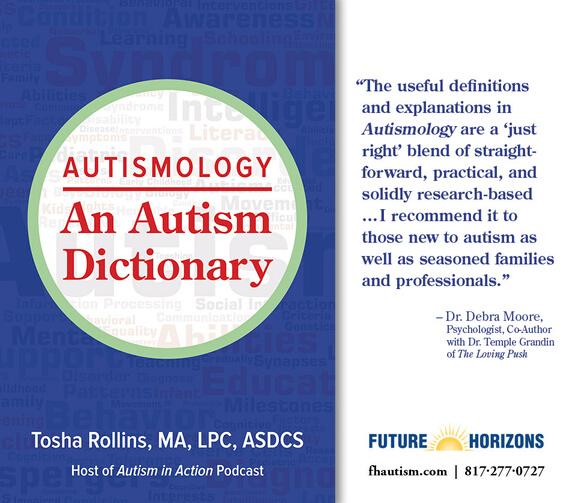
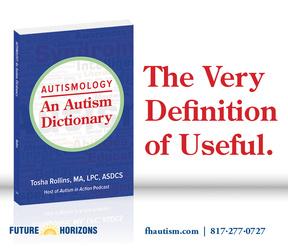
Tosha Rollins is a Licensed Professional Counselor in South Carolina, and the owner of Rollins Counseling, LLC. In 2018 she started the Autism in Action Podcast to help families connect with autism resources, services, and support. Tosha also enjoys serving the community as an autism advocate and has served as a volunteer for the Champion Autism Network and has worked with Lead with Love Training Company as a Safety Plan Coordinator Tosha is a public speaker & published author Her newest book is Autismology: An Autism Dictionary was published in 2022 by Future Horizons, Inc She loves adventures, traveling, nature, and spending time with her family When she is not working, she is spending quality time with her family and planning her next adventure Tosha is married with four children, two of whom are now autistic adults.
A u t i s m o l o g y i s a m u c h - n e e d e d r e s o u r c e f o r p a r e n t s a n d p e o p l e l i v i n g w i t h a u t i s m . C a p t u r i n g k e y p h r a s e s i n t h e i n c r e a s i n g l y a c c e p t e d n e u r o d i v e r s i t y m o v e m e n t , T o s h a g i v e s r e a d e r s m u c h - n e e d e d i n f o r m a t i o n t o b e t t e r n a v i g a t e t h e c o m p l e x m e d i c a l s y s t e m s a f f e c t i n g t h e c a r e o f t h e m s e l v e s o r l o v e d o n e s . T o s h a g i v e s r e a d e r s a f r e s h p e r s p e c t i v e o n t h e e v e r g r o w i n g c u l t u r e o f n e u r o d i v e r s i t y S h e p r o v i d e s r e a d e r s t h e l a n g u a g e o f a u t i s m , a m u c h n e e d e d s t e p i n s o l i d i f y i n g a m o v e m e n t t h a t h a s b e e n a r o u n d f o r a l m o s t 3 0 y e a r s T h i s w o r k i s n e c e s s a r y f o r a n y p r o f e s s i o n a l w o r k i n g w i t h m e n t a l h e a l t h w h o w i s h e s t o s e r v e p e o p l e w i t h a u t i s m . A u t i s m S p e c t r u m D i s o r d e r r e m a i n s e v e r p r e s s i n g l y c h a l l e n g i n g t o l i v e w i t h a n d t h i s t e x t i s a m u c h n e e d e d e d i t i o n t o u n d e r s t a n d i n g t h e l a n g u a g e o f i t s i n c r e a s i n g l y a c c e p t e d c u l t u r e .
F o r w a r d b y S e a n I n d e r b i t z e n , L C S W h t t p : / / s e a n i n d e r b i t z e n c o m /

LEARN MORE AT WWW.TOSHAROLLINS.COM
Managing Your Child’s Asthma in School
 By Dr. Ronald I. Malcolm, EdD
By Dr. Ronald I. Malcolm, EdD
82 | Exceptional Needs Today | Issue 13 EXCEPTIONAL EDUCATION
ASTHMA IS SCARY! NO PARENT WANTS TO SEE THEIR CHILD GASPING FOR AIR IN ATTEMPTS TO BREATHE. HAVING YOUR ASTHMATIC CHILD LEAVE HOME EACH DAY TO ATTEND SHOOL CAN CAUSE ADDITIONAL ANXIETY FOR THE PARENT.
Here are 10 easy tips to assist with managing your child’s asthma during school.
1. Teach self-management
Often, parents rush to assist their child in treating an asthma attack. It almost becomes a “knee-jerk” reaction; the concept of a medical emergency can imply urgency to intervene. As a parent of two boys with asthma, I was quick to do the same thing. Then, I wondered what my children would do when experiencing an asthma attack if I was not there to assist them. To prepare them for such a scenario, I taught them inhalers are never to be used as a toy. I made sure they could handle the inhaler safely. We worked on how to explain to others in your immediate environment what was happening to you and how they could help. We also developed a calendar plan to know when to order more albuterol and check the current inhaler is not expired.
Teaching my kids with asthma to self-manage was difficult at first. I always wanted to “jump-in” and take care of everything. However, as they advanced from grade to grade in public school, I witnessed them become more independent. They gradually became capable of not relying on me in situations involving their asthma-related needs.
2. Develop a plan
It will be important for you and your child to work with an immunologist. In my community, we were fortunate to have an “asthma and allergy” clinic. Check with your pediatrician for further advice if your area doesn’t have such a clinic. They will be able to steer you in the right direction to get the assistance you and your child with asthma will need.
You’ll want to have a conversation with your child about exactly what happens to their body during an asthma attack. This may help them manage their own asthma as they become aware of symptoms that may lead up to an asthma attack. Changes in weather, stressful situations, etc. may be able to be addressed if recognized early.
3. Check the bookbag
For very young children, you may need to check their bookbag contains specific items before leaving for school every day. Having an asthma attack as you walk to school or are on a school bus requires your child to have access to proper supplies to deal with the attack. Without these supplies, a simple asthma attack can quickly become a life-threatening emergency.
4. Work with the school nurse
The nurse at your child’s school needs to become your new
“best friend.” Make certain extras of all supplies needed for your child’s asthma are in the nurse’s office. Work with the school nurse to address any special situations surrounding asthma in your family they need to be informed about. Keep them updated on current medications and any advice given to you by your pediatrician or asthma specialist.
5. Meet with teachers and coaches
Teachers and coaches are important people who interact with children daily. Ensure you meet with any authority figure your child spends time with and outline any asthma-management concerns involved in their programs. Keep in mind some teachers only interact with your child for a semester. So, ensure any teachers newly involved with your child after Christmas Break are also informed about your child’s asthma. Ask teachers and coaches how they plan to handle substitutes who come into school on days they are absent. Ensure your child’s medical condition, emergency medical plan, and your contact information are included in the lesson plans being given to the substitute teacher or coach for the day.
6. Work with non-medical personnel
A little bit of prevention can go a long way to assisting your child with asthma. Most parents like to focus their attention on school personnel such as teachers and nurses. While they are important individuals for ensuring successful treatment, there are others who should be considered as well. Work with the bus driver who picks up your child. Let them know what to do in the event of an asthma attack on the bus. Some parents have asked school districts to ensure their child is on an air-conditioned bus when traveling to and from school, especially if their child’s asthma is induced by warm weather or heat.
Neighbors and babysitters should know how to handle an asthma attack with your child, too. This is especially true if your child spends significant time at a specific neighbor’s home. Be certain to inform them of your child’s asthma needs and what to do should an emergency arise. Many parents with asthmatic children tend to rely on a specific babysitter they trained on how to handle their child’s medical condition effectively.
7. Create an IEP/504 plan/emergency plan if needed
If your child with asthma has an accompanying disability, they may receive special education services through their local school district. Be certain that under the “Health” section of their Individual Education Plan (IEP), you outline their asthma situation and how it is being treated.
Exceptional Needs Today | Issue 13 | 83 EXCEPTIONAL EDUCATION
Your child with asthma may not have any comorbid conditions. However, if their asthma is severe enough it causes them to miss school or be hospitalized, you will want to reach out to your child’s school and get a 504 plan in place for them. Some children who miss school due to their asthma for extended periods of time fall behind academically. Placing them on a 504 plan will assist teachers and staff in knowing if work packets need to be sent home, when deadlines should be extended for projects, and if group work can be waived. While an IEP ensures services are provided through special education, the 504 plan helps your child receive a quality level of learning support through general education.

Finally, if the school develops a Medical Emergency Plan for your child, all staff should have a copy of it. Don’t assume someone at the beginning of each school year will automatically review it with everyone working with your child.
A friendly reminder to the administration at the school will ensure a review takes place.
8. Be accessible
The number one thing you can do to assist with a medical emergency involving your child and their asthma is to be accessible. In the beginning, it will take some time to get this organized. All personnel at the school, including the bus driver, school nurse, teacher’s aides, etc., should have access to your cell phone number. Of course, the same is true for relatives watching your child, babysitters, and neighbors. They should know where you work and how to contact your place of employment should you not answer your phone. You should also make your wishes clear as to which hospital you’d like your child to be transported to in the event of an emergency.
Every second counts during an asthma attack. You don’t want people focused on how to contact you when they should be focused on your child’s medical needs. Keep in mind that, should your cell phone get lost or stolen, or if you change your phone number or job, you’ll need to update everyone immediately.
9. Consider accommodations
Many people working with your asthmatic child will want to know how they can help. Some simple accommodations can go a long way to ensuring your child’s safety. Let the school know your kid may need a bottle of water on their desk throughout the day. Gym teachers should be made aware your child might have to skip a Physical Education class due to fatigue or a recent asthma attack. Some students with asthma may need to lie down during the school day. If they take prednisone to treat symptoms, they may experience difficulty falling asleep. This means they will likely tire more easily at school the following day.
Certain weather conditions can trigger your child’s asthma, so they might not be allowed outside for recess at certain times of the year. They may require supervision during specific weather events, even when staying indoors. Aside from weather concerns, asthma should not be a reason for your child not to join school-related field trips. Careful planning and knowledge of protocol that needs to be followed regarding your child’s asthma should allow them to participate fully in school field trips and events.
84 | Exceptional Needs Today | Issue 13
EXCEPTIONAL EDUCATION
10. Celebrate asthma awareness
Be proactive at your child’s school. During May, ask if you can assist the school with celebrating Asthma Awareness Month. Don’t expect the classroom teacher to do additional work for this event. May is a very busy month for many teachers as they are getting students ready to exit school for summer breaks. Offer to make a bulletin board about asthma for your child’s classroom. Come to school and read a book to the students about asthma and what it means. See if the PTA will sponsor an Asthma Poster Contest and offer small prizes to the winner. Having the school personnel view you as a “resource” as opposed to a “nuisance” will go a long way to keeping your child with asthma safe.
Dr. Ronald I. Malcolm, EdD, works with students with disabilities in the Northwest Arctic. He recently retired as an Assistant Director of Special Education for a public school district. He is also an Associate Faculty Member with the University of Phoenix and a Special Graduate Faculty member at the University of Kansas. He has Bachelor level degrees in English and Special Education. He holds Master level degrees in Counseling, Special Education, and School Administration. His Doctorate degree is from Northern Arizona University in Educational Leadership. His postgraduate degrees are in Positive Behavior Supports and Autism Spectrum Disorders. He has worked for the past 38 years with students between the ages of three and 21 with disabilities and various medical needs in both school and community-based settings.

Autism Evaluation Resource


We look forward to collaborating in supporting the children and families of our
community! We provide the “Gold Standard” in Comprehensive Diagnostic Evaluations for autism and other neurodevelopmental disorders through a transdisciplinary team of experts in the fields of neurology, neuropsychology, occupational therapy, and speech and language pathology. We’re a trusted resource for thousands of caregivers and hundreds of physicians for children with medical, behavioral, sensory, social, or other complexities.
shared
The Inland Empire Autism Assessment Center of Excellence (AAC) is a non‐profit, evaluation‐only center that provides a singular solution to a multi‐specialty evaluation process. Email us at info@ieaace.com Call us today (909) 799‐3777 COMMITTED TO PROVIDING THE HIGHEST LEVEL OF CARE YOU AND YOUR CHILD DESERVE THE HIGHEST LEVEL OF CARE FROM CHILD EXPERTS More info www.autismassessment4ie.org Follow us ieautismassessment @inlandempireautismasssessmentcenter Exceptional Needs Today | Issue 13 | 85 EXCEPTIONAL EDUCATION
You’ll want to have a conversation with your child about exactly what happens to their body during an asthma attack.

Three Tips to Improve Executive Function Skills for Tomorrow’s Tasks
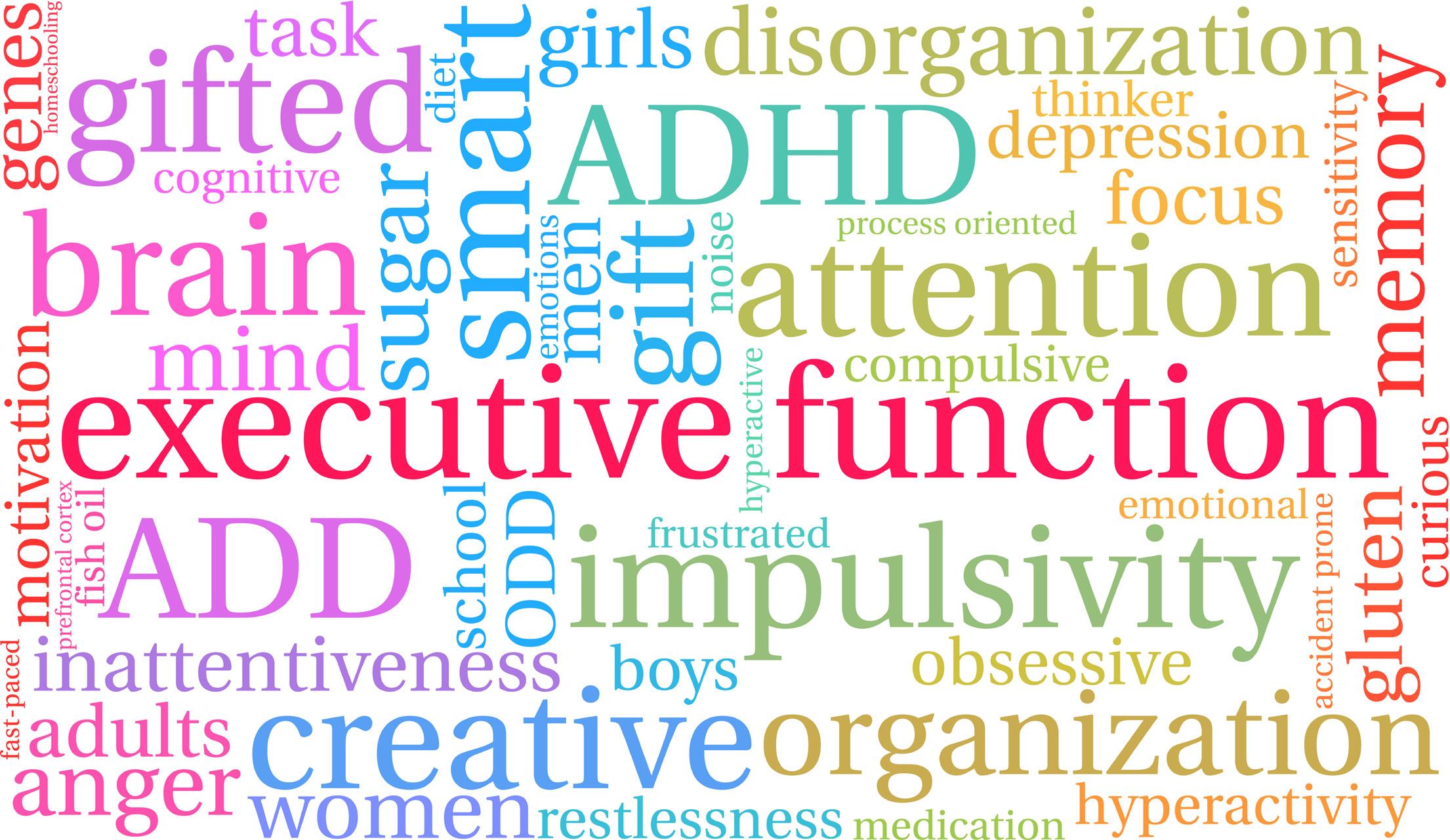 By Dr. Chris Abildgaard, EdD, LPC, NCSP, NCC
By Dr. Chris Abildgaard, EdD, LPC, NCSP, NCC
OVER THE PAST SEVEN YEARS IN THE FIELDS OF EDUCATION AND CAREER COUNSELING, WE HAVE BEEN READING MUCH ABOUT THE IMPORTANCE OF ADDRESSING THE NEEDS OF STUDENTS AND INDIVIDUALS AGES 18-22 AS THEY MOVE INTO THE YOUNG ADULT STAGE OF LIFE. WE KNOW THE TRANSITION FROM HIGH SCHOOL TO ADULTHOOD TRADITIONALLY INVOLVES TAKING ON NEW ROLES IN THE CONTEXTS OF EMPLOYMENT OR EDUCATION. BUT WE RARELY PLAN FOR THAT TRANSITION SOON ENOUGH.
Exceptional Needs Today | Issue 13 | 87 SKILLS FOR LIFE
For those of us who have made the transition, we understand that, to do so successfully, one must have not only the necessary academic skills but also the ability to manage life tasks essential to meeting societal (and social) expectations in their new roles.
Based on research, as well as what we know about moving through various developmental milestones, daily life tasks are managed by organizing activities into effective sequences, monitoring task performance, and making necessary adjustments to carry out tasks, all while adapting fairly quickly to changing contexts for task performance (Kao et al., 2015). For many individuals who present with a neurodiverse learning style, the idea of managing daily life tasks can prove such a huge barrier it may create an ominous feeling even just thinking about it. So, what should we be addressing to help individuals prepare to move through life tasks with ease and confidence?
The easy answer is lots of things! Becoming fluid in how we maneuver through various life tasks, duties, responsibilities, etc., is not easy. For example, research and clinical work have shown that adaptive functioning represents a major area of challenge among individuals with autism spectrum disorder (ASD). Adaptive functioning can be defined by the ability to meet the demands of one’s environment in order to function independently. It comprises the ability to dress oneself, maintain interpersonal relationships, participate in leisure activities, and communicate one’s needs (Sparrow et al. 2016).
In my experiences, when we talk about adaptive or daily living skills, educators like to add in those goals and objectives for individuals with more impaired language and cognitive abilities. We tend to overlook the fact that our students who have more intact cognition but poor executive functioning (EF) skills also struggle with these daily living skills. This is an area of life and education that should be addressed and talked about for all neurodiverse learners. Yet our adaptive functioning encompasses so much of one’s ability to function and maintain a certain quality of life.
Clearly, one’s adaptive functioning serves as an important target for intervention. Interventionists need to remember that what enables one to use and carry through with adaptive skills is rooted in neurocognition. As parents, mental health counselors, and educators, remembering to address that root will support the overt skills needed to function.
So, what is that neurocognitive area that helps to maintain and improve one’s adaptive functioning? It’s our executive functioning skills, of course. We are seeing emerging evidence that EF, a set of cognitive skills that regulate one’s thoughts, actions, and emotions in order to achieve goals, explains unique variance in adaptive behavior in autism spectrum disorder (ASD) (Bertollo and Yerys, 2019).
Given the neurocognitive similarities, ASD and other neurodiverse learning patterns have, one can hypothesize that similar findings would be seen for individuals with ADD/ADHD and even anxiety disorders. You just have to think about the last task you asked your child or student to do “independently” and consider: “Did they complete the task in a manner that you deemed appropriate?”
In order to complete various tasks, your EF skills are critical in helping you reach that stage of completion. Our EF skills include controlling impulses (inhibition), holding information or goals in mind and updating them as needed (working memory), switching between mental sets or perspectives (shifting), creating an action plan (planning and organizing), and regulating our emotions (emotional control). That is a lot of mental energy and stamina that needs to happen all at one time! So if we want individuals to be “independent” and we want to be preparing our students, clients, and kids for tomorrow, what can we do to help? Here are three tips to be thinking about starting at a young age (and it begins with us, the stakeholders in the lives of our kids and students):
1. Build responsibility
I have written articles about how much our kids have on their plates today. We expect them to go to school, listen, pay attention, be social to some degree, do homework, etc. It’s a lot for their brains to process and take in at once. However, keeping kids busy, engaged, and active is not a bad thing. It’s ok to think about what they, even our little ones, are responsible for. Maybe at three years old, they are responsible for helping get dressed, helping to clean up, or choosing between two snacks to be packed for school. As they get older, what they are expected to be responsible for can shift and may even encompass more steps.
How we make these adjustments in responsibility needs to happen at natural breaks. For example, for many of our older clients, I will suggest a “shift” in their daily routine following a school break or at the start of summer vacation. Finding where those natural breaks occur, preparing them for a shift or change in routine, and providing support at first, then fading that support over time so they can see themselves being able to do it on their own, can be huge when it comes to one’s self-esteem, motivation, and willingness to take on new responsibility.
2. Visualize out loud
Let’s think about all those daily routines we go through. Think about the first few things you do when you wake up in the morning. Think about what you do before you go to bed. There certainly are times we open our eyes, stretch a little, and think to ourselves, “It’s only Tuesday! It should be Friday already!” Yet, we take a deep breath and roll out of bed to start our routines. Due to the fact we have been performing these routines for years on end, we know how long they will take, how to problem solve when a part of our routine goes astray,
88 | Exceptional Needs Today | Issue 13 SKILLS FOR LIFE
and when we “have to leave by”—that sense of urgency is a motivator.
For many of our neurodiverse learners, their ability to mentally visualize the steps of a routine and pair them with time is extremely difficult. When you think about it, when we approach a task, even if it’s doing laundry, we are thinking to ourselves about what we need to do, the steps involved, and the time it will take. Many of our kids, clients, and students can tell you what they need to do. Being able to repeat steps of a routine verbally is only part of the process. We rely on our EF skills for the rest.

One trick is to use your mental visualization of a process as a model for neurodiverse learners. Yes, you will be laughed at for talking to yourself, but it is a useful trick in life, and we all use it. When you are working through a situation, thinking about a routine you must complete, visualize it out loud. Talk to your children, students, and clients about the process you are thinking about. Start with the phrase, “I can see myself…” Ask them for input. Do they see any issues with what you are visualizing? Inviting them to be part of the visualization will help them create their mental picture of what you are thinking about. This will take some time, practice, and knowing how to identify a good time to talk about these things with your kids. I like to do them when in the car and they don’t have
their AirPods in! Practice this with them. Say something like, “ What is one thing you have to do when you get home? Make a picture in your head of doing that. What can you see?” Running through this process may seem silly at first, but once you create the habit of verbalizing the visual steps of going through a task or process, the easier it will become.
3. Ask for help
Do an exercise for me: close your eyes and visualize the last time you asked someone else for help. What happened? Were they able to help you? Did you have to explain the situation a few times before they understood what it was you really needed help with? As adults, we tend to rely on other adults, friends, and co-workers for various reasons. We tend to put people around us or lean on others with different skill sets. We also lean on others for their perspective on things. It is important to get insight from others when we are trying to problem solve, understand something, or feel stuck.
We may not enjoy asking for help or another perspective; there are many people who really struggle with that. However, the more we model asking for “help,” clarification, or another’s thoughts, the more we will help our children, clients, and students observe and mentally picture what it looks like to “ask for help.” Young people tend to think asking for help will make you look weak or will only create more work for you. If we can shift this mindset, it will impact how one can approach daily life routines, work, and even one’s ability to learn a new skill or task.
Summing up
So, what does this mean for services and interventions for individuals with neurodiverse learning patterns? We know it has been well established that autistic youth (including those without intellectual disability) have differing profiles of cognitive and language abilities, and, as a result, individualized approaches to intervention and assessment are considered best practice (Masi et al., 2017). We need to be addressing the adaptive skills of each individual with their own personal needs, strengths, and goals in mind. It is just as essential to continue the conversation around those areas of executive functioning (inhibition, self-monitoring, working memory, etc.) that impact one’s ability to perform daily tasks across settings and environments.
We are a society that wants people to be “independent.” What that means and looks like will differ based on one’s unique needs. Yet, it is essential for one’s mental health, motivation, and self-esteem to remember that each individual can reach their own level of independence if we plan and address those needs through their developmental lifespan. It’s never too early to start thinking about how one’s adaptive functioning intersects with one’s social, behavioral, and communication profile. Start a conversation around how we can prepare individuals for the tasks and expectations of tomorrow.
Exceptional Needs Today | Issue 13 | 89 SKILLS FOR LIFE
References:
Bertollo, J. R., & Yerys, B. E. (2019). More than IQ: Executive function explains adaptive behavior above and beyond nonverbal IQ in youth with autism and lower IQ. American Journal on Intellectual and Developmental Disabilities, 124(3), 191–205.

Bertollo, J. R., Strang, J. F., Anthony, L. G., Kenworthy, L., Wallace, G. L., & Yerys, B. E. (2020). Adaptive behavior in youth with autism spectrum disorder: The role of flexibility. Journal of Autism and Developmental Disorders, 50(1), 42–50. https://doi.org/10.1007/s10803-019-04220-9

Kao, Y.-C., Kramer, J. M., Liljenquist, K., & Coster, W. J. (2015). Association between impairment, function, and daily life task management in children and adolescents with autism. 52:4274–4285 4285 1 3 Developmental Medicine & Child Neurology, 57(1), 68–74. https://doi.org/10.1111/dmcn.12562
Kao, Y.-C., Orsmond, G. I., Cohn, E. S., & Coster, W. J. (2020). Variables associated with shift of responsibility for daily tasks. American Journal of Occupational Therapy, 74(6), 7406205070p1-7406205070p10.
Masi, A., Demayo, M. M., Glozier, N., & Guastella, A. J. (2017). An overview of autism spectrum disorder, heterogeneity and treatment options. Neuroscience Bulletin, 33(2), 183–193. https://doi. org/10.1007/s12264-017-0100-y
Sparrow, S. S., Cicchetti, D. V., & Saulnier, C. A. (2016). Vineland adaptive behavior scales manual. Bloomington, MN: NCS Pearson.
Dr. Chris Abildgaard, EdD, NCSP, LPC, NCC, is the owner and director of the Social Learning Center (SLC), LLC, located in Cheshire, CT. Chris earned his Doctorate of Education in School Psychology from Loyola University Chicago, is a nationally certified school psychologist, and a licensed professional counselor with a specialization in autism spectrum disorders and neurodiverse learners. He holds a Graduate Certificate from the University of Massachusetts Lowell in Behavioral Interventions in Autism. In addition to his clinical, consultation, and supervision duties at the SLC, Chris teaches at several top universities in Connecticut. He has been Adjunct Professor in the Psychology Department at the University of Hartford and is currently heavily involved as an Adjunct Professor in the Special Education Department at the University of St. Joseph (USJ). His duties at both universities include teaching, curriculum development, and supervision.
Website: https://www.sociallearningcenter.org/
Facebook: https://www.facebook.com/SocialLearningCenter
Twitter: https://twitter.com/SLC545

LinkedIn: https://www.linkedin.com/in/chrisabildgaardslc/

90 | Exceptional Needs Today | Issue 13 SKILLS FOR LIFE EXCEPTIONAL NEEDS TODAY ADVERTISE WITH US Help us keep guidance FREE for ALL people Exceptional Needs Today MEDIA KIT exceptionalneedstoday.com advertising@exceptionalneedstoday.com
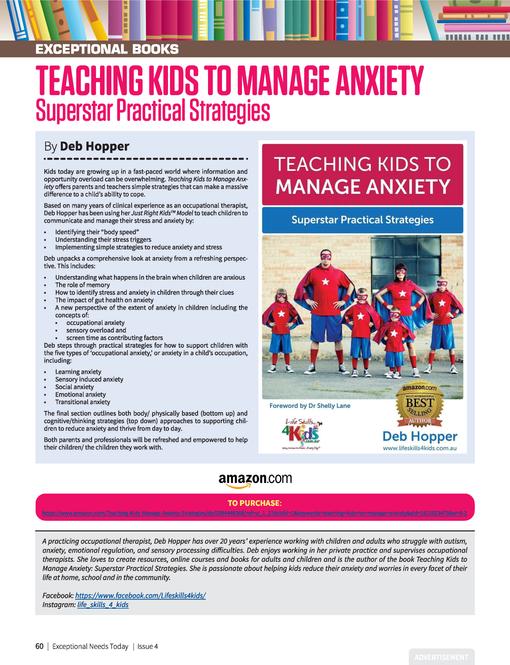
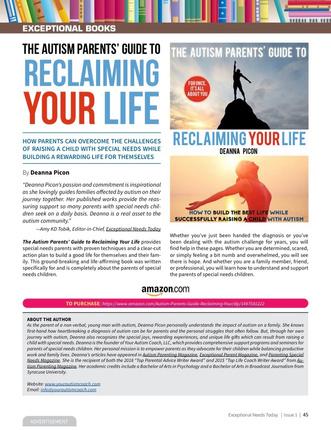

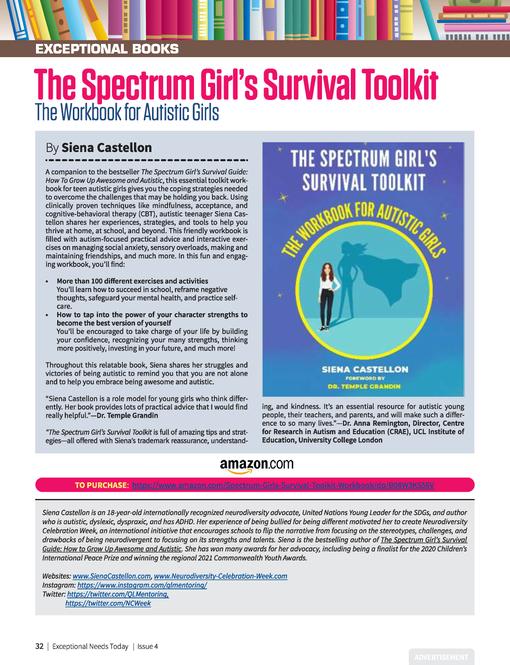
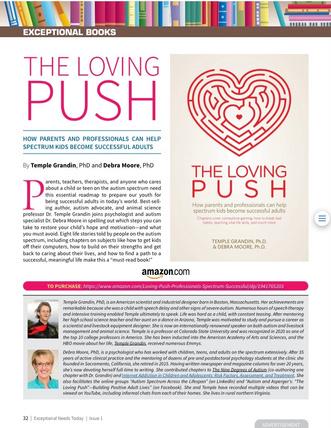


Exceptional Needs Today | Issue 13 | 91 ARTICLE HEADER MEDIA KIT advertising@exceptionalneedstoday.com exceptionalneedstoday.com EXCEPTIONAL NEEDS TODAY H a v e y o u p u b l i s h e d a n E X C E P T I O N A L B O O K ? Exceptional Needs Today Let's tell everyone Ask us about a discounted advertorial
Guardianship— Is it Right For Your Exceptional Needs Family?
 By Ryan F. Platt, MBA, ChFC, ChSNC, CFBS
By Ryan F. Platt, MBA, ChFC, ChSNC, CFBS

92 | Exceptional Needs Today | Issue 13 FINANCIAL FOCUS
THE QUESTION OF GUARDIANSHIP USUALLY OCCURS AROUND THE 18TH BIRTHDAY SINCE, IN MOST STATES, THE LEGAL AGE OF MAJORITY IS 18. THIS MEANS AN INDIVIDUAL WHO ATTAINS THE AGE OF 18 NO LONGER NEEDS PARENTAL CONSENT. THIS LACK OF PARENTAL CONSENT EQUATES TO A LACK OF PARENTAL PROTECTION, AS WELL.
Guardianship is necessary for an individual who does not understand the impact of their decisions and may never develop that ability. The two most common areas to consider are healthcare decisions and money decisions. The questions to ask are:
• Can my child manage their money?
• Can my child understand the impact of healthcare decisions?
• Can my child manage their own Individualized Education Program (IEP)? (If the parent is not the Guardian, then at 18 years old, the school system does not have to invite you to your child’s IEP meeting)
• Do you need to continue to protect your child because of their naiveté?
If your answers to the first three questions are NO, and your answer to the last question is YES, then Guardianship may be the right decision for your child.
Guardianship can come in several varieties:

• Guardian of the Person—making the day-to-day decisions
• Guardianship of the Estate—making the money decisions
• General Guardianship—combines Guardian of the Person and Guardian of the Estate
• Limited Guardianship—only in certain areas of your child’s life will you be their Guardian. This arrangement allows your child to keep some of their rights (i.e., driving privileges).
The Guardianship Process begins by visiting your local clerk of courts. It is with the clerk of courts that you will complete the application and assemble the proper paperwork for a Guardianship hearing to be scheduled. You should begin this process five to six months before your child reaches the age of 18.
If you are not prepared to declare your child Guardianship ready, but you still want to help them in certain situations, you should consider Powers of Attorney. A Power of Attorney is a written document in which one person (your child) appoints another person (you) to act on their behalf as their agent.
You should consider two types of Powers of Attorney:
• A Durable Power of Attorney will allow the agent (you) to help with financial decisions in the event
your child is in a situation where they are unable to make a decision.
• A Health Care Power of Attorney allows your child to empower you with decisions regarding their healthcare or medical treatment. It becomes active when they are unable to make decisions or unable to communicate their intentions regarding their treatment.
For the Power of Attorney to be legally enforceable, your child must have an understanding of the document they are signing, and the fact they are giving you legal right to act on their behalf in the event they need your help sometime in the future. If they do not have the ability to understand they are giving you this right, the Power of Attorney may not be the correct option; Guardianship would once again be a consideration.
Another alternative to Guardianship is Supported Decision Making. Supported Decision Making is the idea that individuals with Intellectual and Developmental Disabilities should make their own decisions with the support of a team of people. Supported Decision Making allows the individual with legal capacity to make their own decisions. They will use a team of people, almost like a board of advisors, to help them make these decisions.
This team should consist of family members and professionals such as an attorney, financial planner, and social services expert. The team does not have any legal standing or responsibility; they are used as a sounding board. The individual with the diagnosis and their team will enter into an agreement that formalizes this relationship. Support-
FINANCIAL FOCUS
Exceptional Needs Today | Issue 13 | 93
ed Decision Making is growing in popularity in the United States. However, it is only legally recognized in a handful of states.

Guardianship is an important decision and should be discussed with your loved one (if they have the capacity) before moving forward.
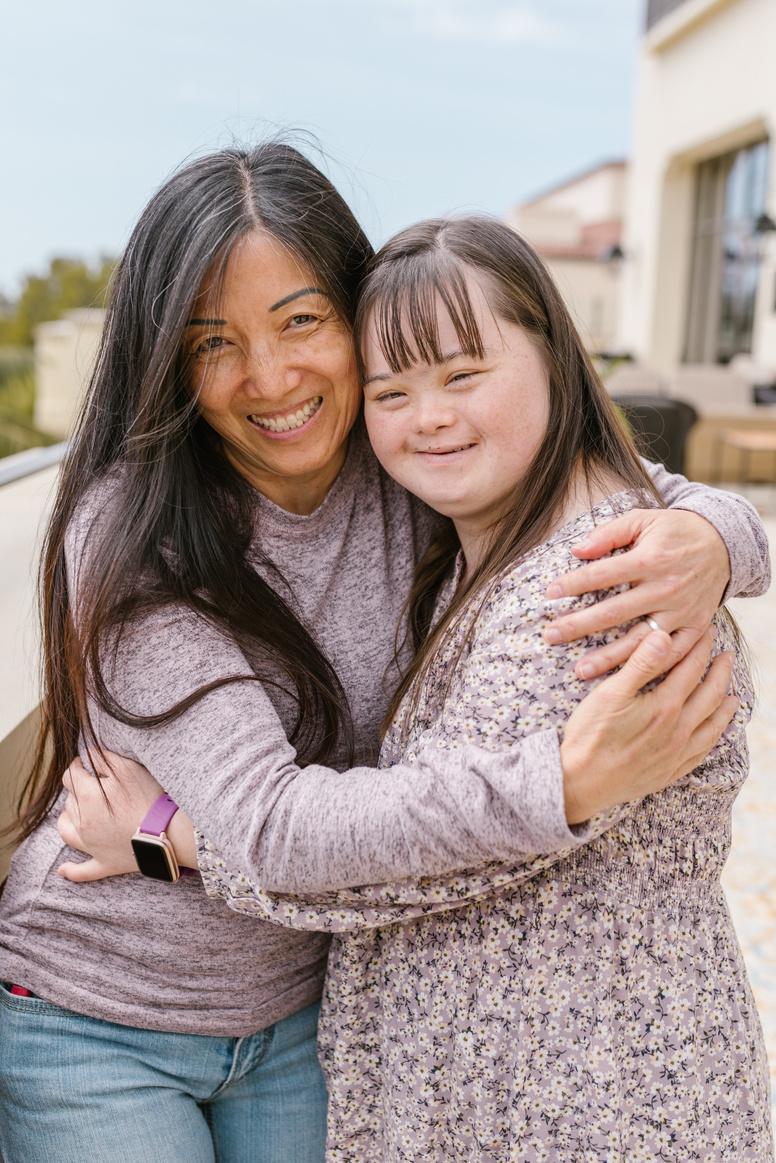
Resource
https://supporteddecisions.org/about-supported-decision-making/
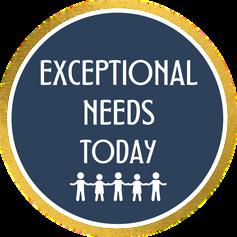

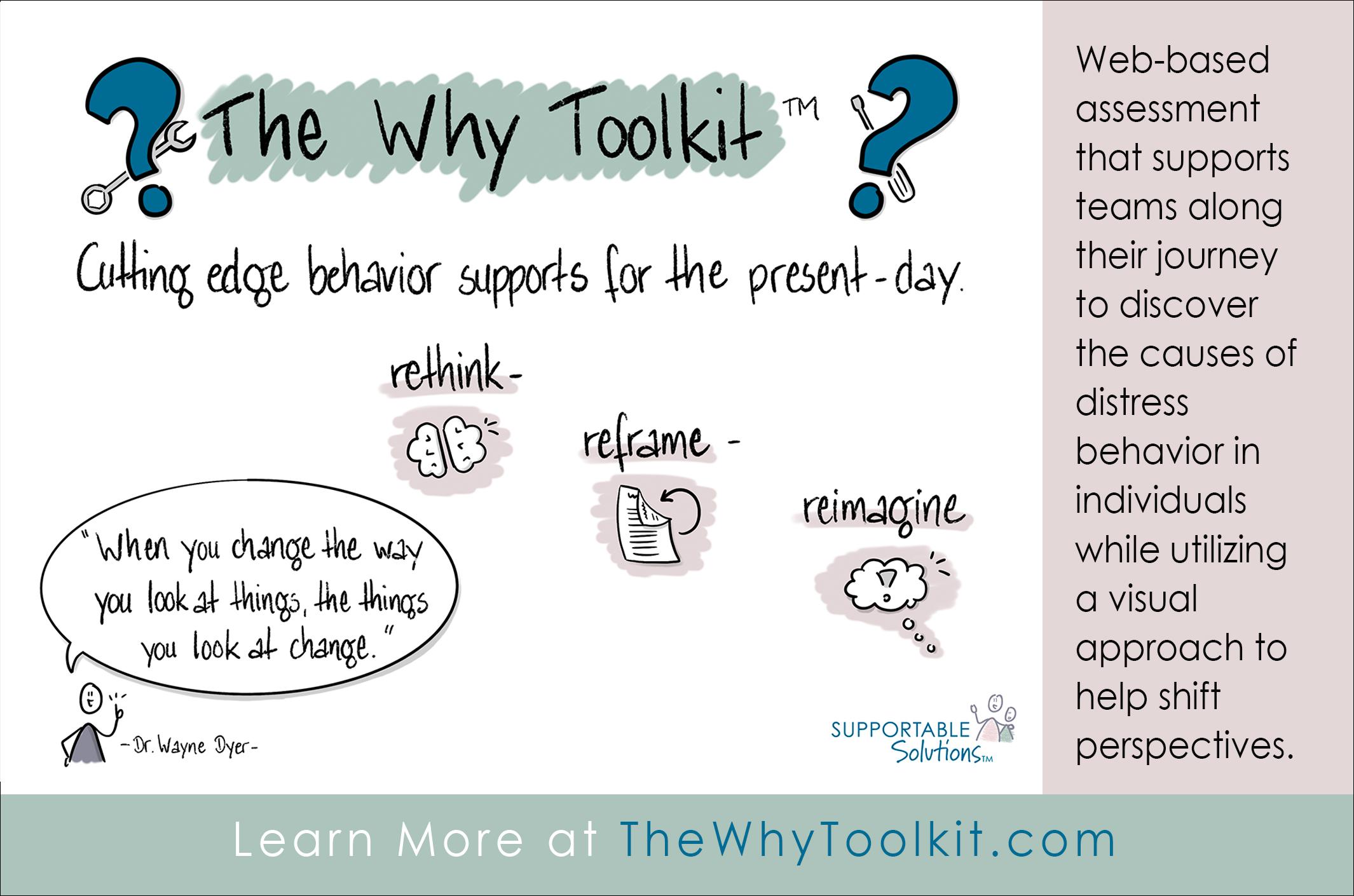
Ryan F. Platt, MBA, ChFC, ChSNC, CFBS, is a registered representative of and offers securities, investment advisory, and financial planning through MML Investors Services, LLC, Member SIPC. Securities and investment advisory services offered through qualified registered representatives of MML Investors Services, LLC, Member SIPC. A Special Needs Plan is not a subsidiary or affiliate of MML Investors Services, LLC or its affiliated companies. This article is not a recommendation or endorsement of any products.
Website: http://www.aspecialneedsplan.com


Phone: 704-326-7910
Location: 101 N. McDowell Street, Suite 120 Charlotte, NC 28204
Working together to promote awareness, acceptance, and inclusiveness for all Exceptional Needs Today WWW.EXCEPTIONALNEEDSTODAY.COM 94 | Exceptional Needs Today | Issue 13 FINANCIAL FOCUS
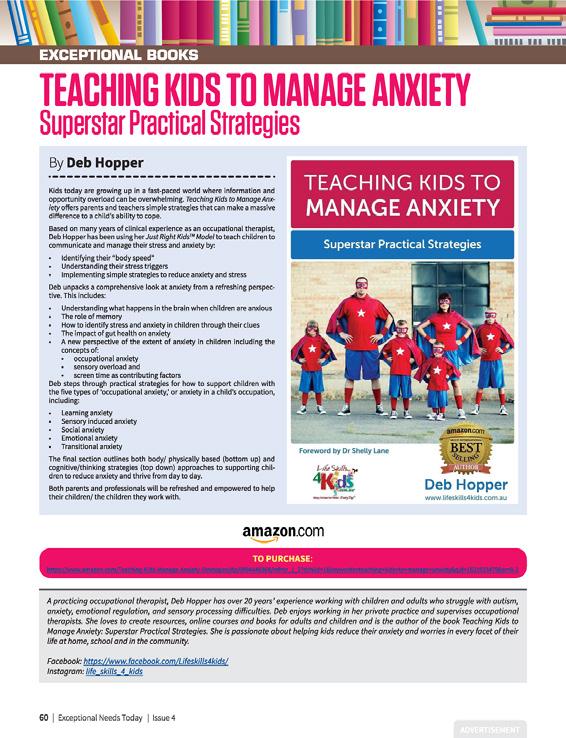
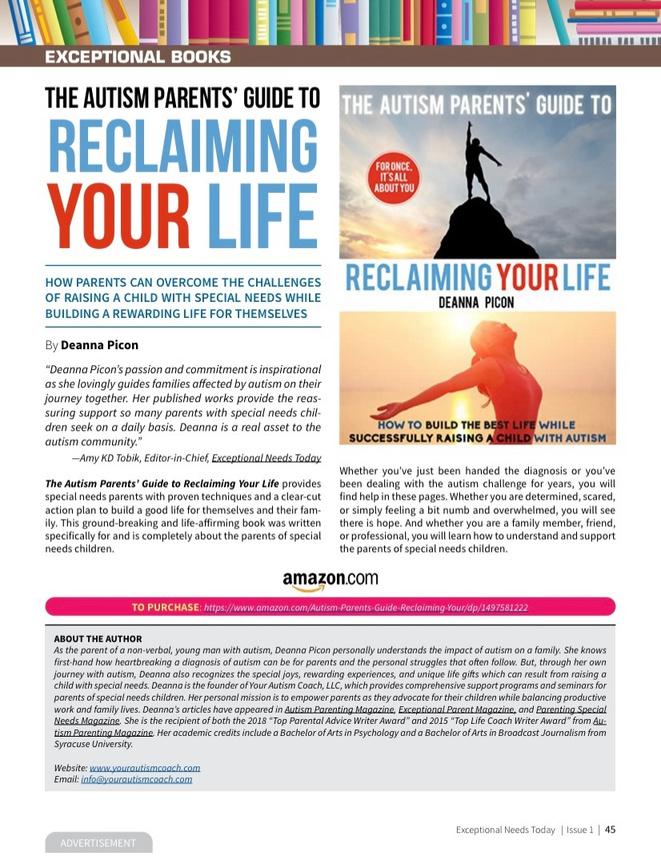
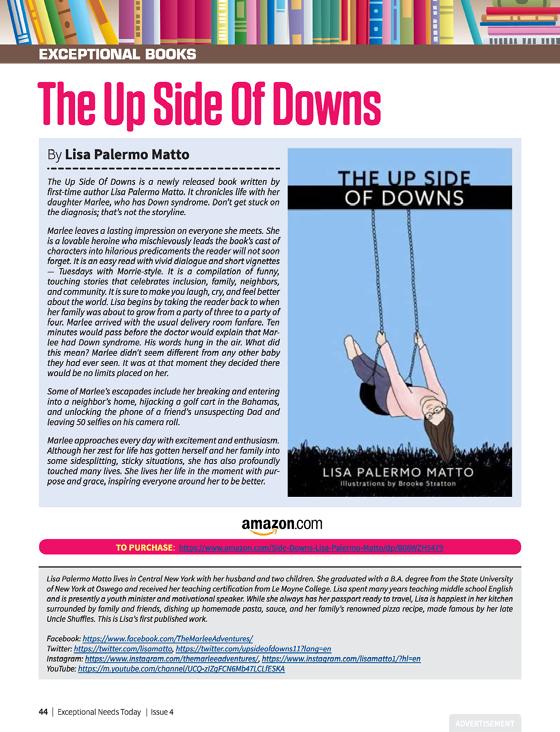

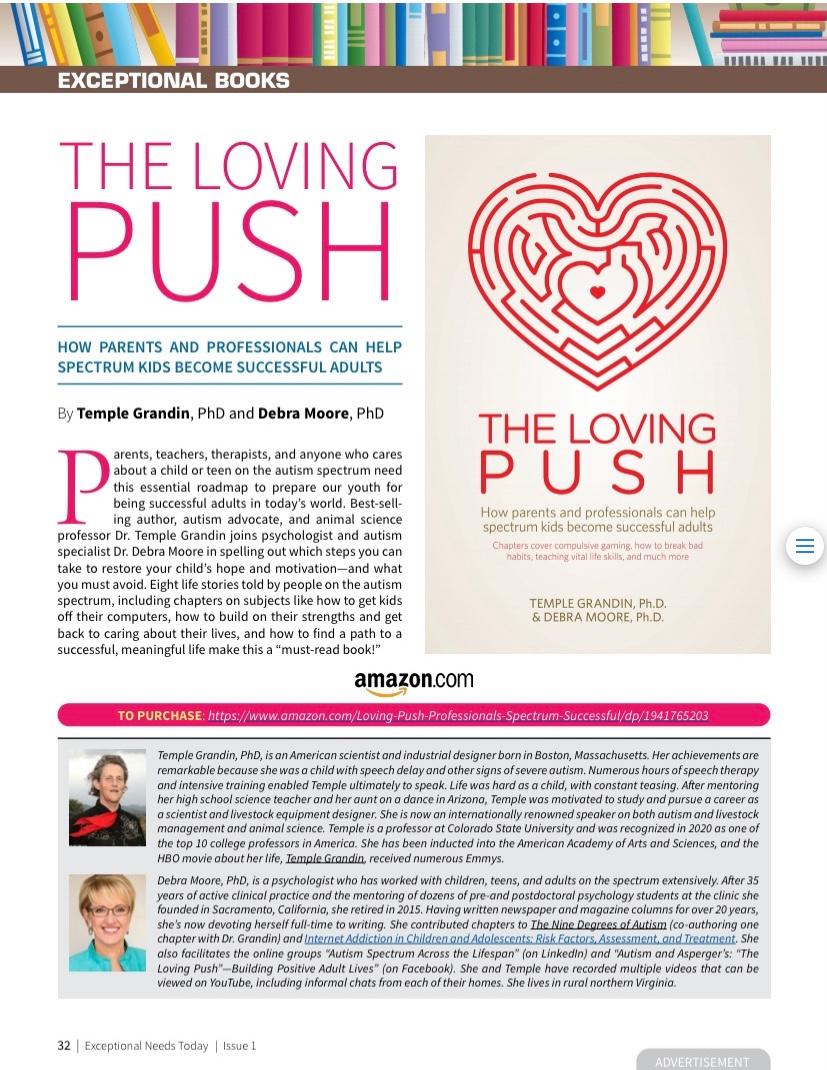


MEDIA KIT advertising@exceptionalneedstoday.com exceptionalneedstoday.com EXCEPTIONAL NEEDS TODAY H a v e y o u p u b l i s h e d a n E X C E P T I O N A L B O O K ? Exceptional Needs Today Let's tell everyone Ask us about a discounted advertorial



























 By Dr. Ronald I. Malcolm, EdD
By Dr. Ronald I. Malcolm, EdD















 By Meshell Baylor, MHS
By Meshell Baylor, MHS



 By Nicole Moehring
By Nicole Moehring













 By Karen Kaplan, MS
By Karen Kaplan, MS












 By Kate C. Wilde
By Kate C. Wilde

 By Ron Sandison, MDiv
By Ron Sandison, MDiv














 By Amy Wagenfeld, PhD, OTR/L, SCEM, EDAC, FAOTA
By Amy Wagenfeld, PhD, OTR/L, SCEM, EDAC, FAOTA










 By Dr. Mary H. Jones, MD, FAAP
By Dr. Mary H. Jones, MD, FAAP








 By John Civita, MS Ed
By John Civita, MS Ed



 By Ginger Healy, MSW, LCSW
By Ginger Healy, MSW, LCSW


 By Guy Stephens
By Guy Stephens


 By Dr. Rhoda Bernard, EdD
By Dr. Rhoda Bernard, EdD











 By Carli Haskovec, MA, Ed.S.
By Carli Haskovec, MA, Ed.S.















 By Richard Schreiber
By Richard Schreiber





 By Laura A. Ryan, OT, OTR, OTD
By Laura A. Ryan, OT, OTR, OTD







 By Dr. Ronald I. Malcolm, EdD
By Dr. Ronald I. Malcolm, EdD




 By Dr. Chris Abildgaard, EdD, LPC, NCSP, NCC
By Dr. Chris Abildgaard, EdD, LPC, NCSP, NCC











 By Ryan F. Platt, MBA, ChFC, ChSNC, CFBS
By Ryan F. Platt, MBA, ChFC, ChSNC, CFBS












































